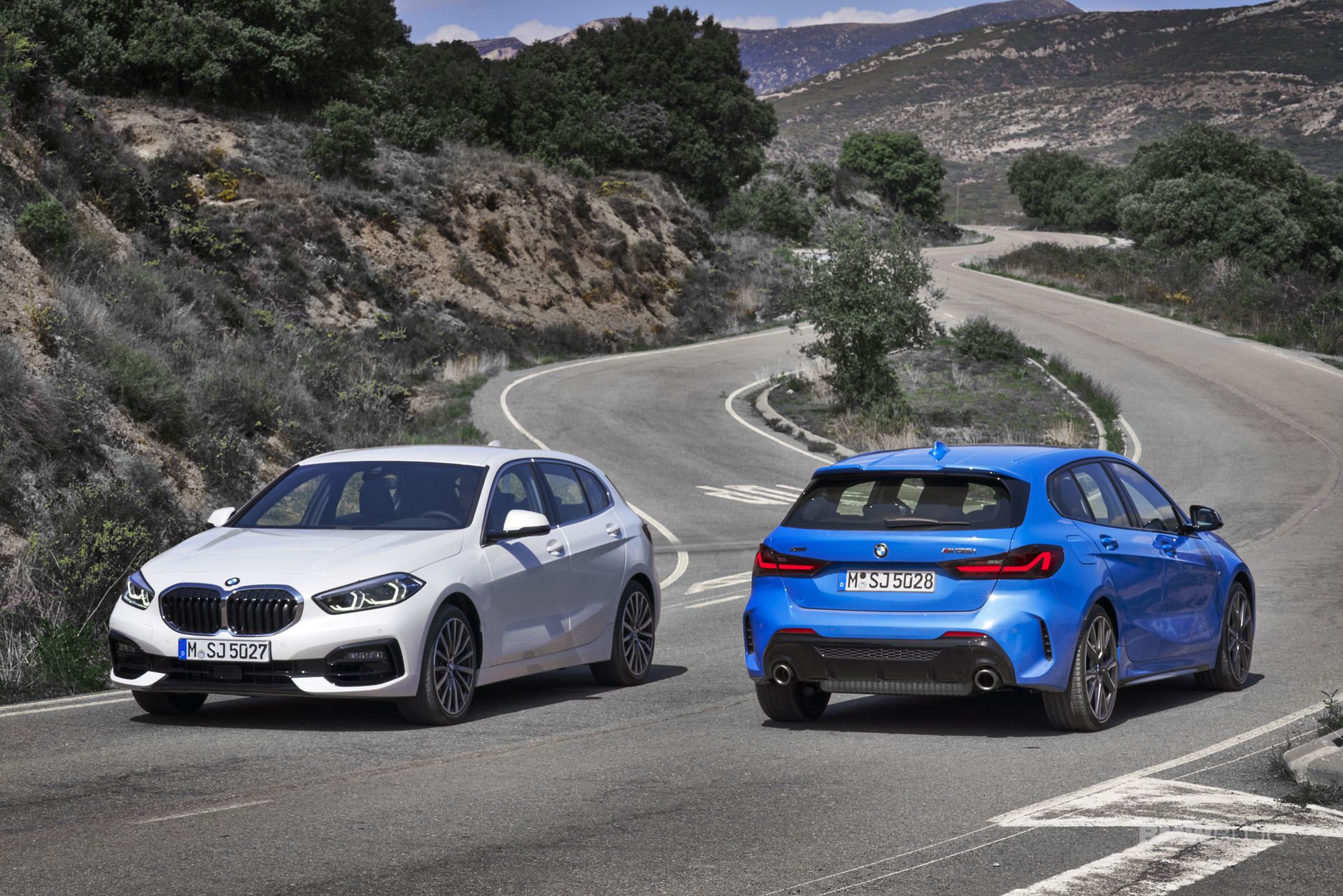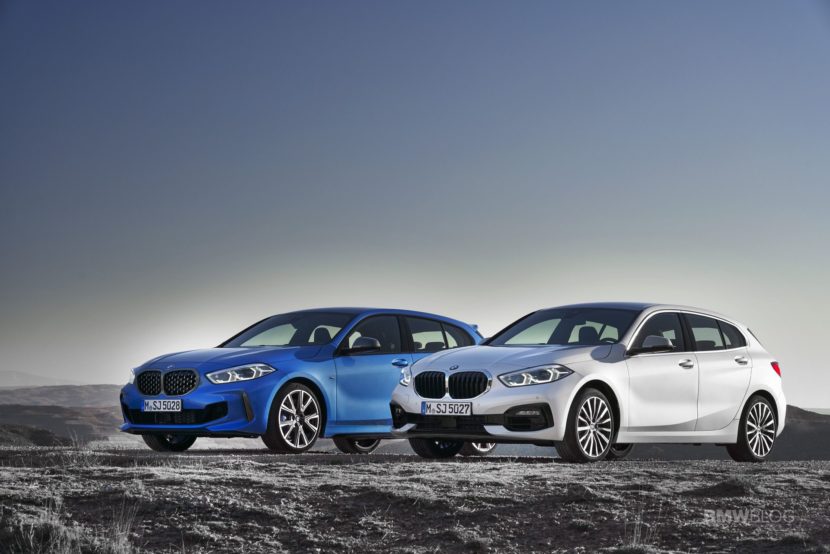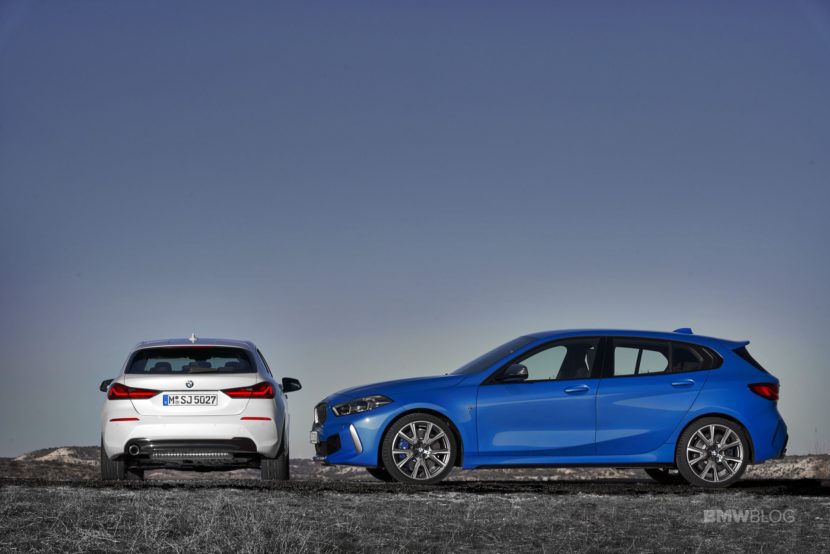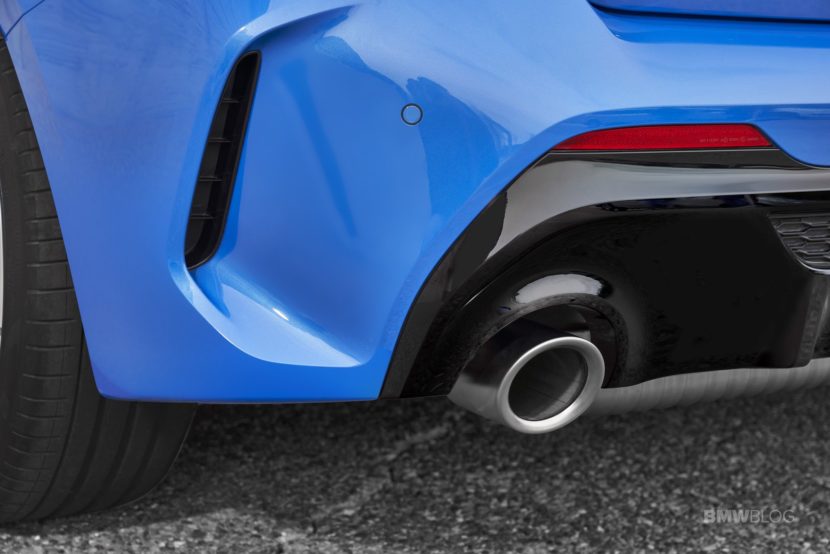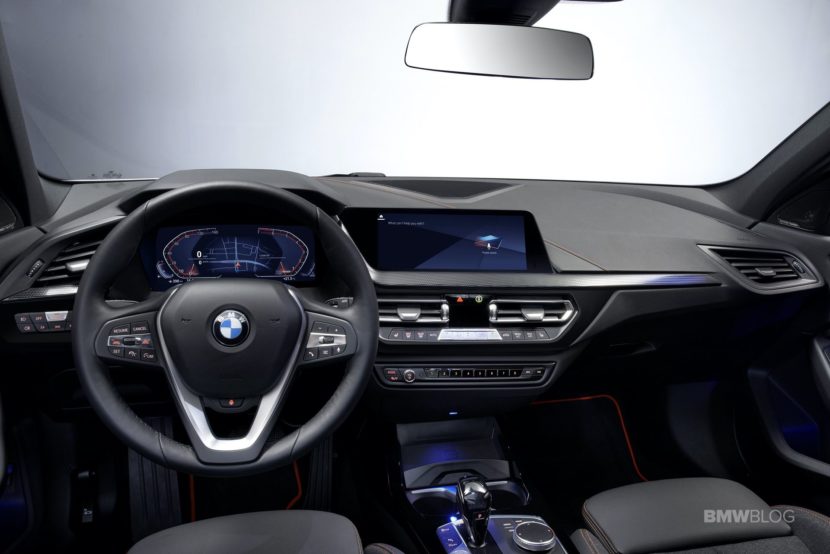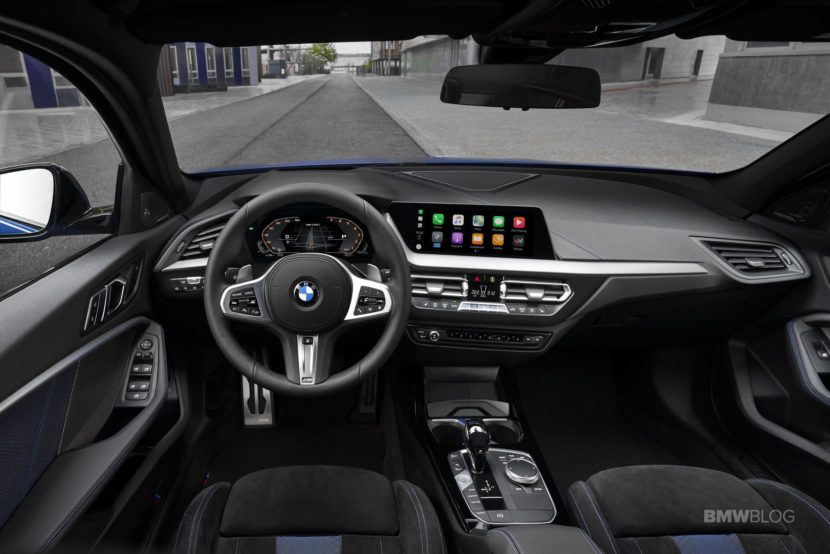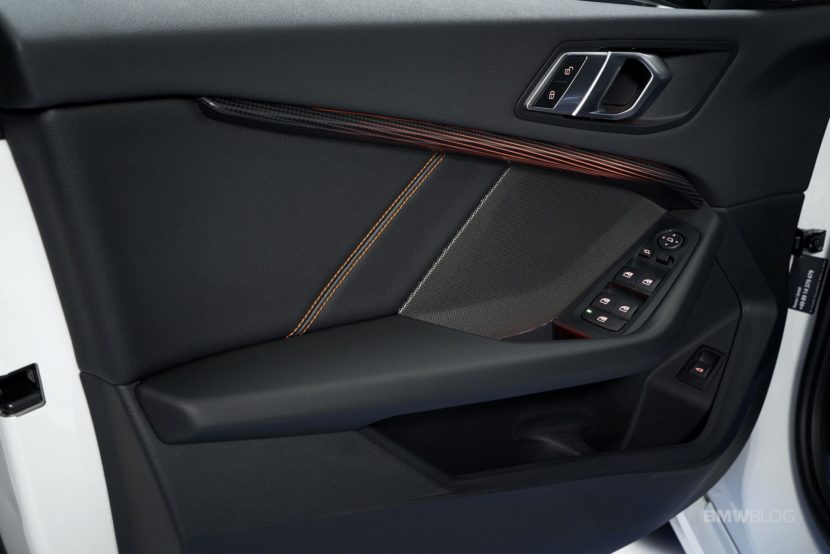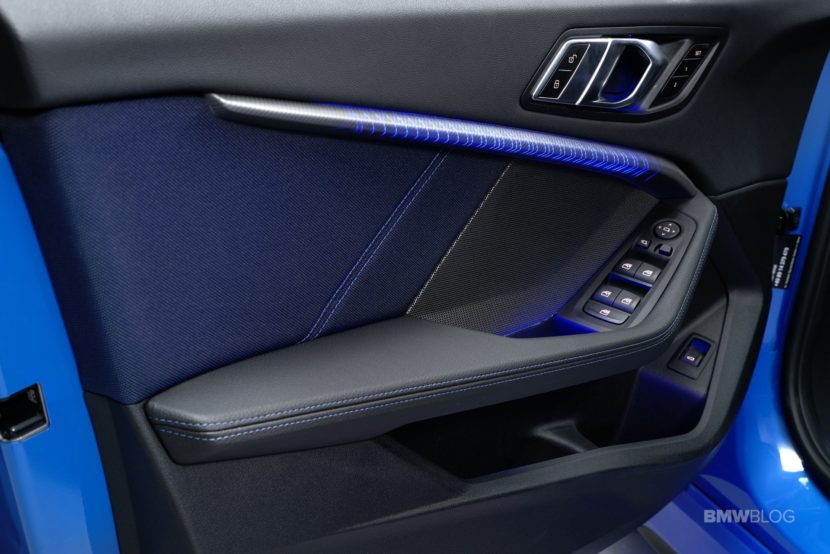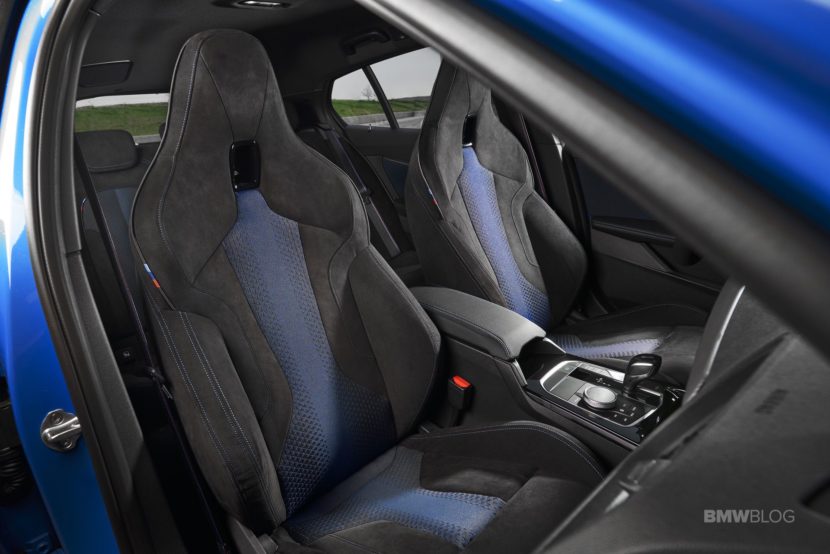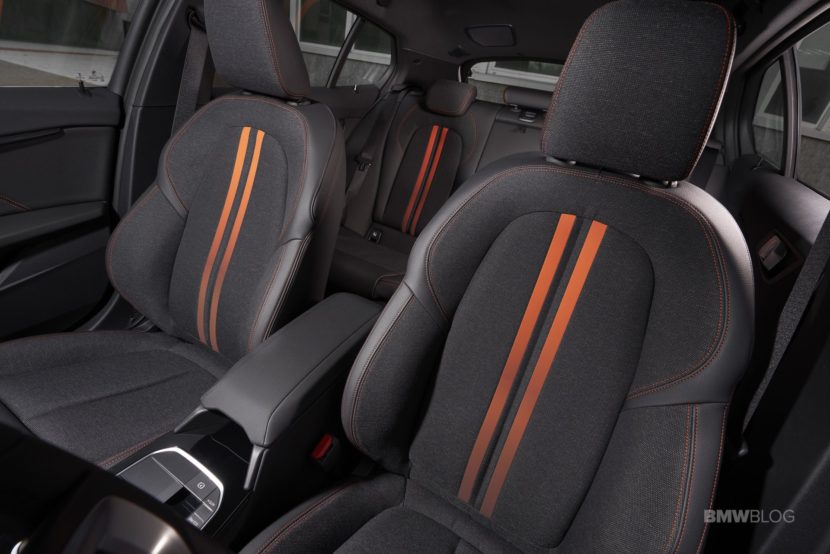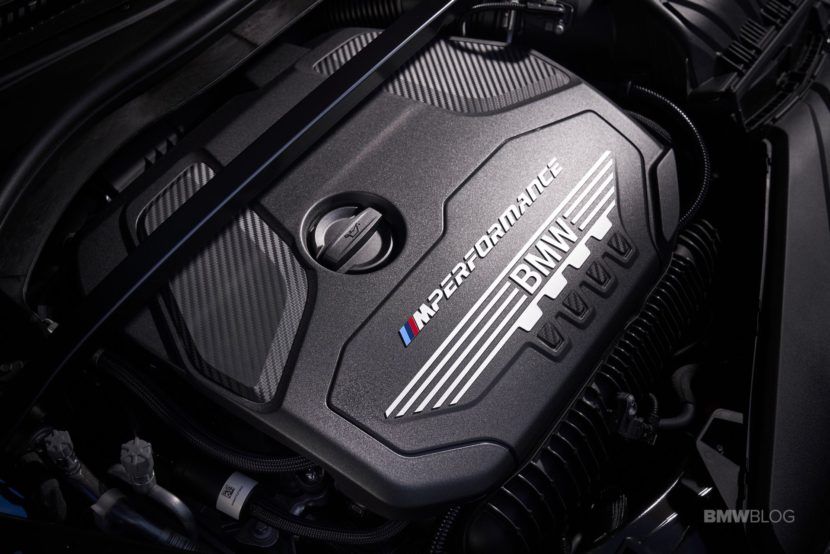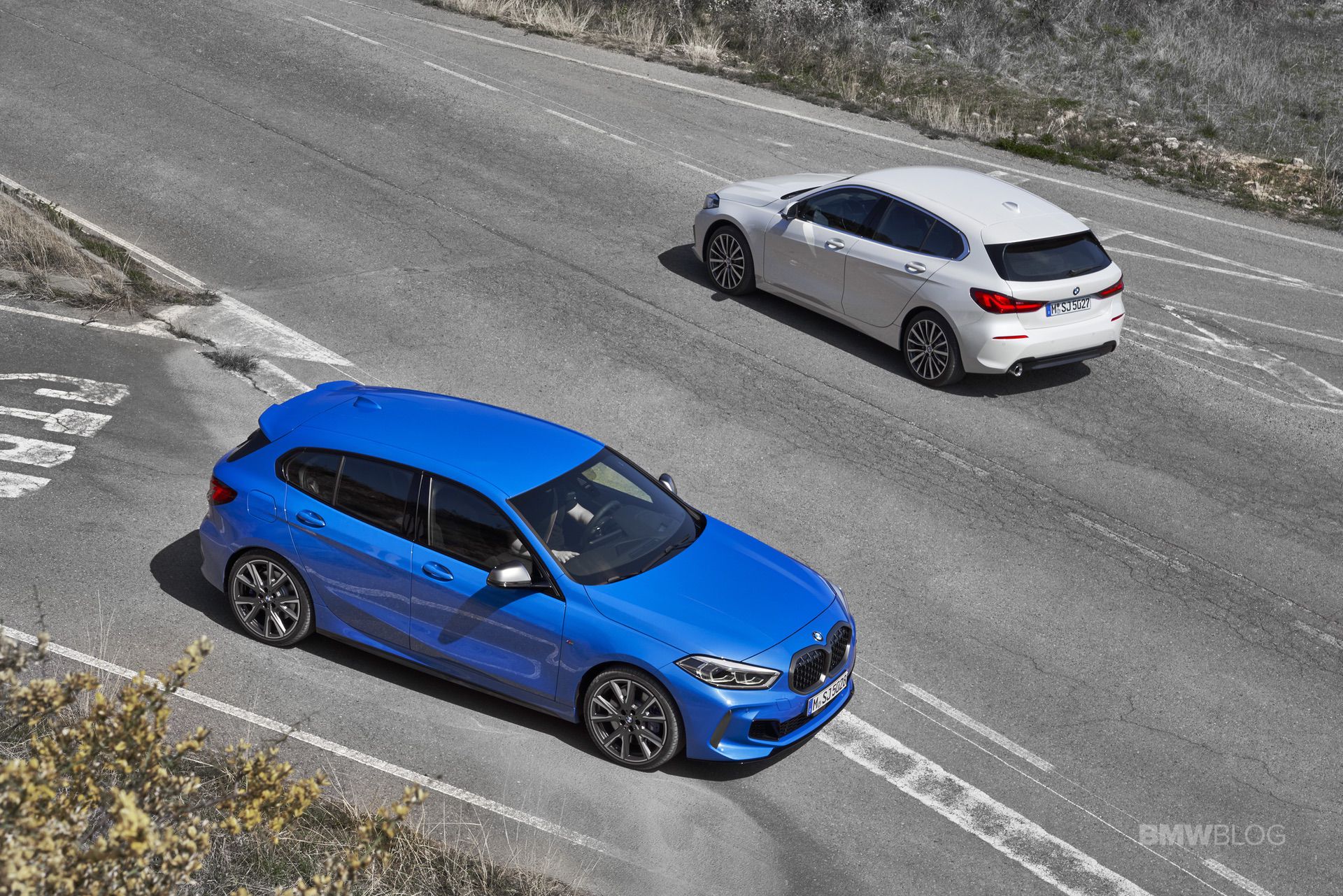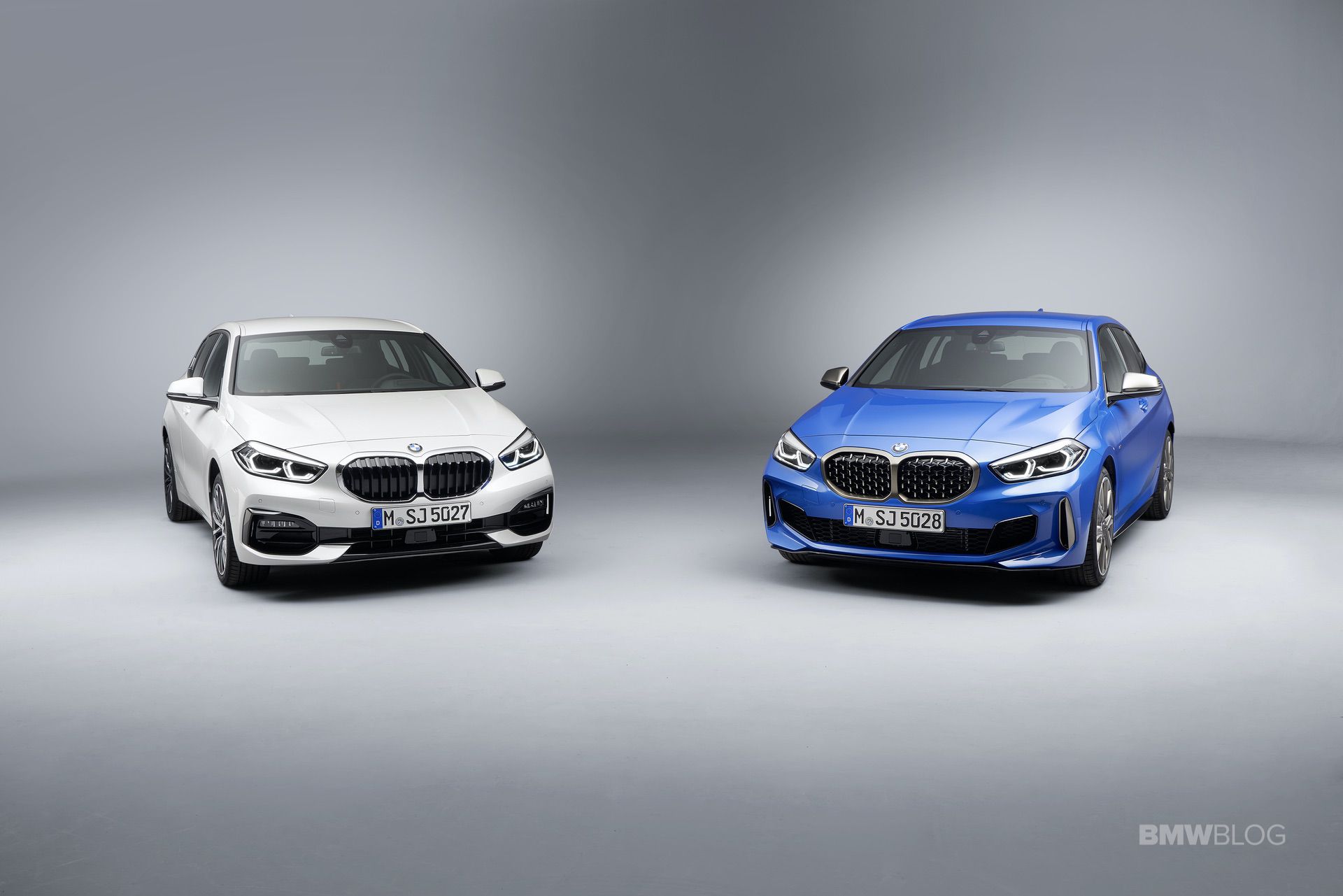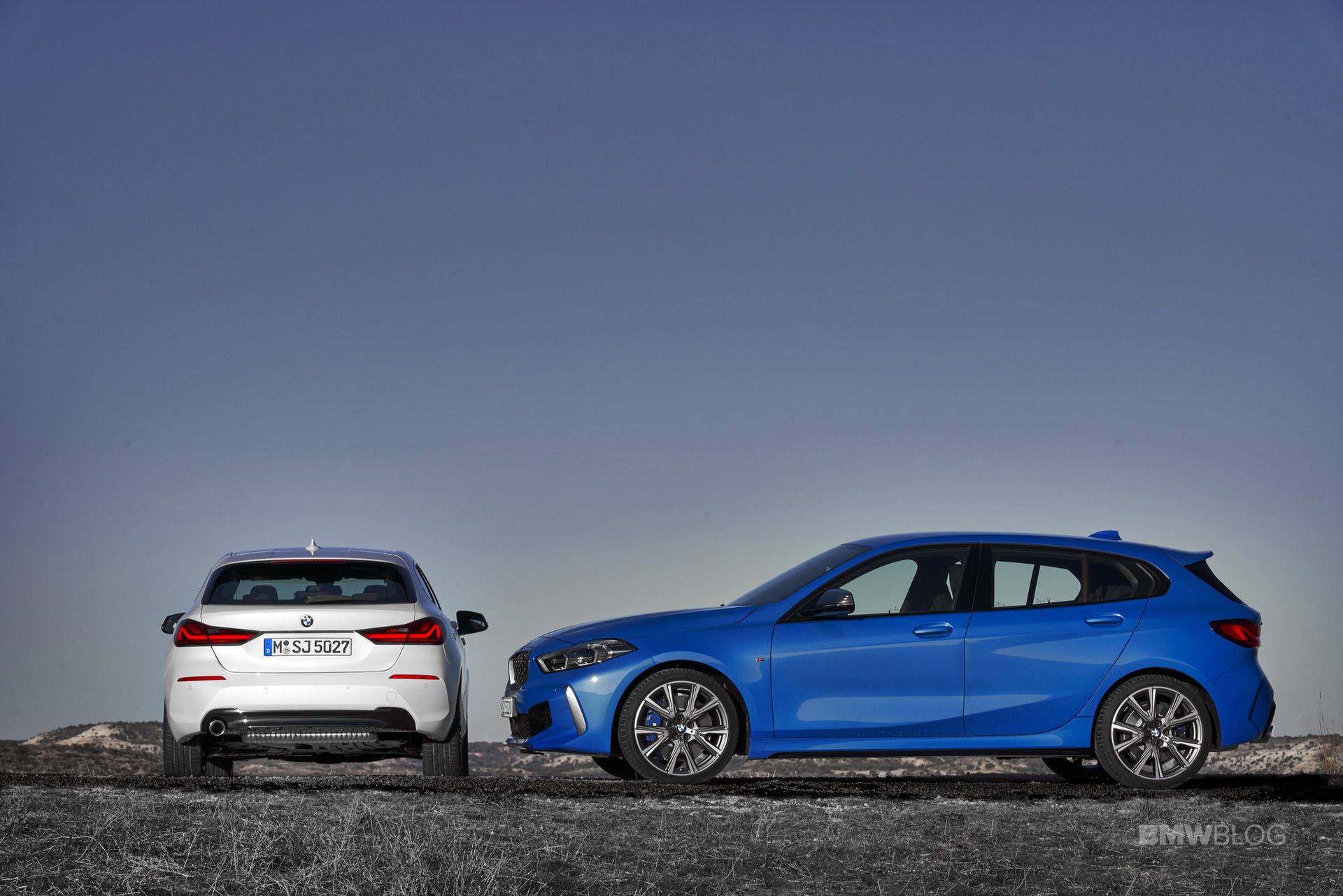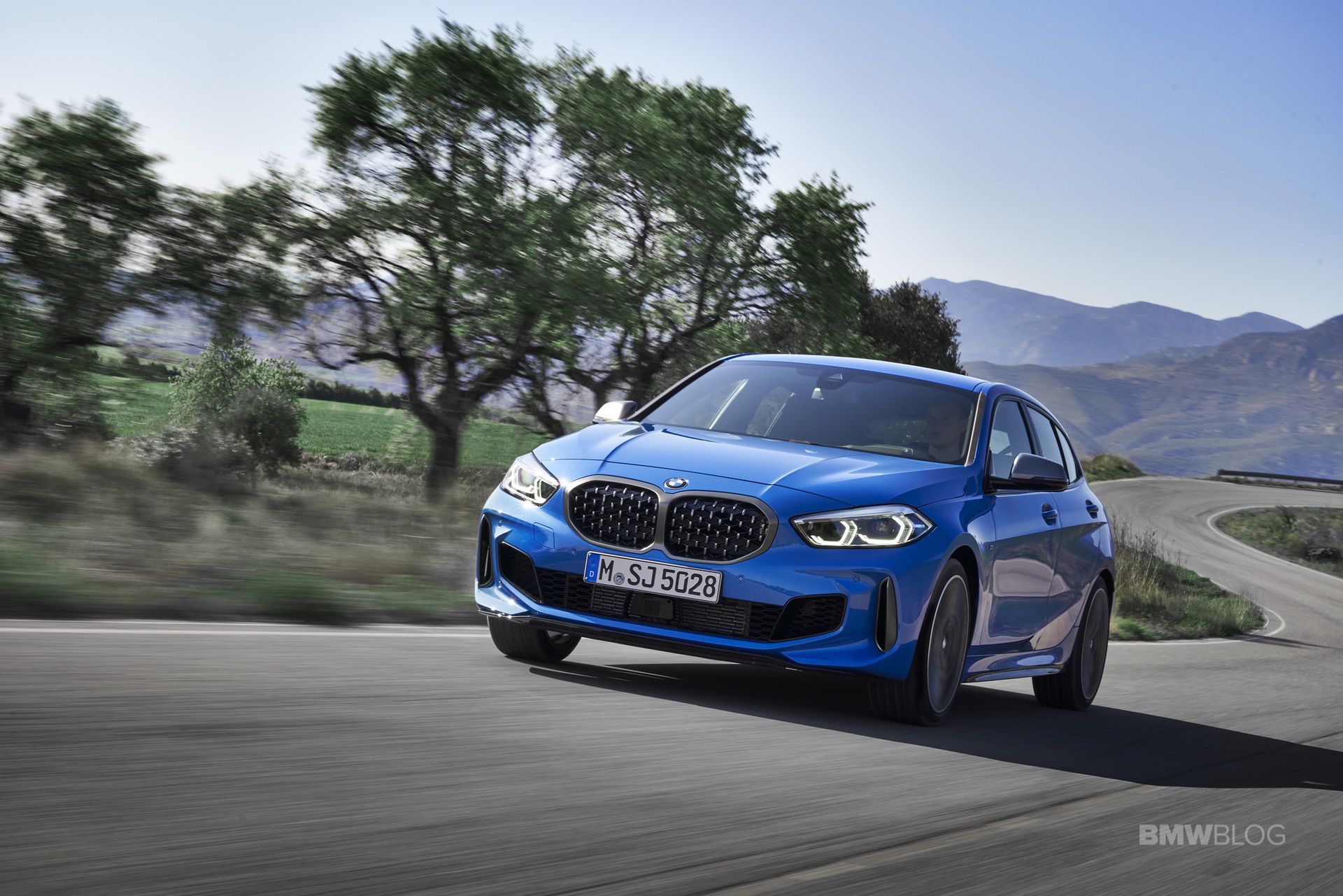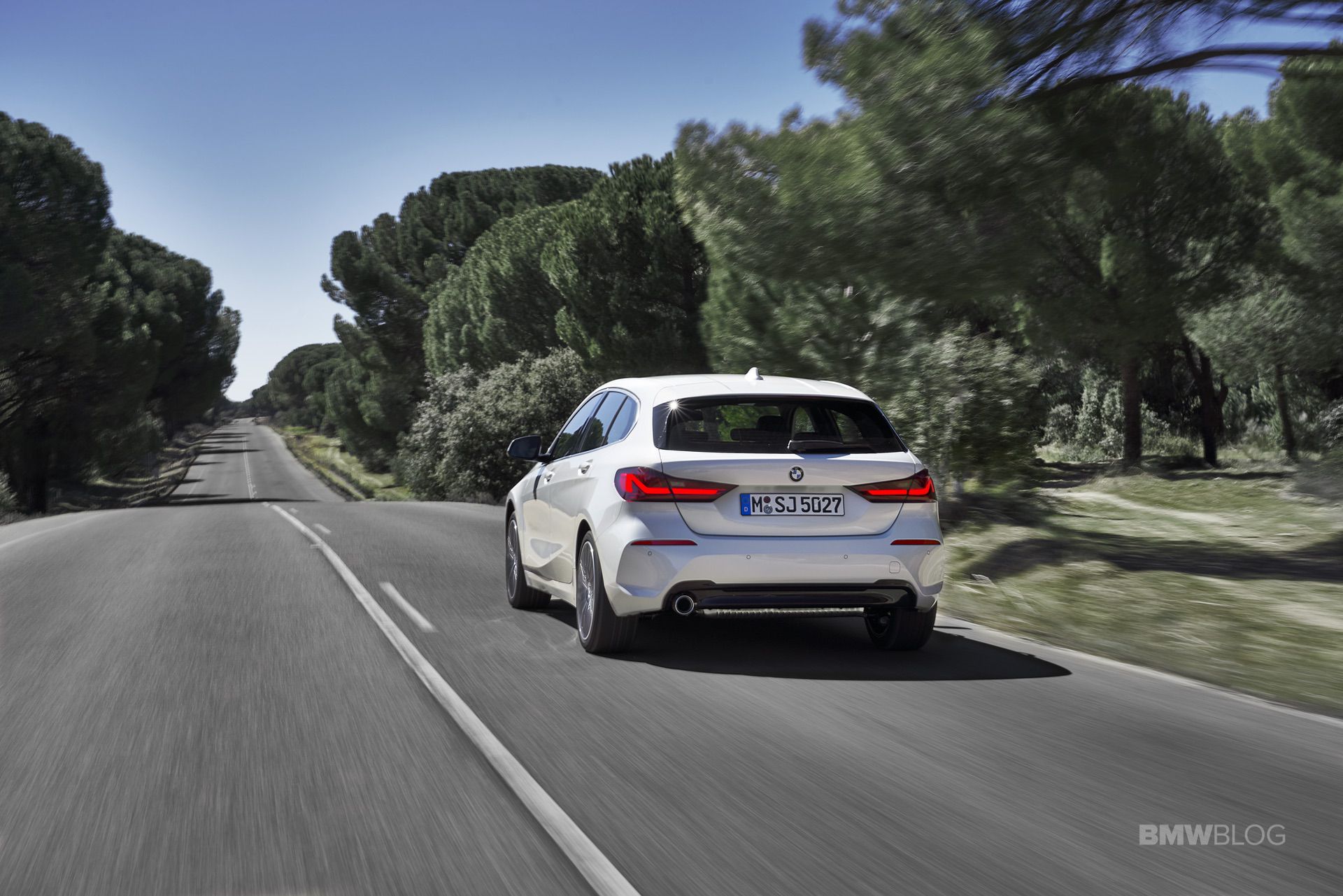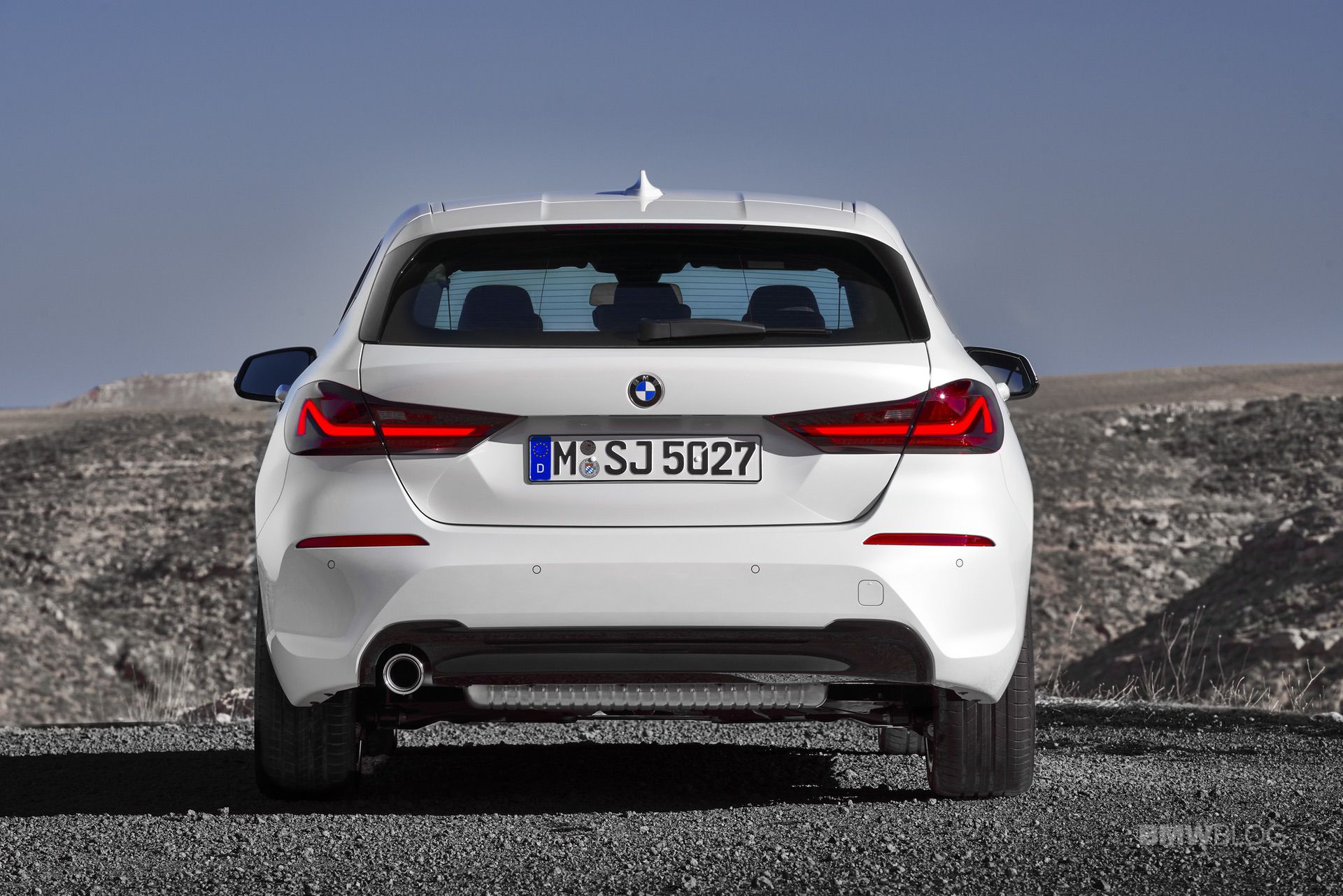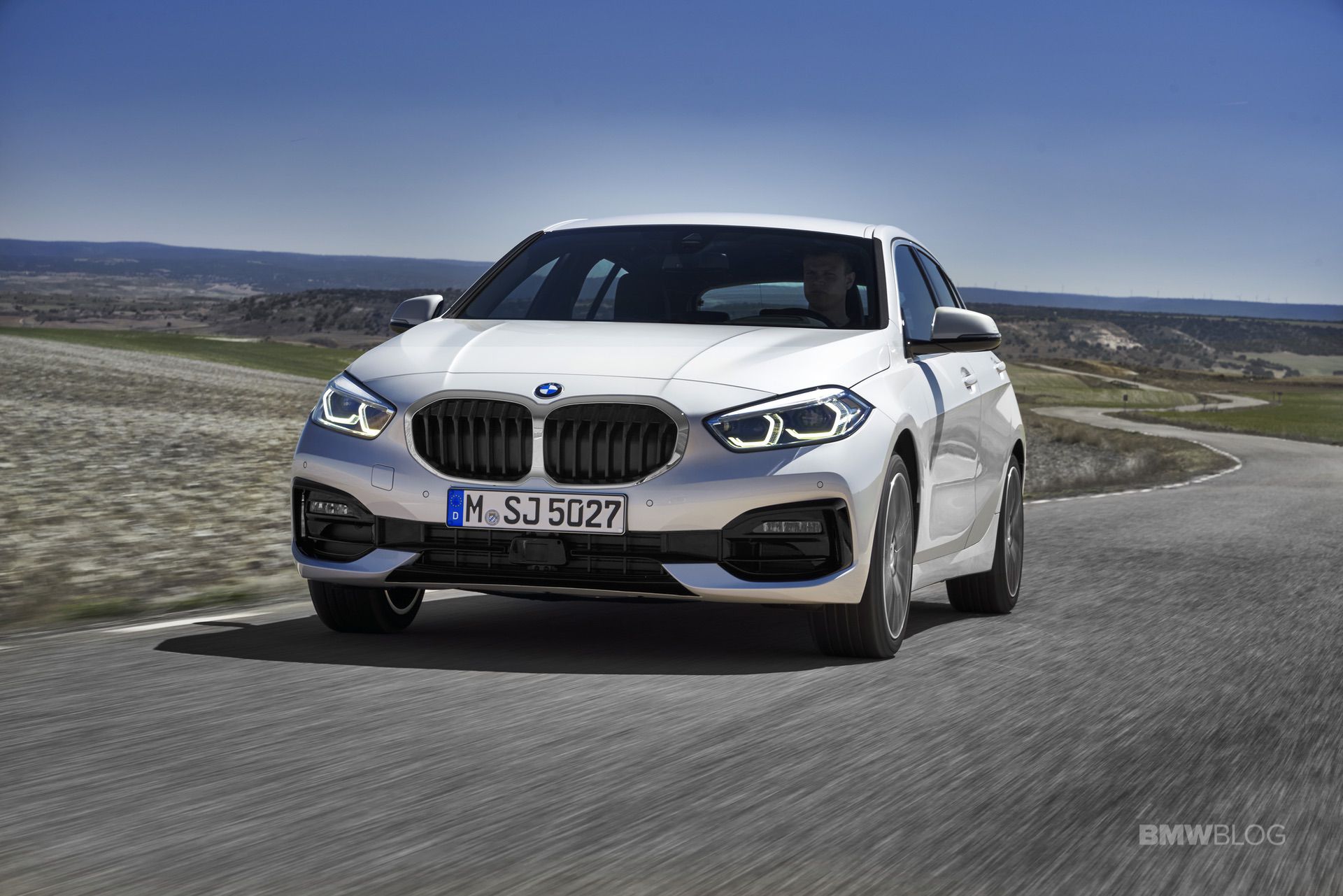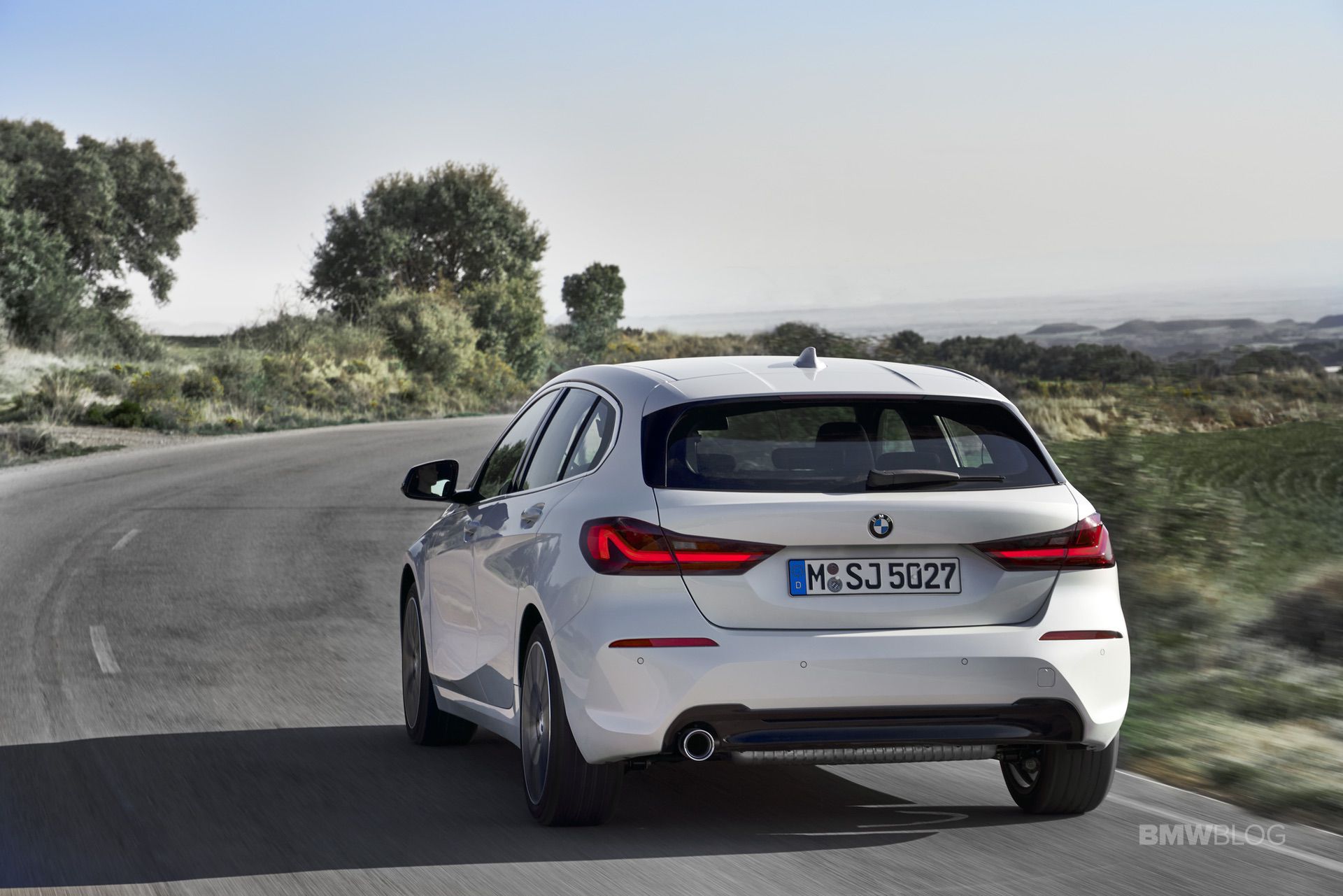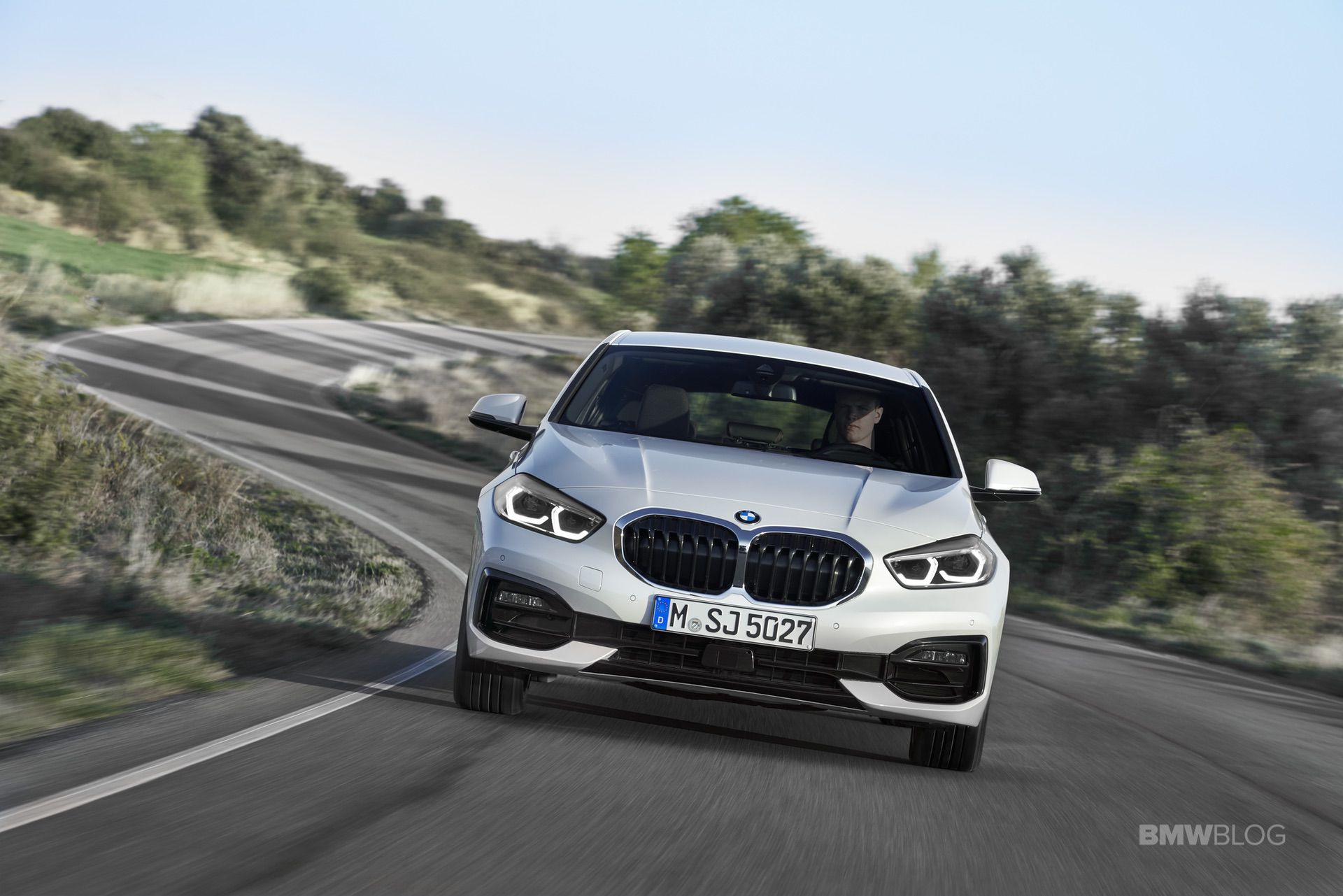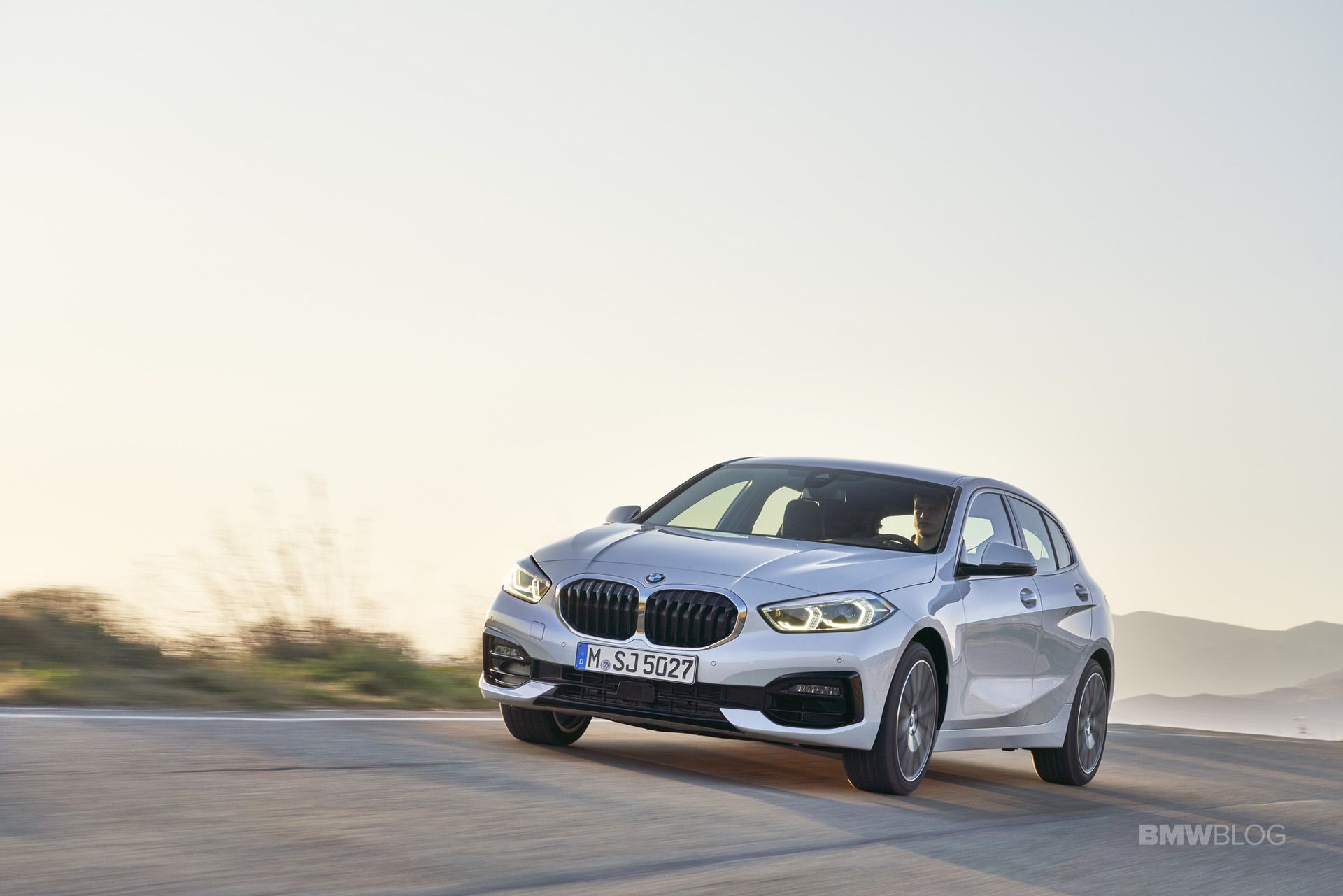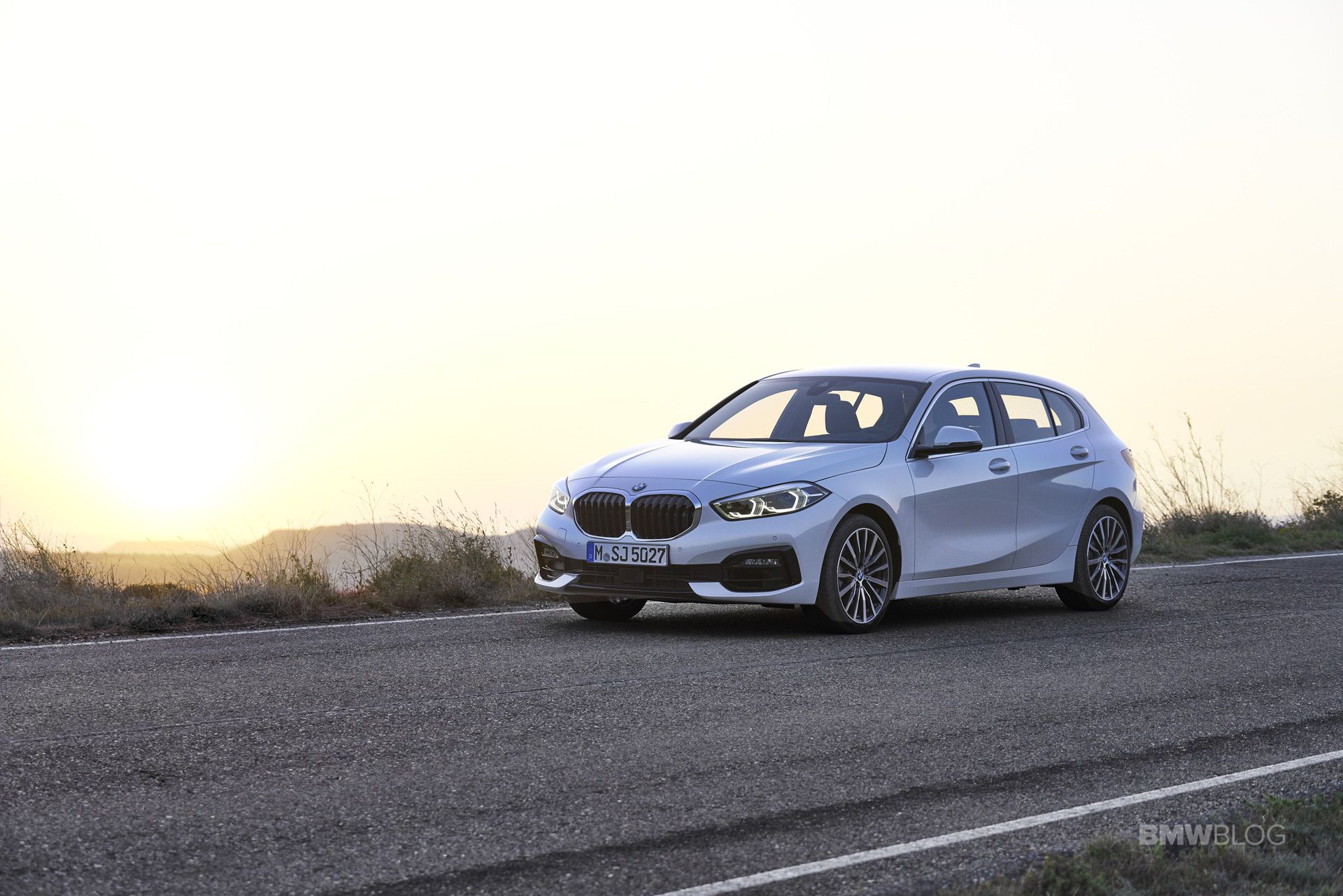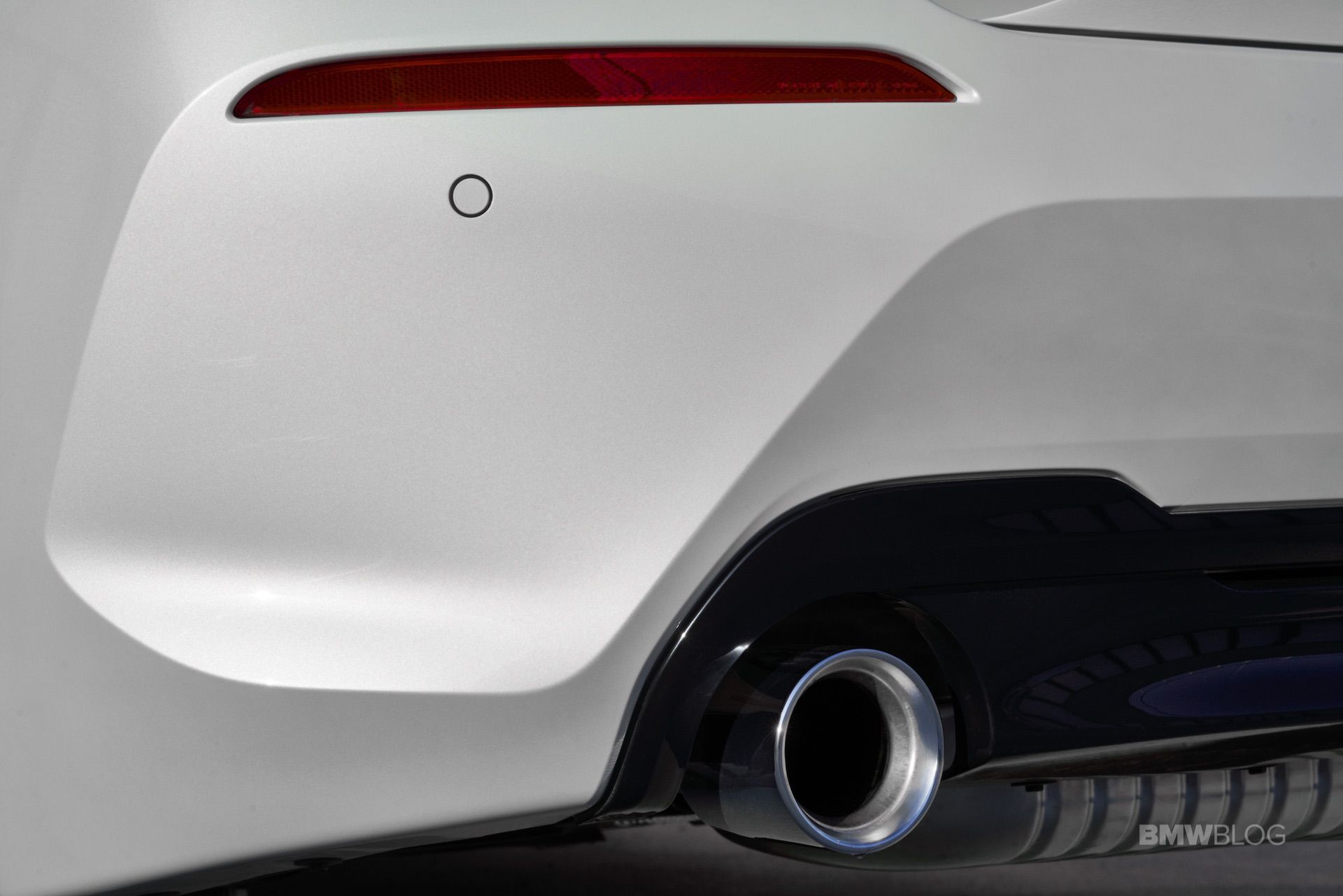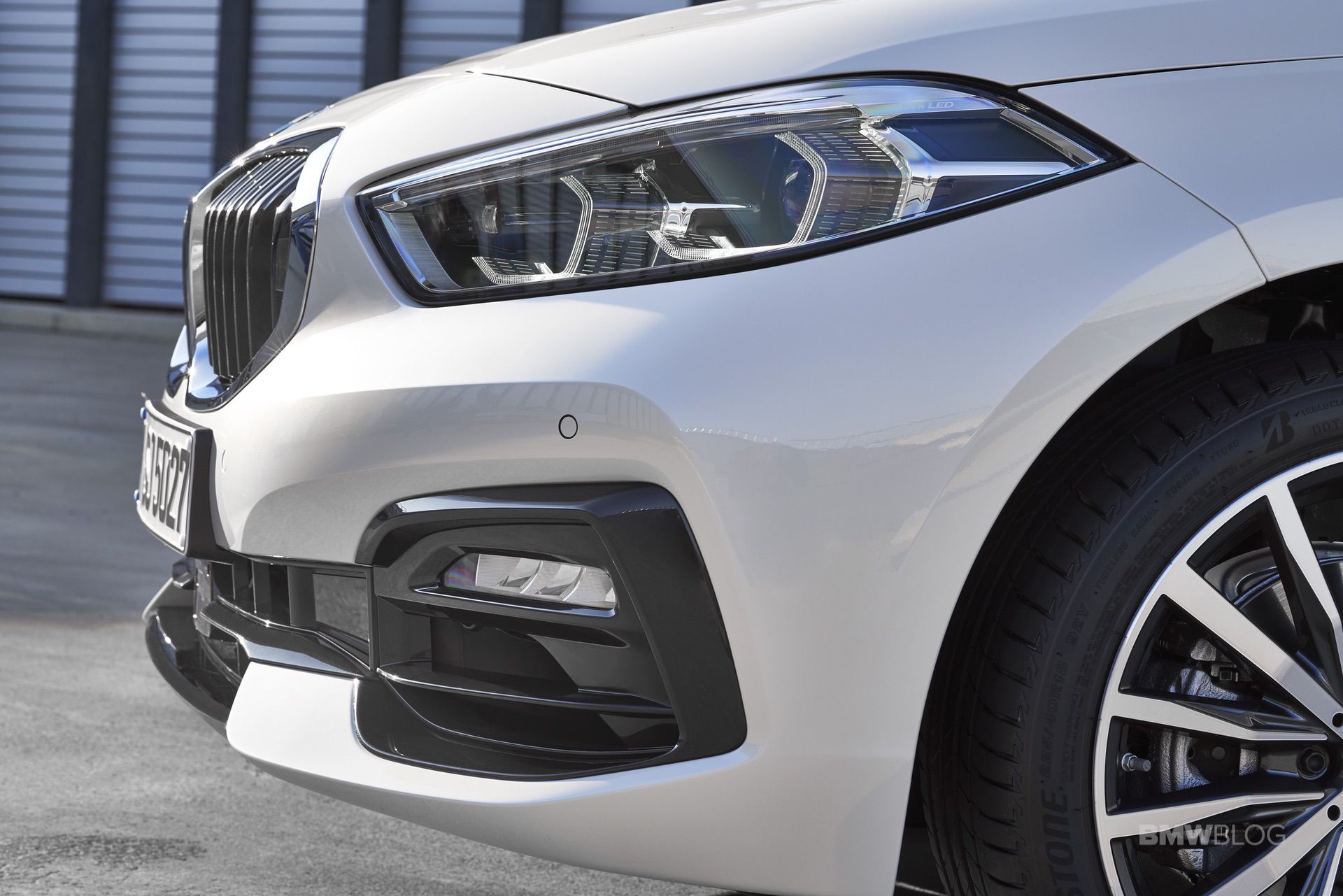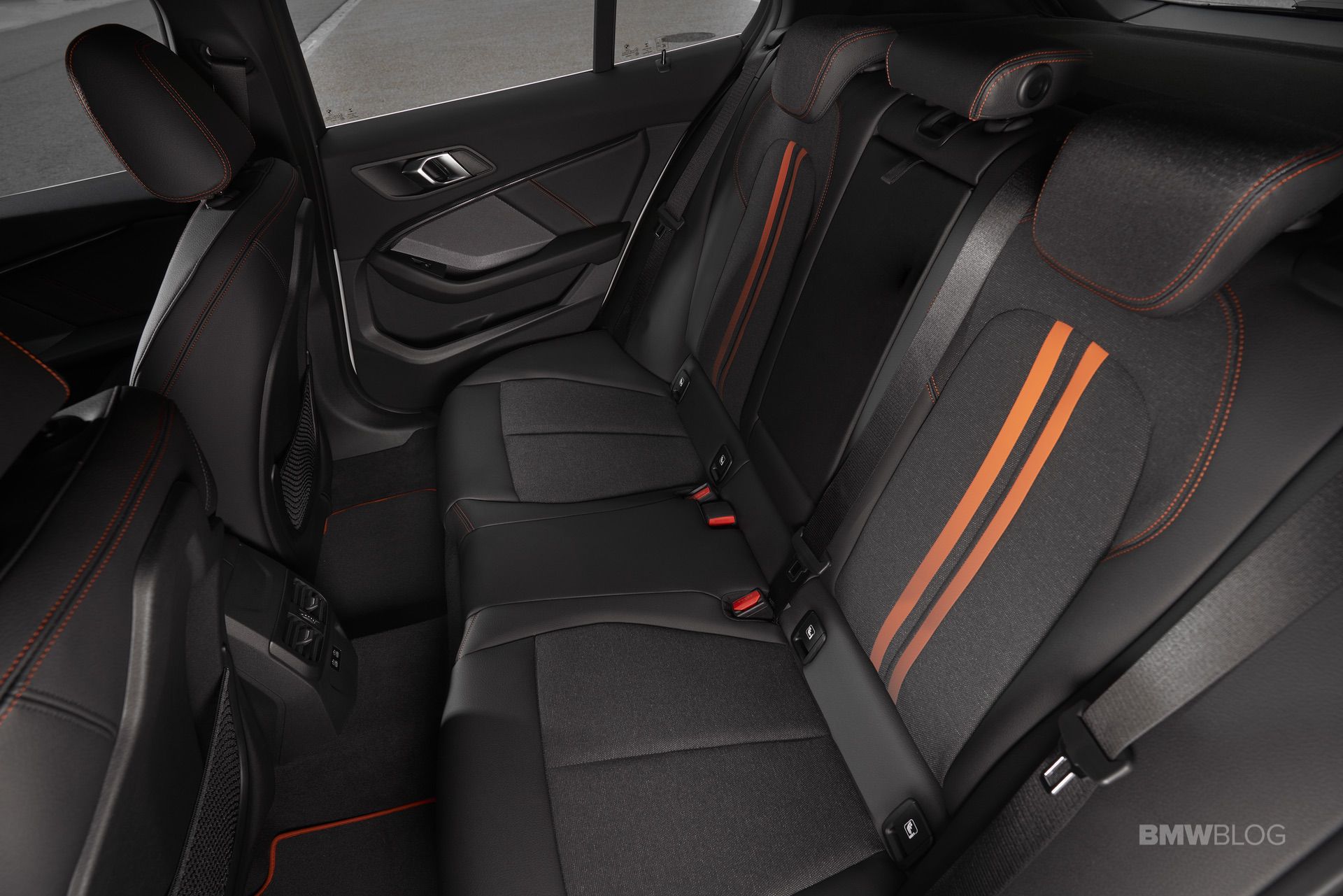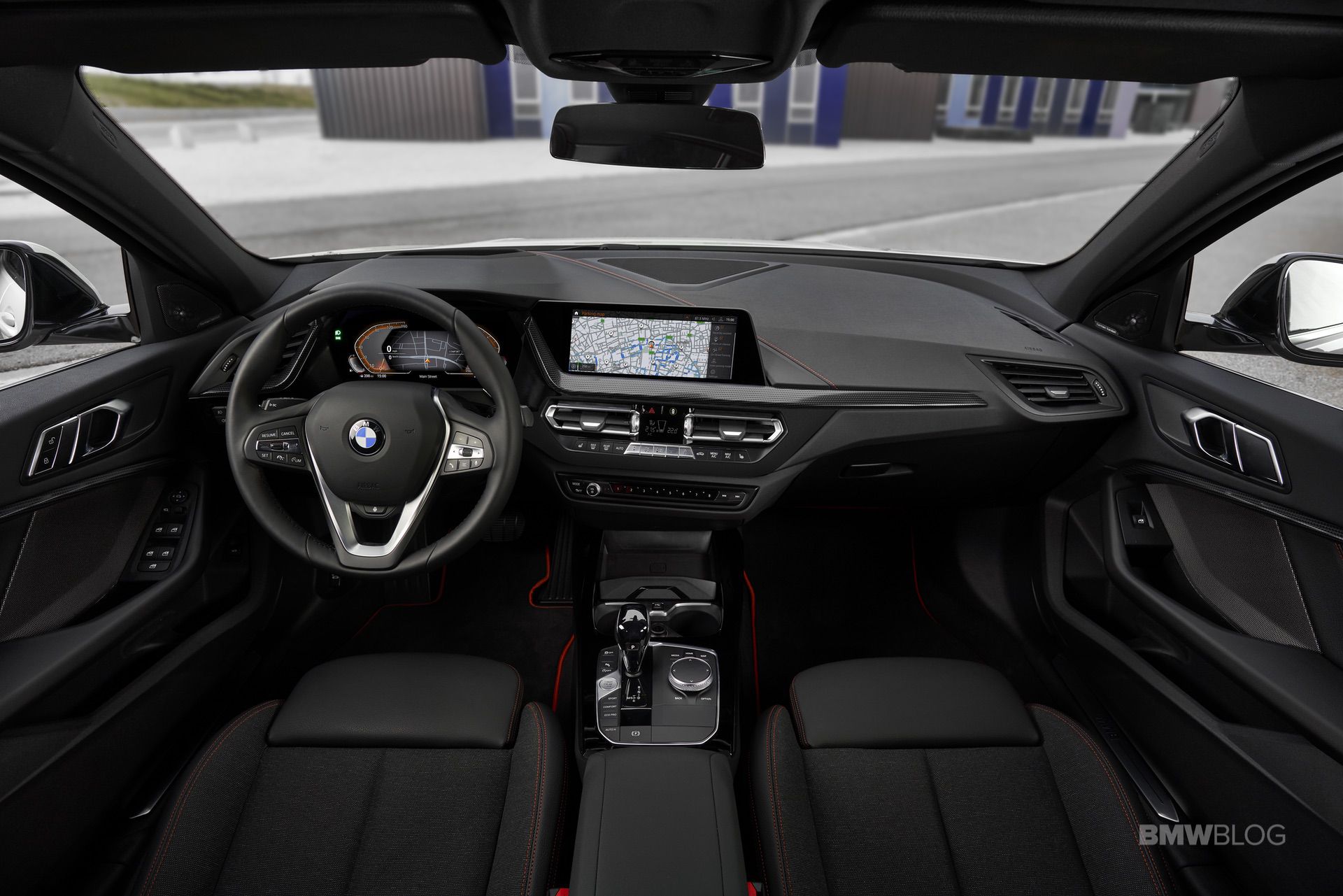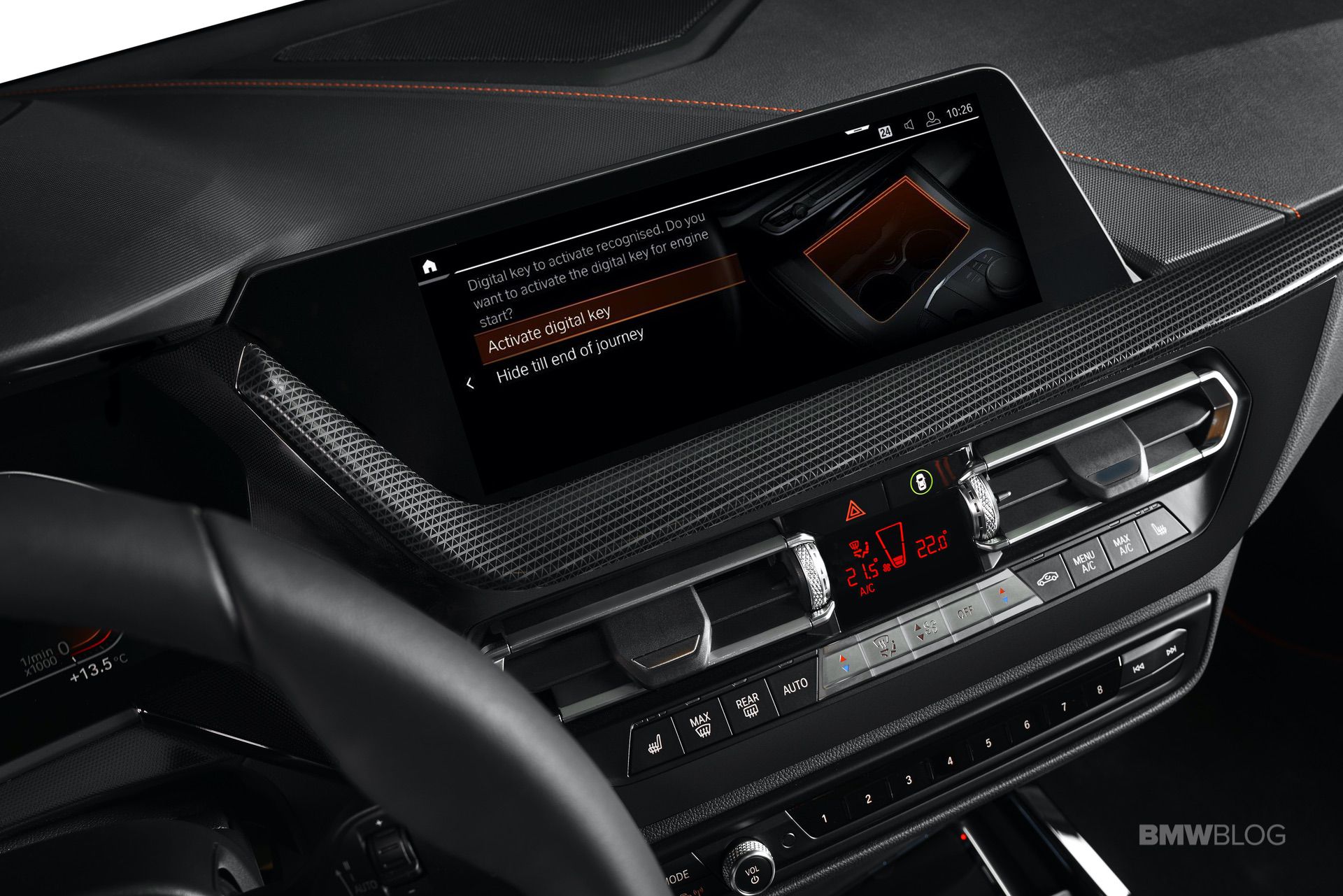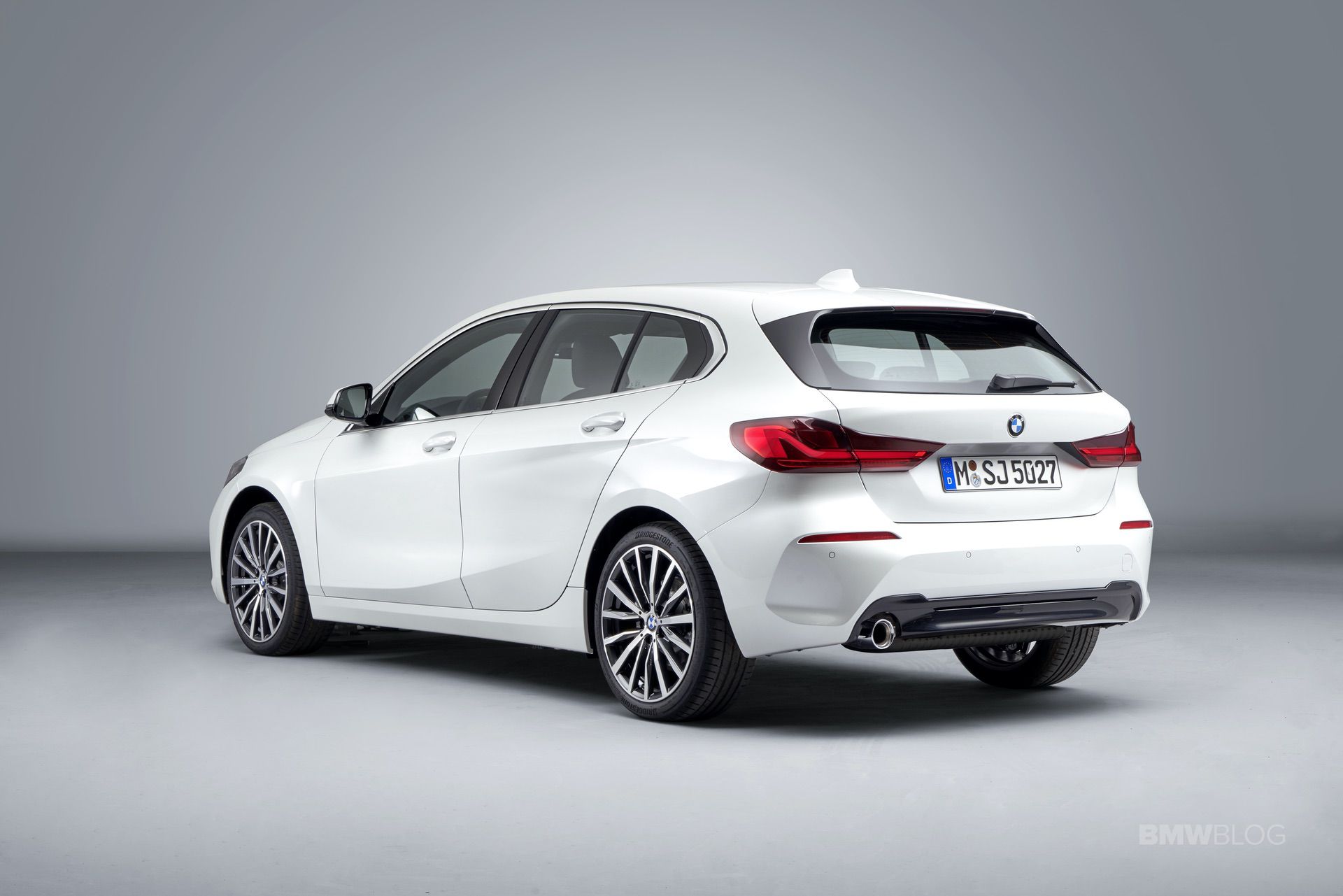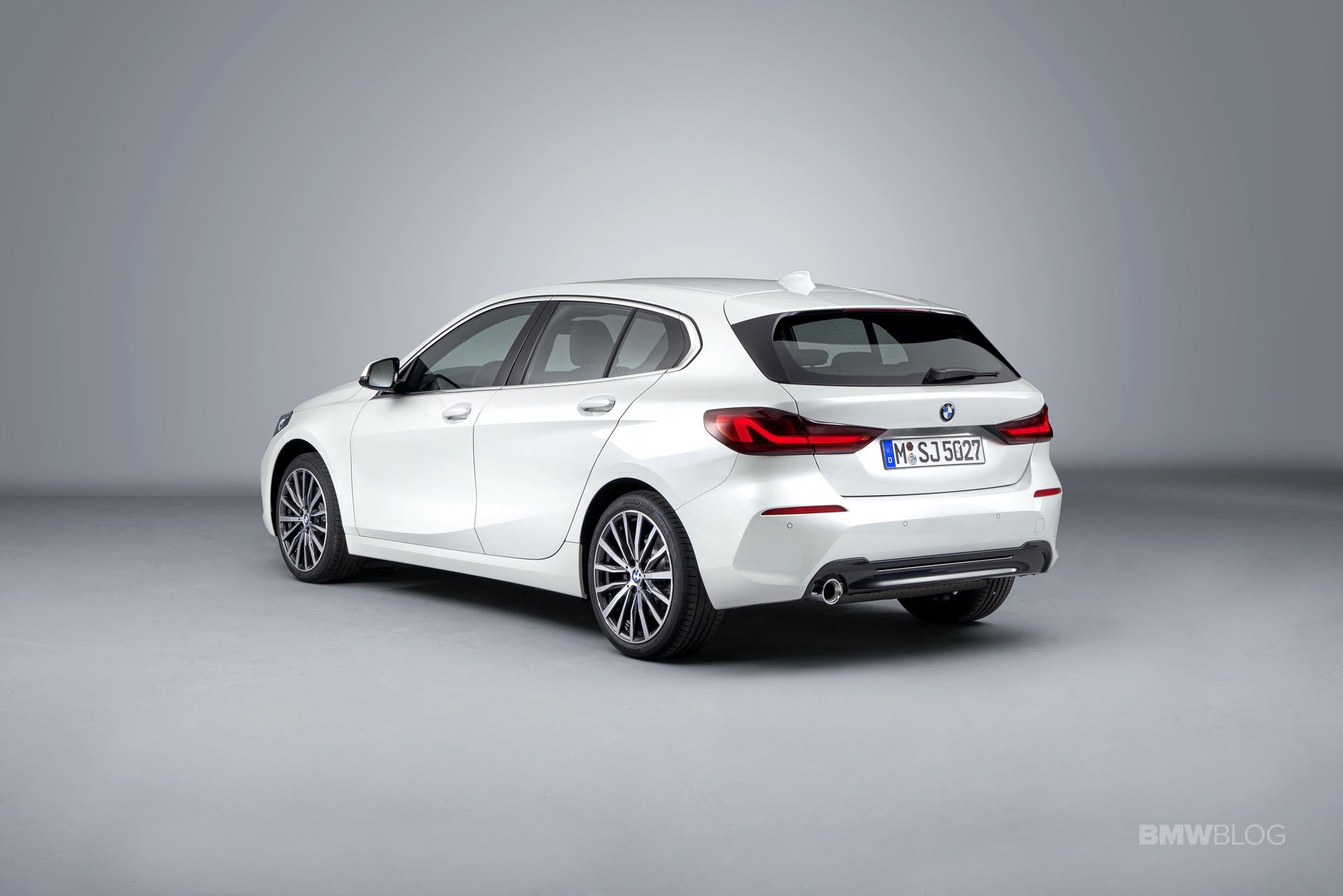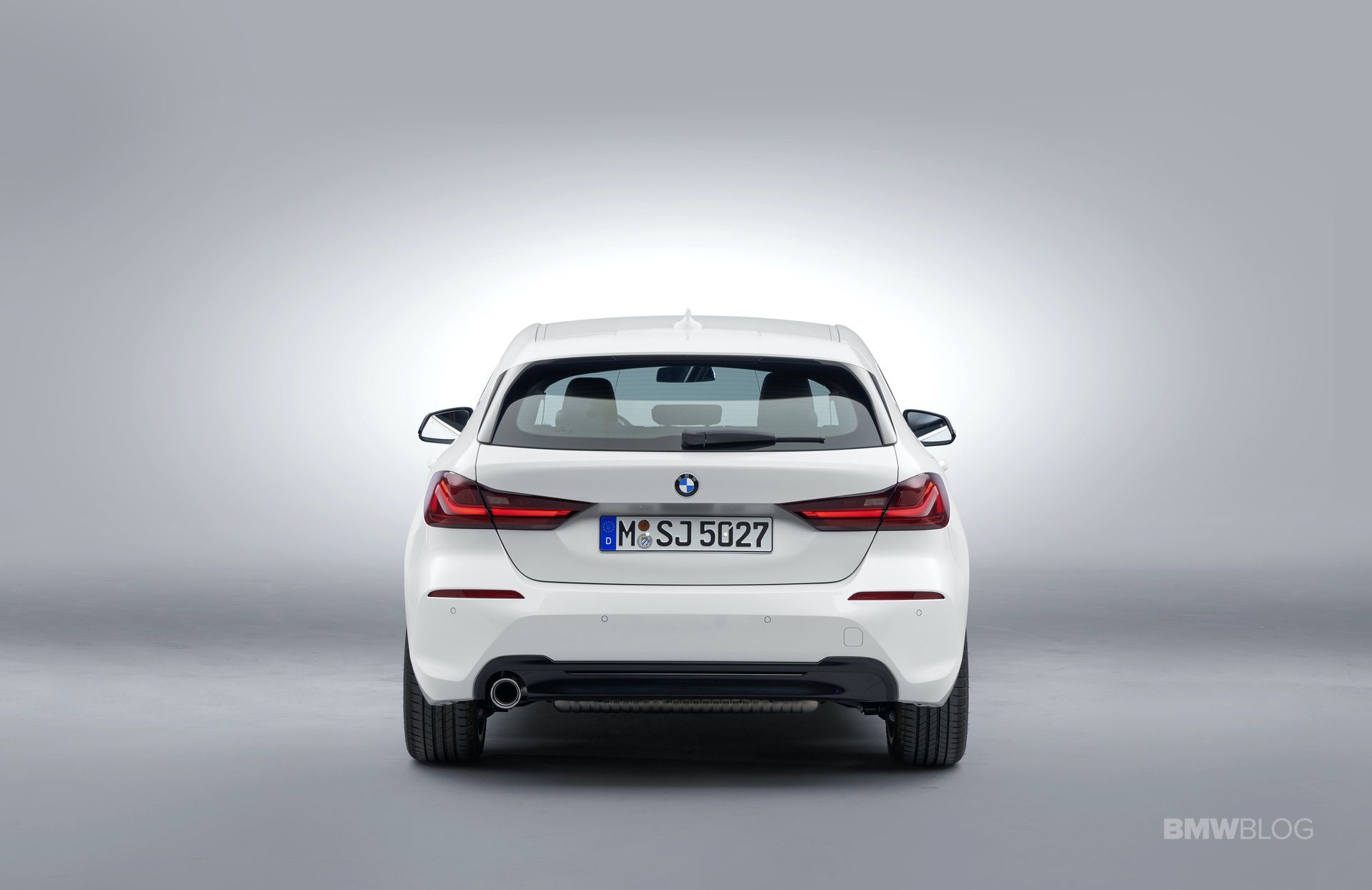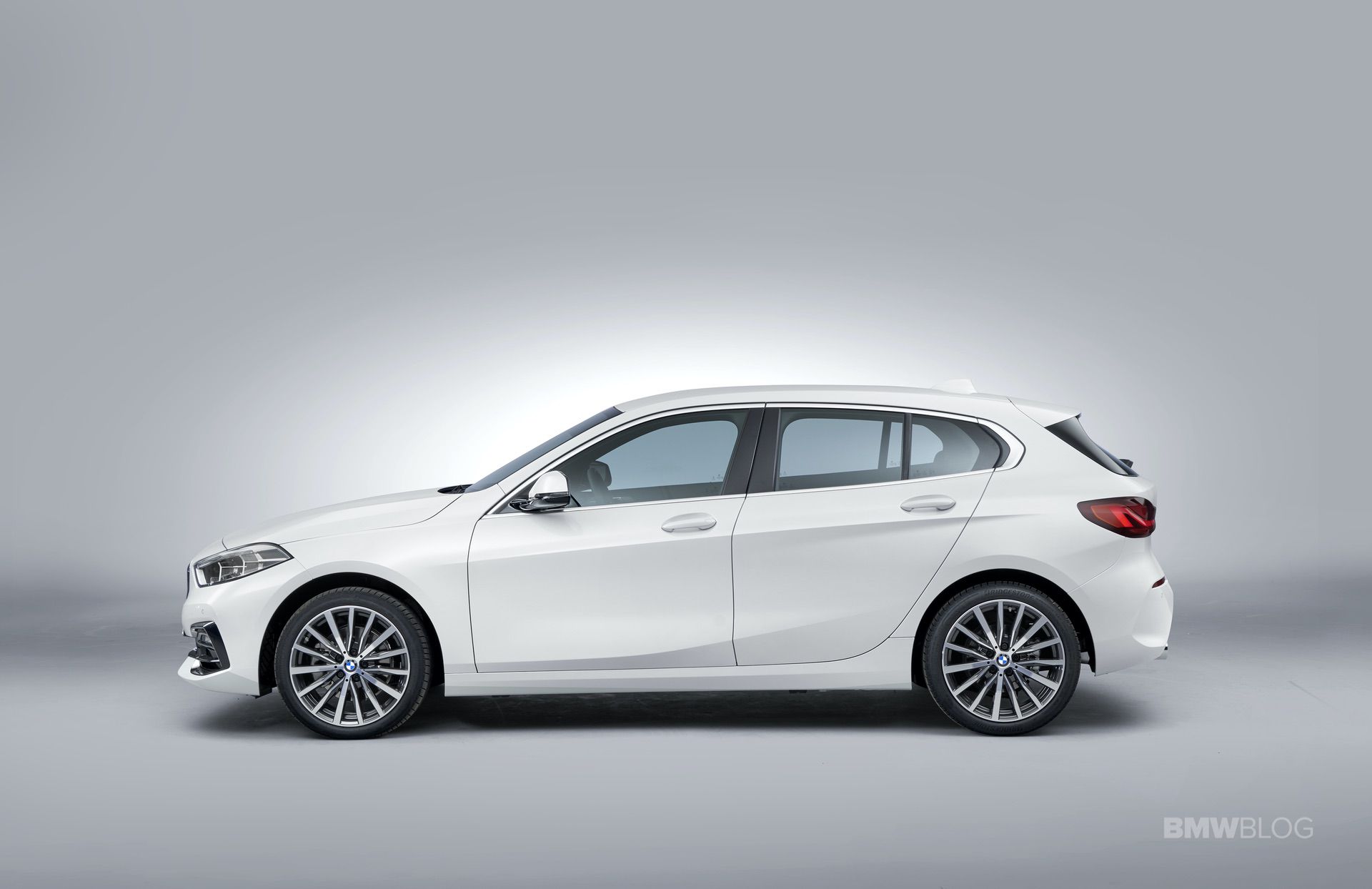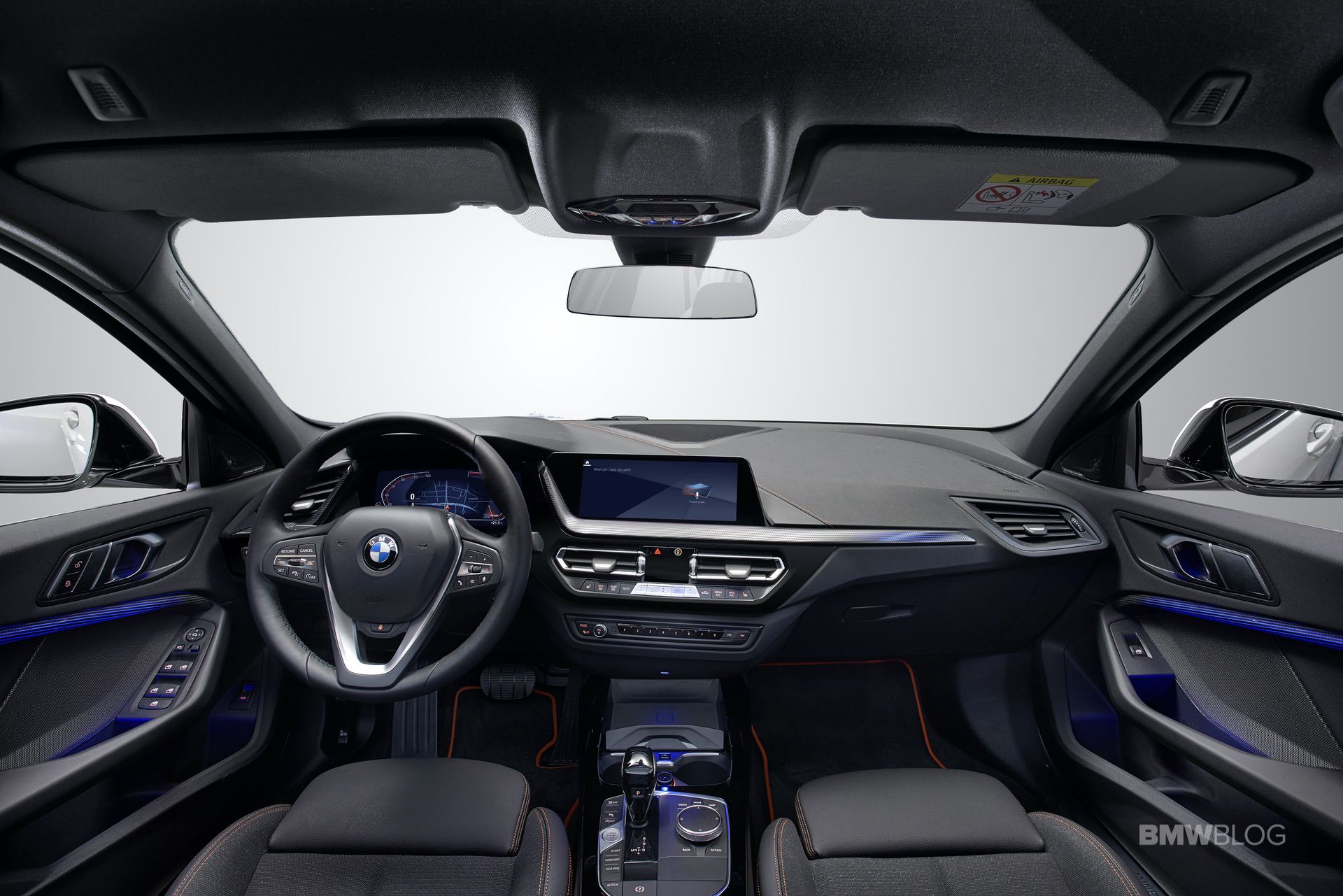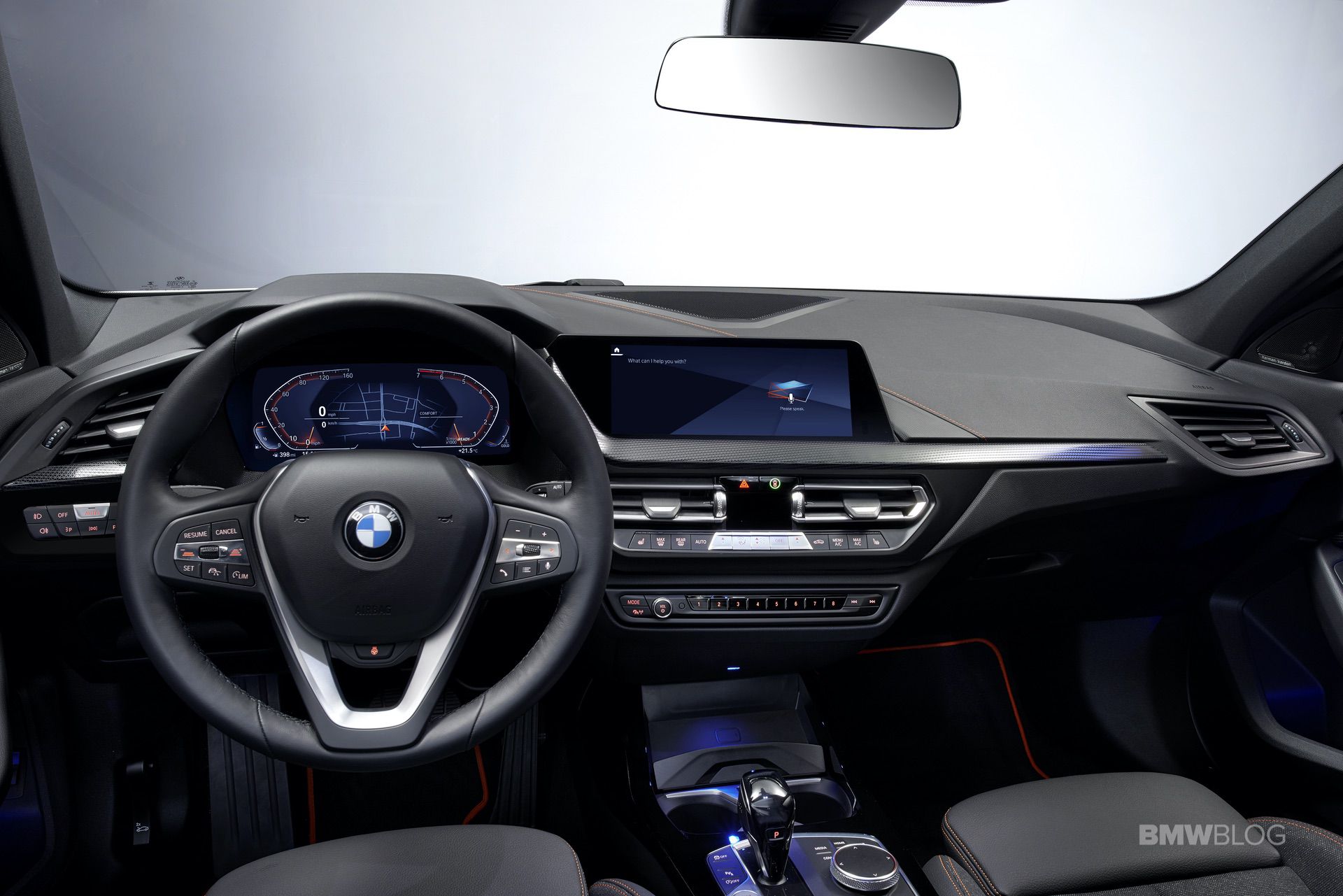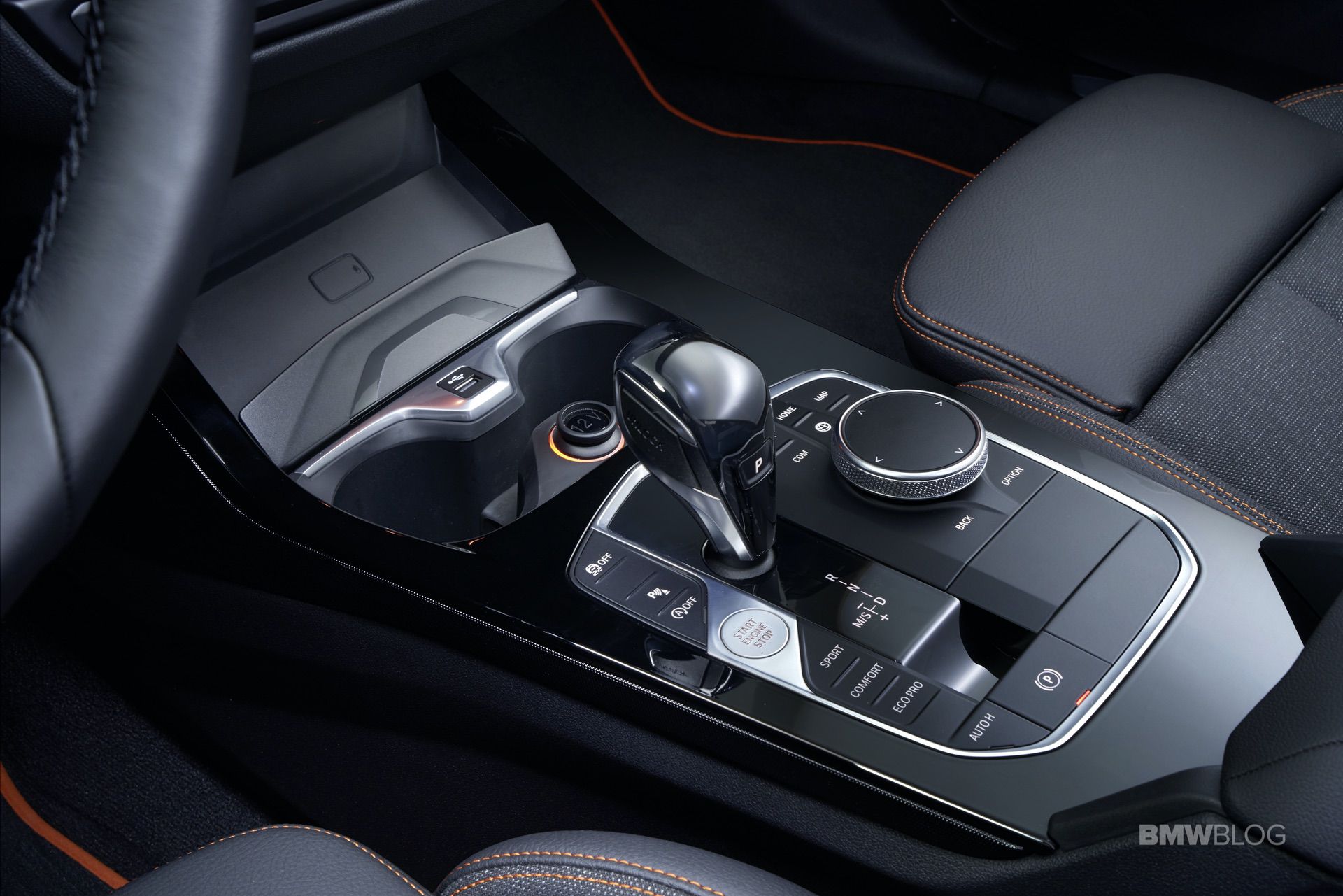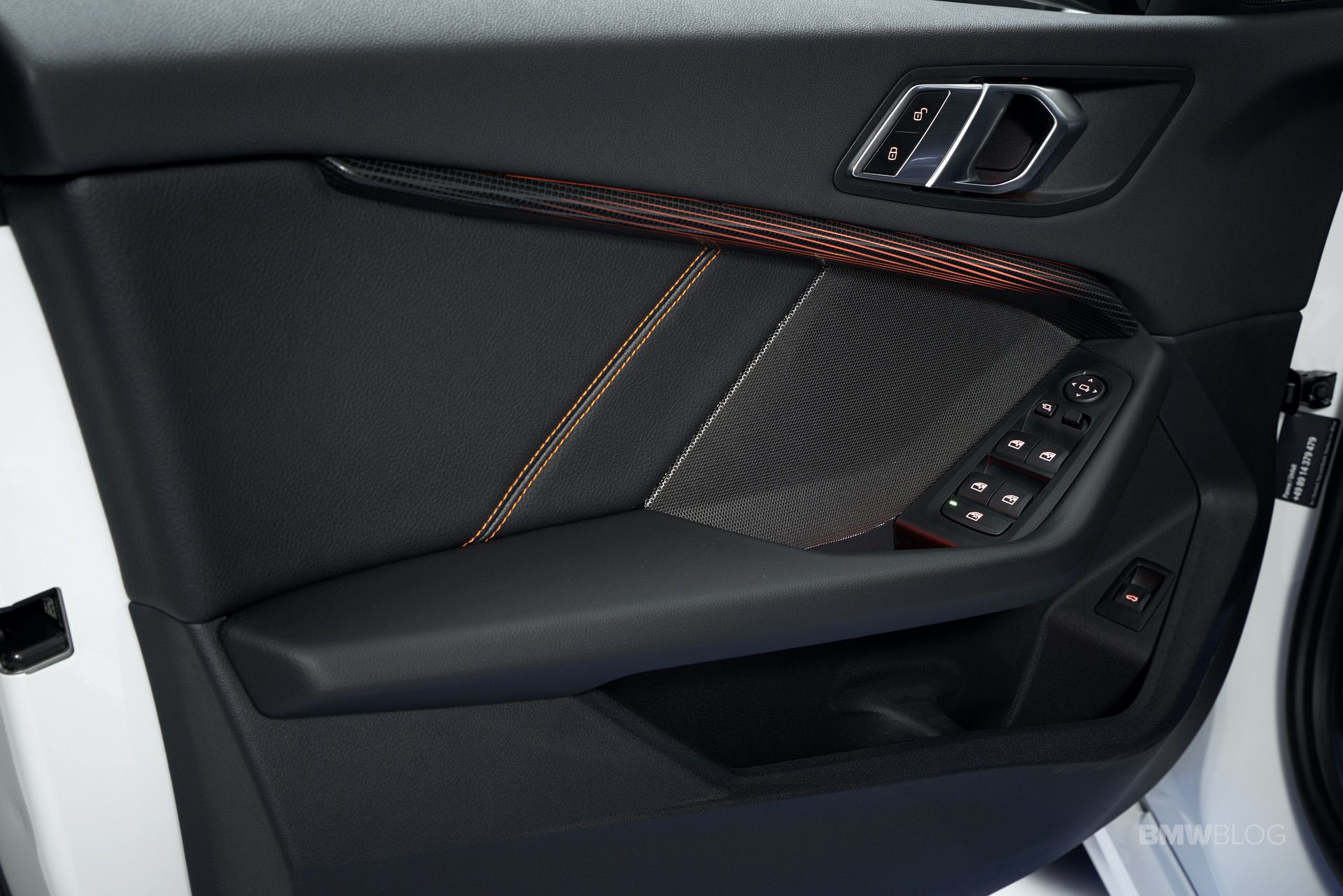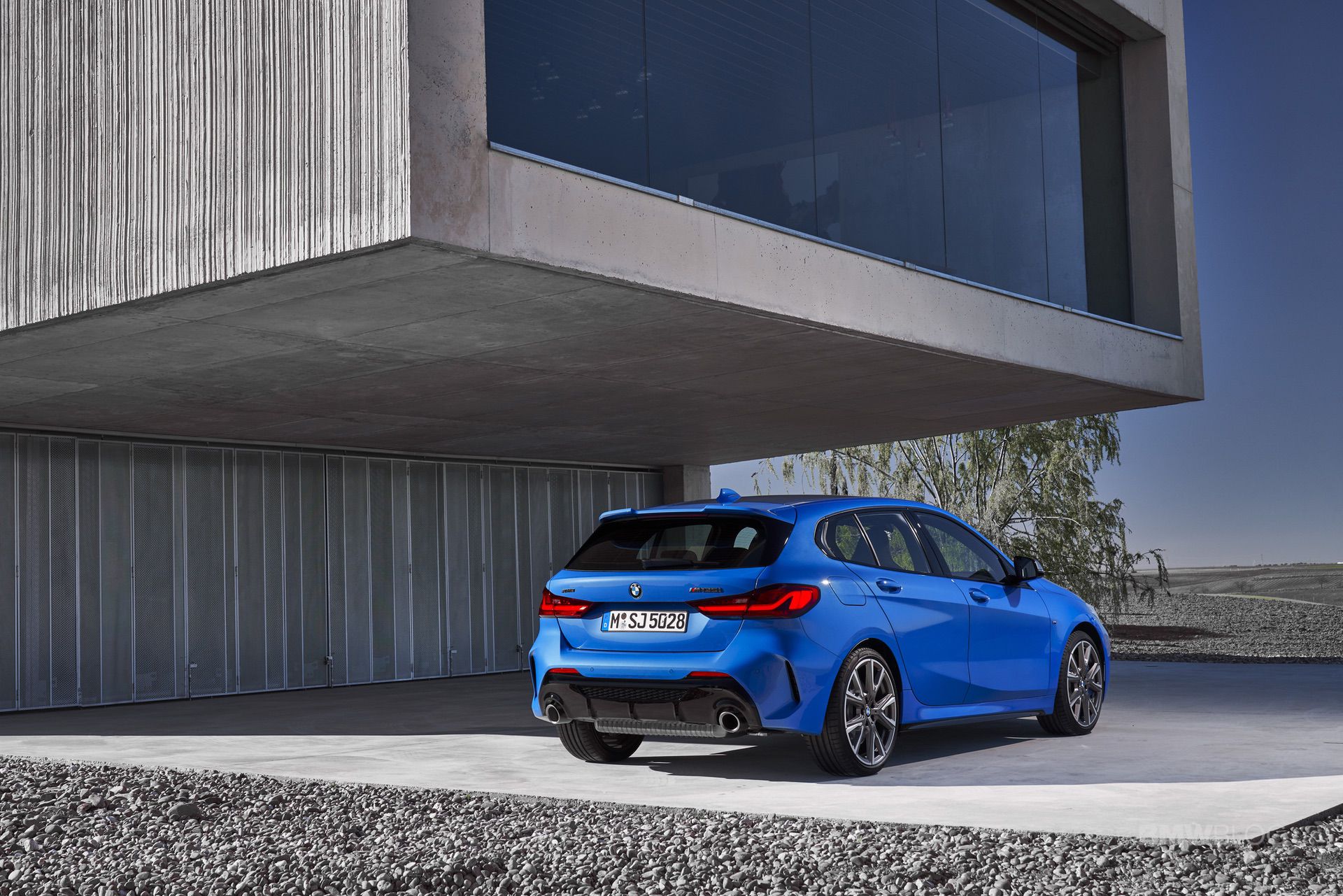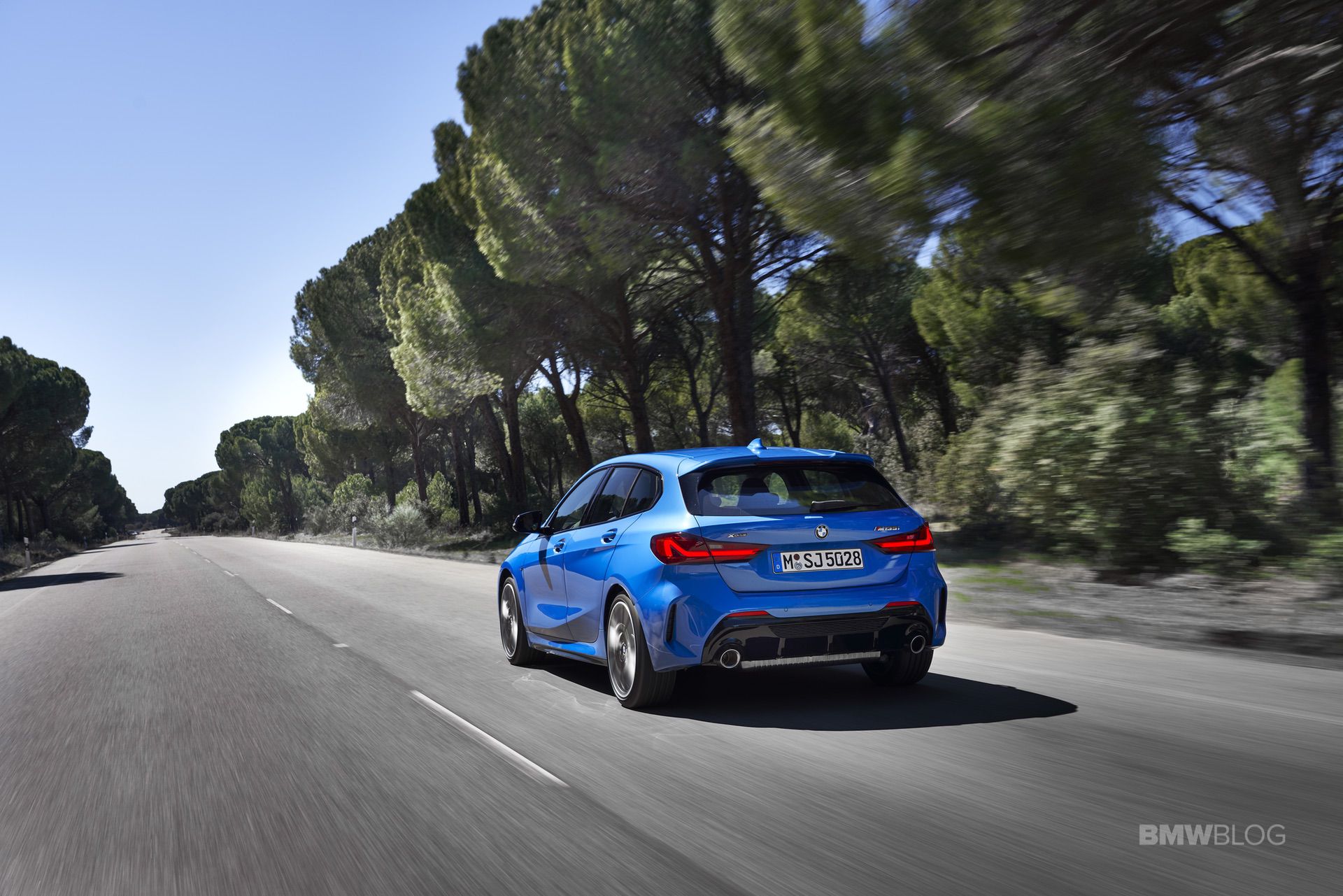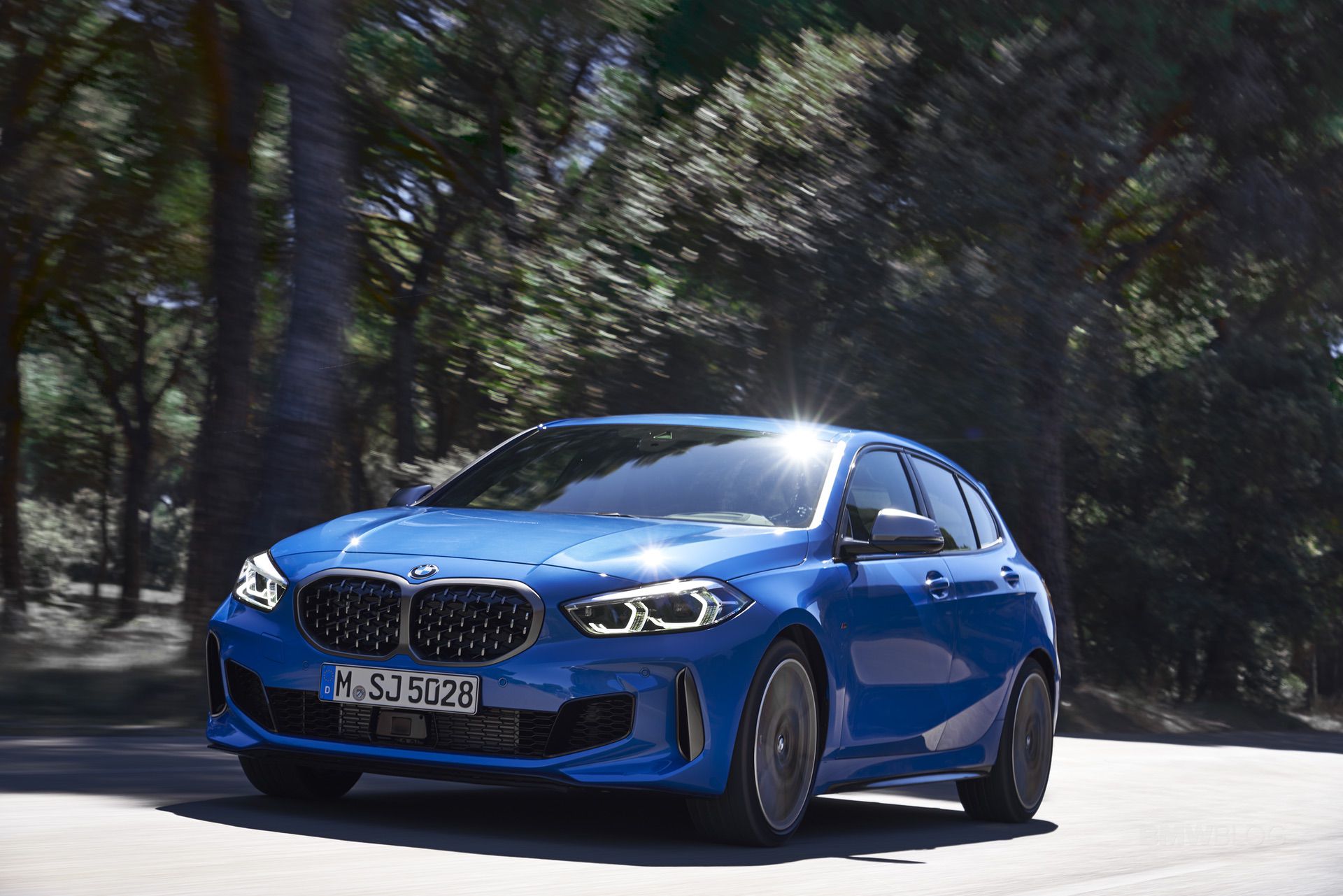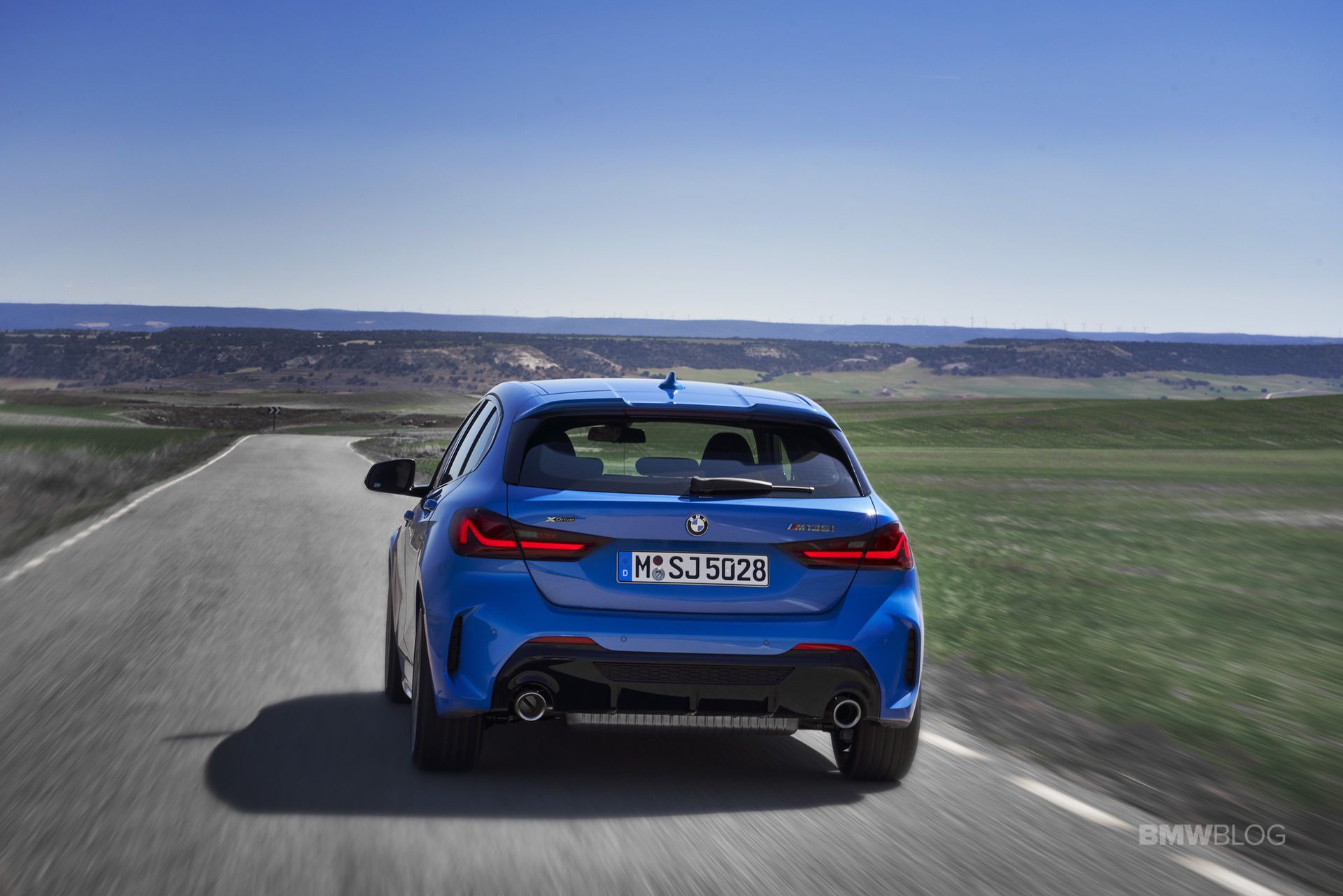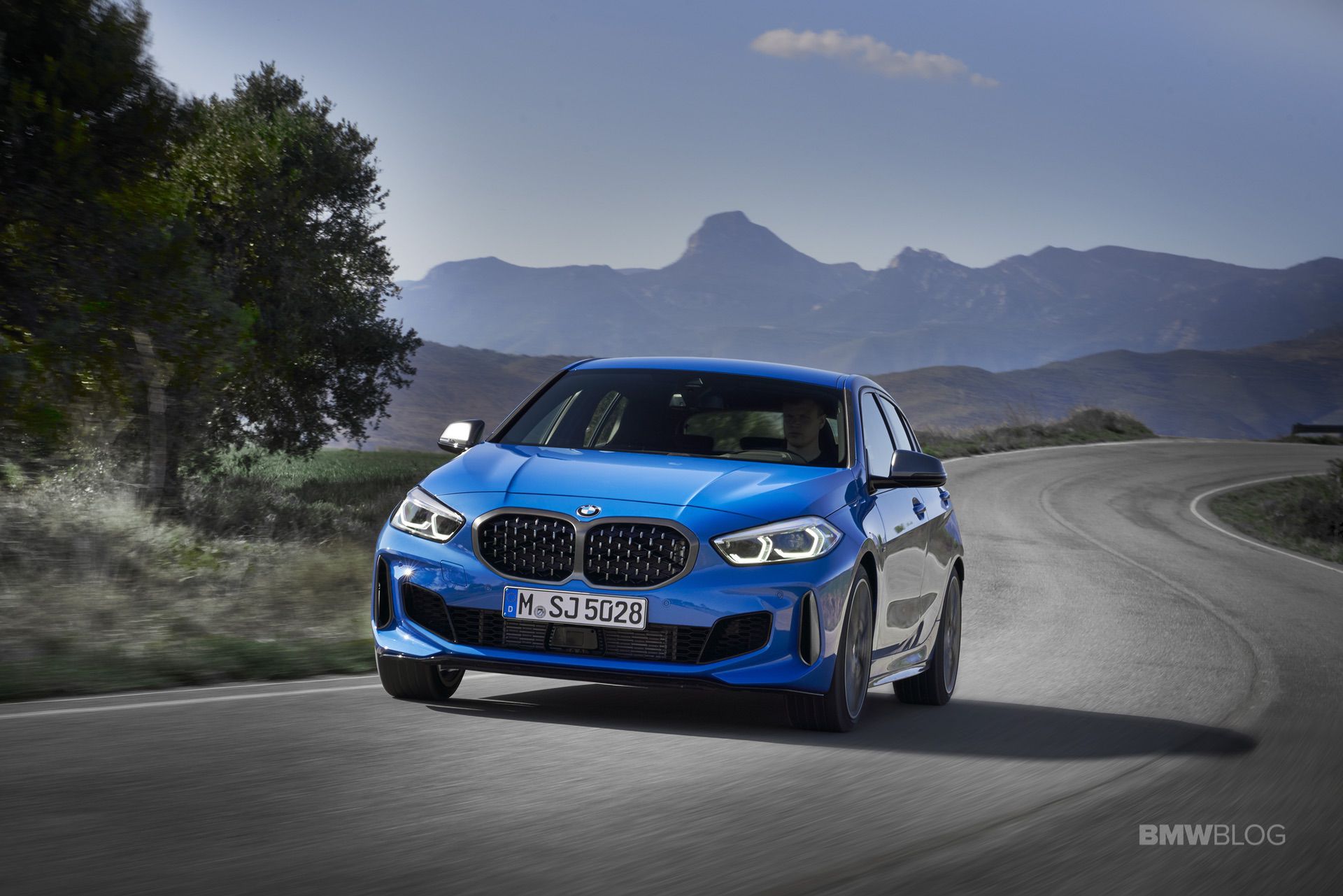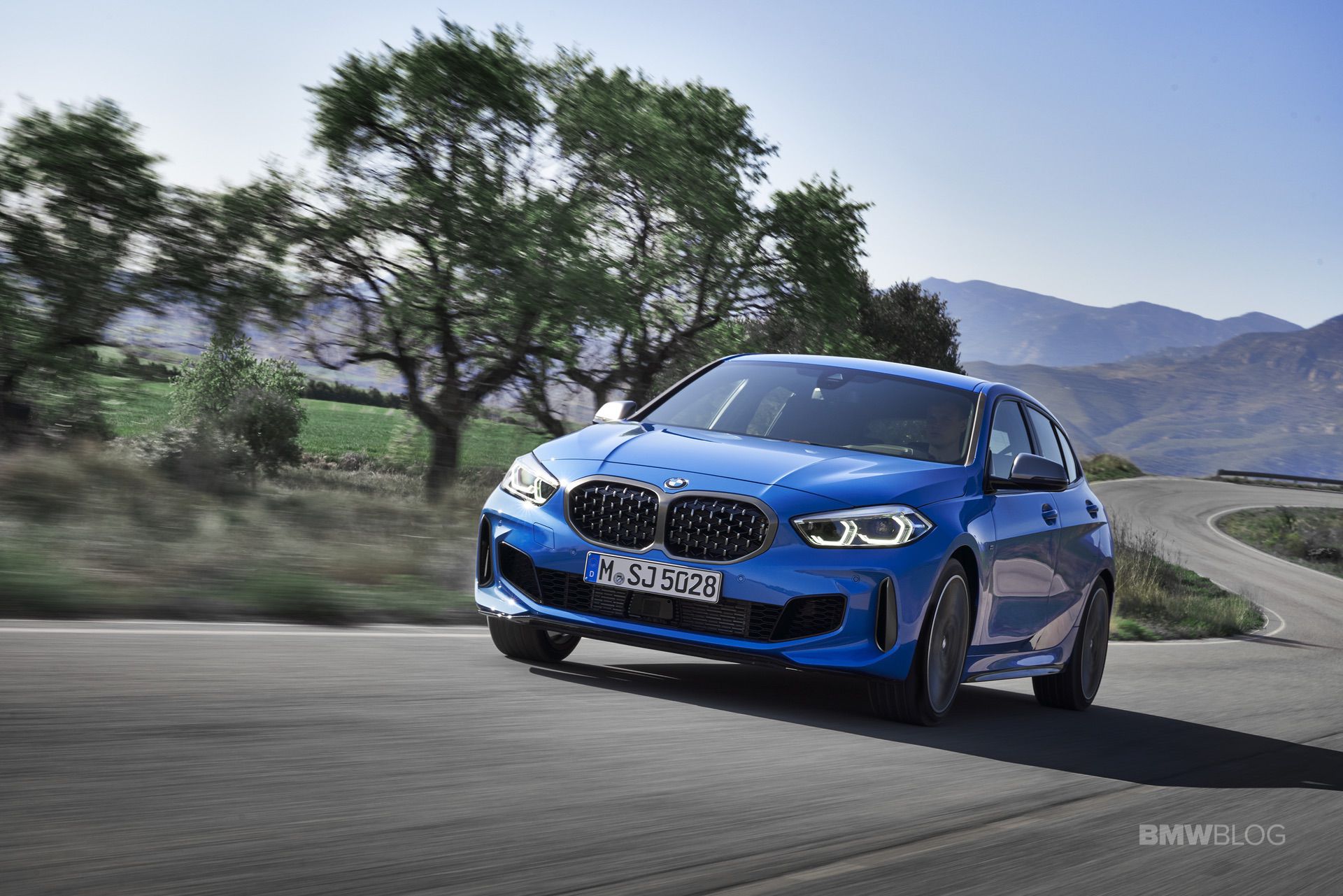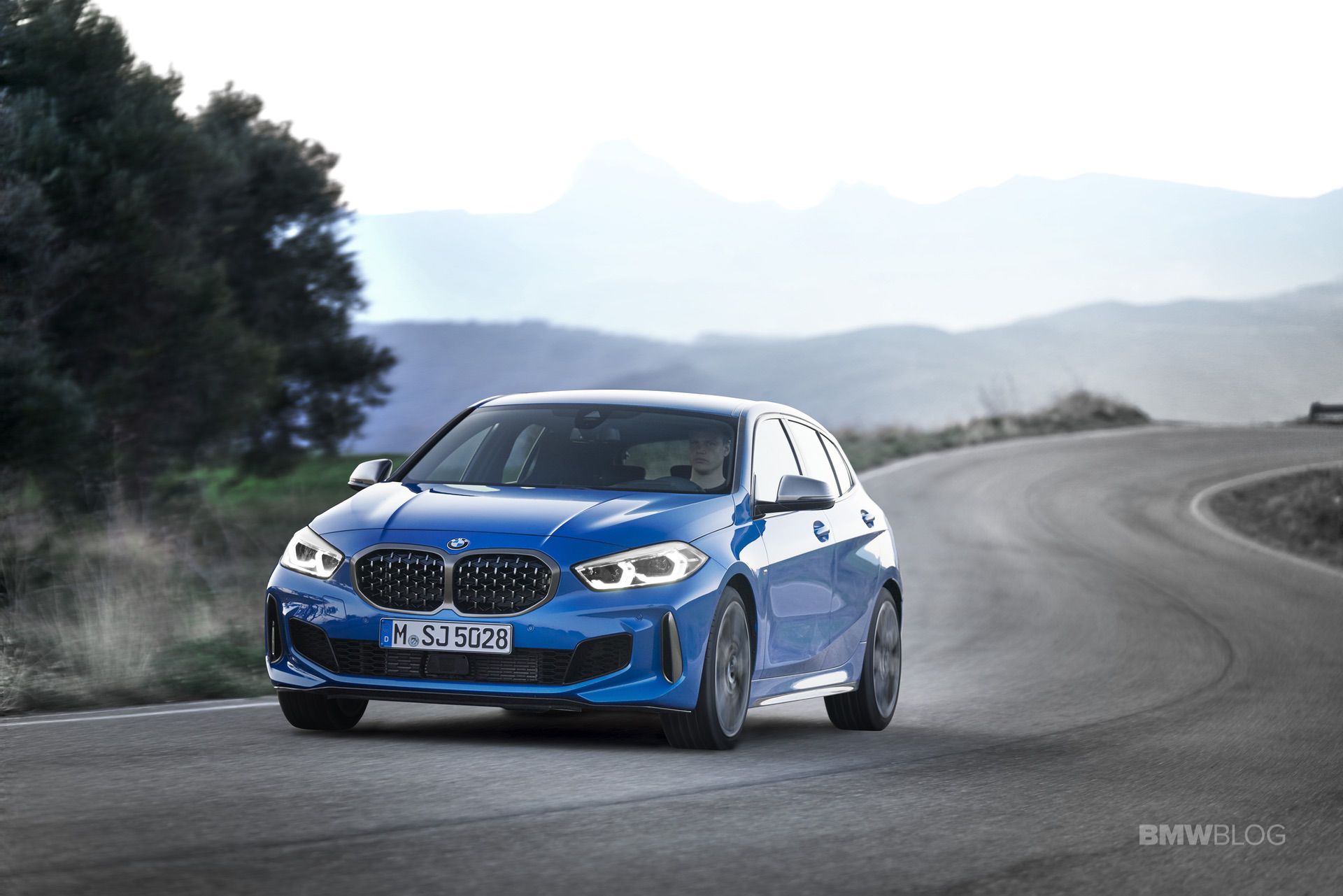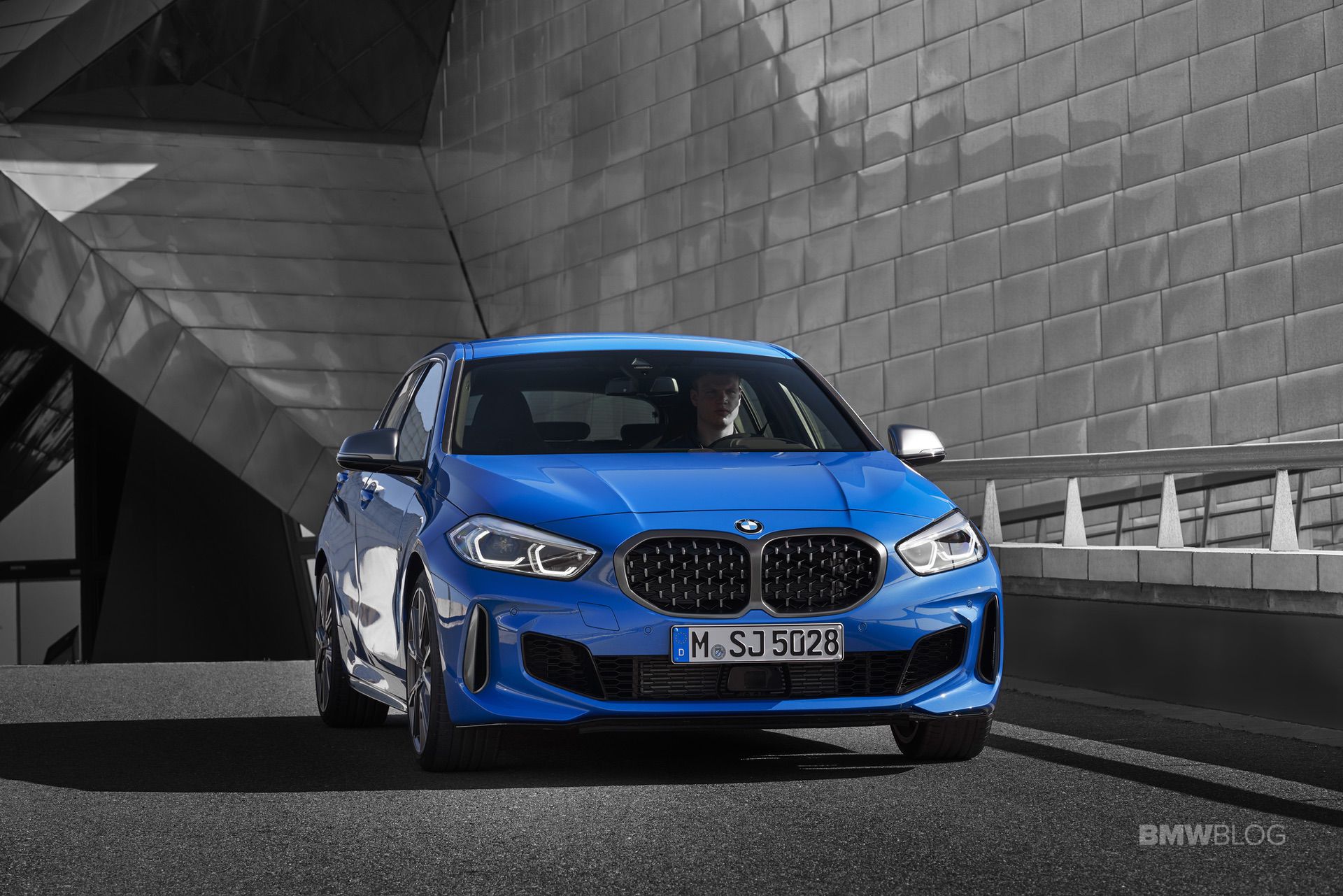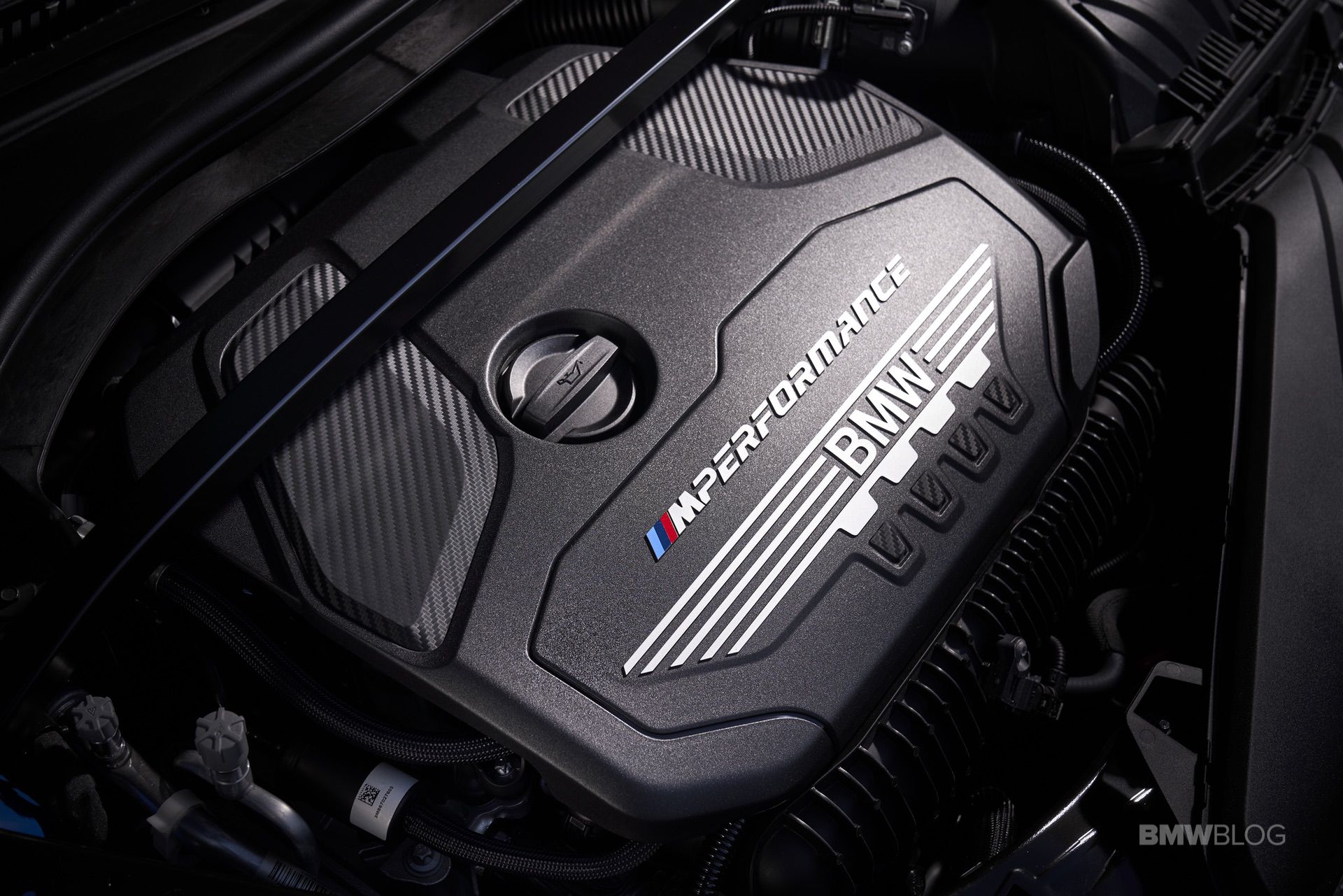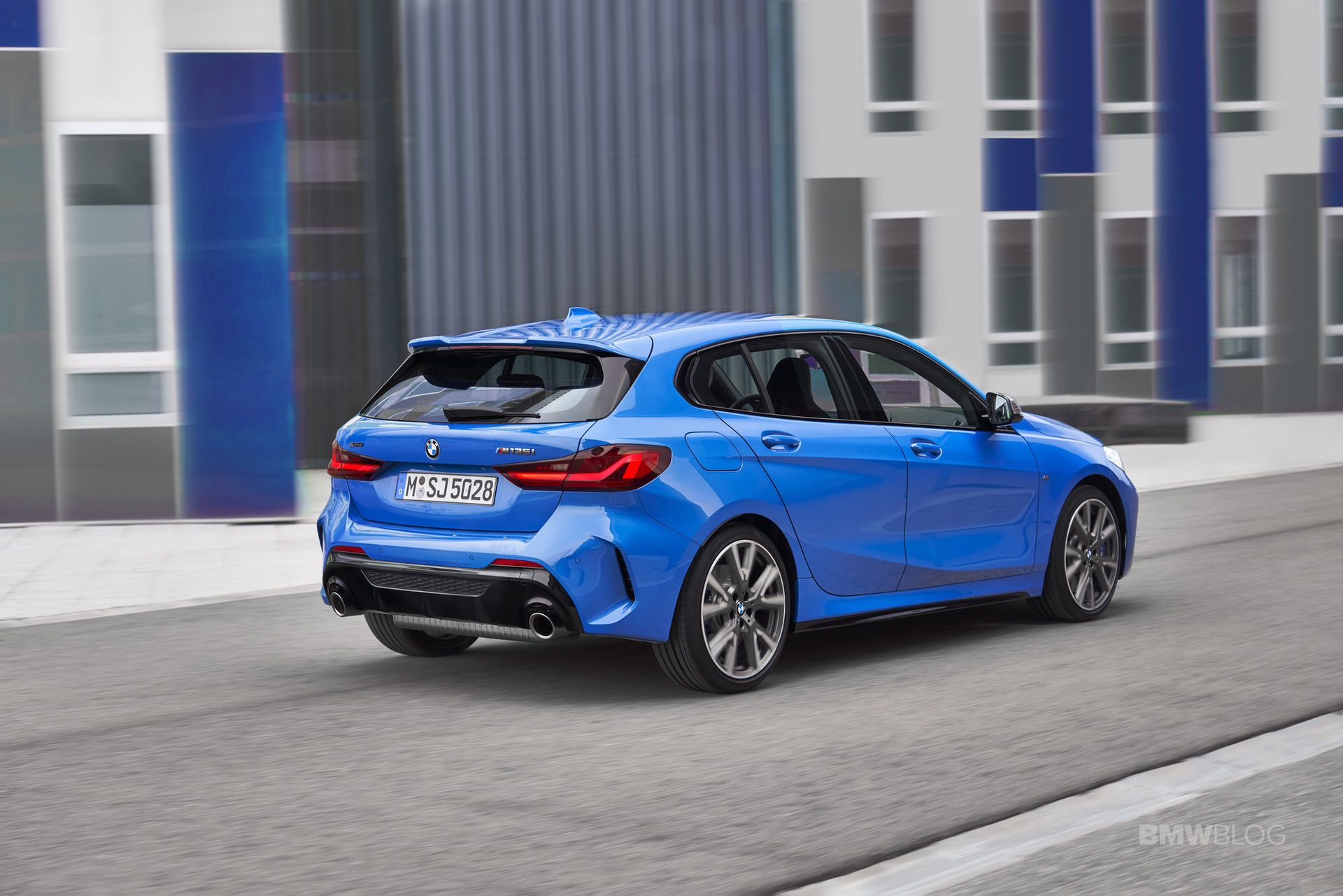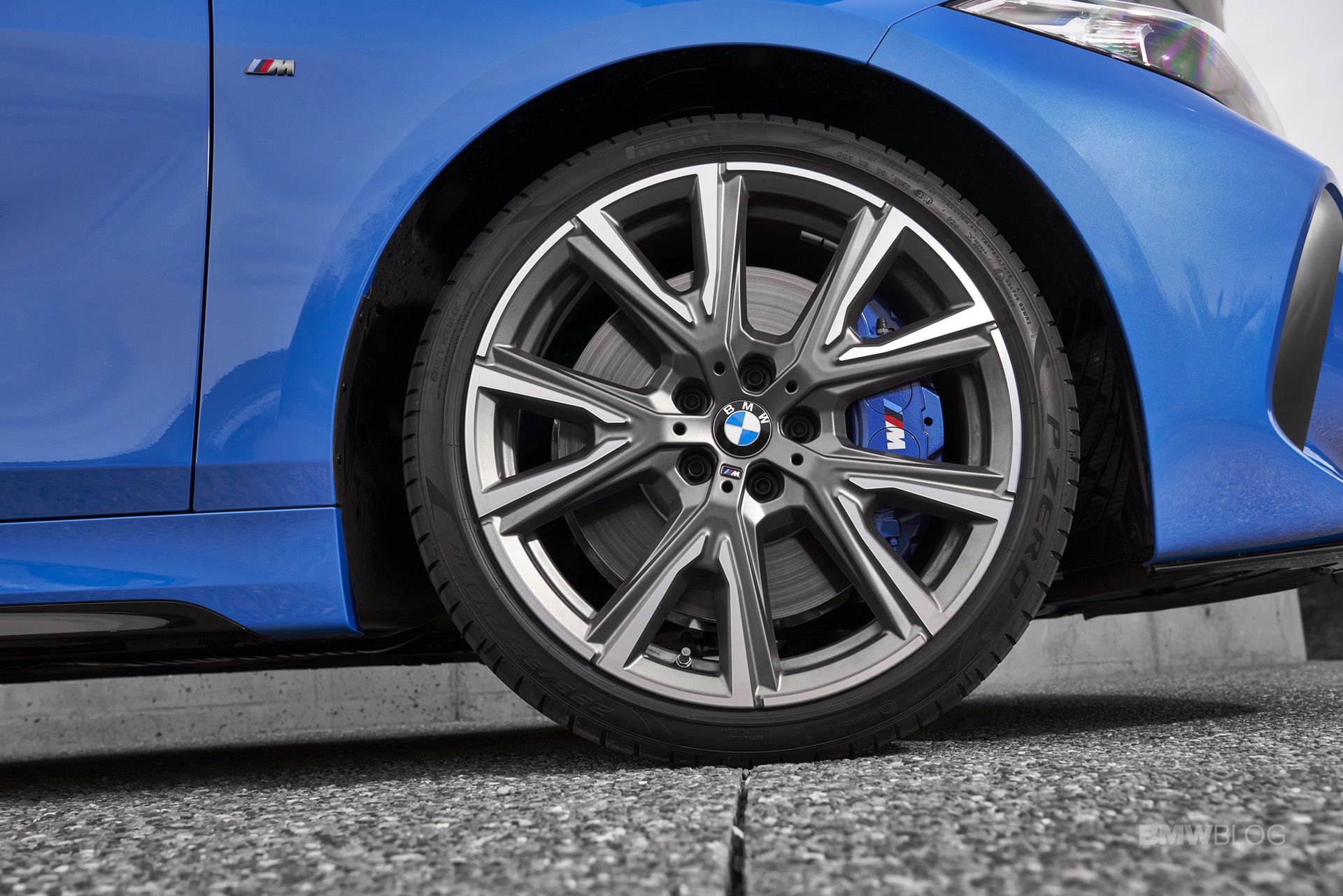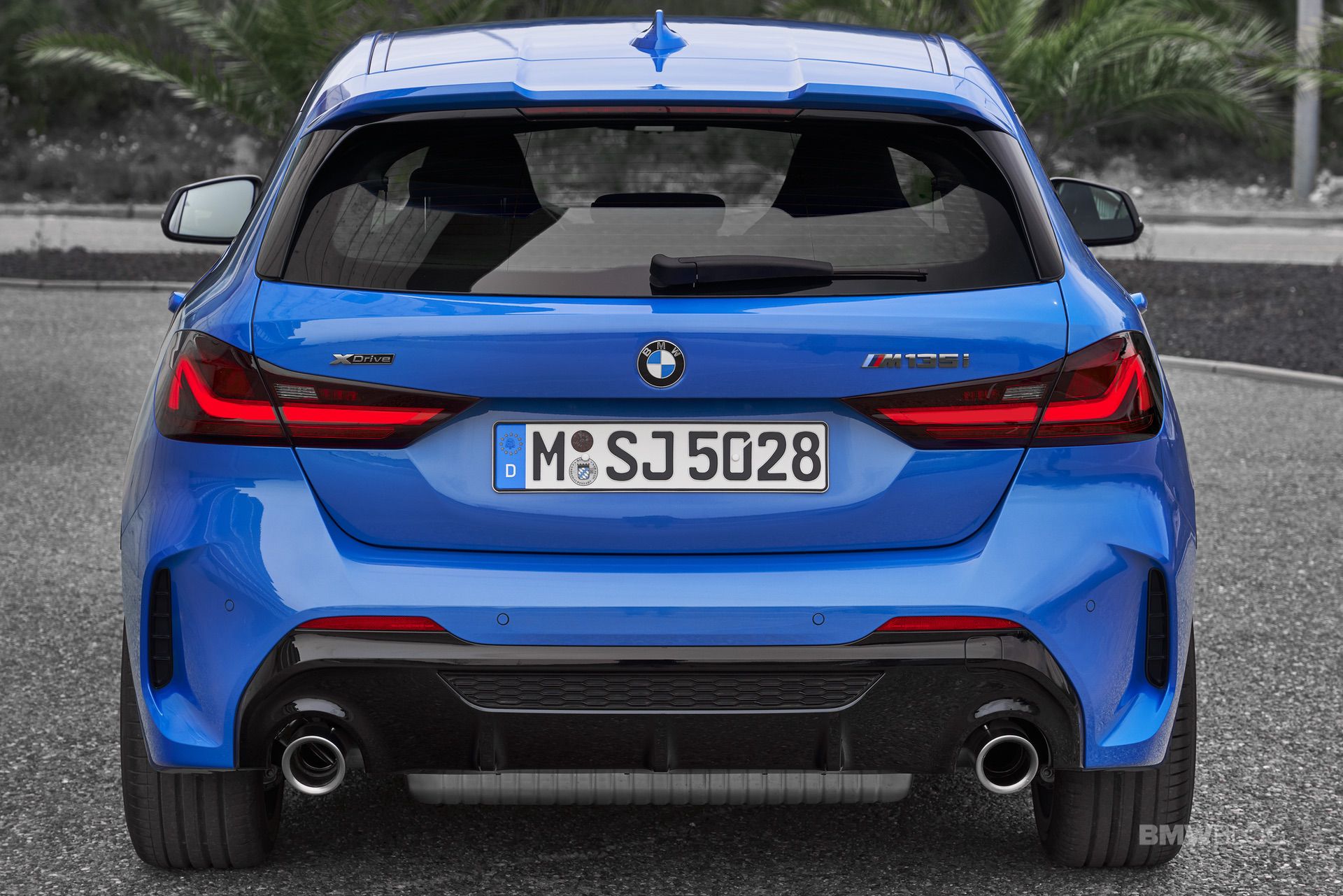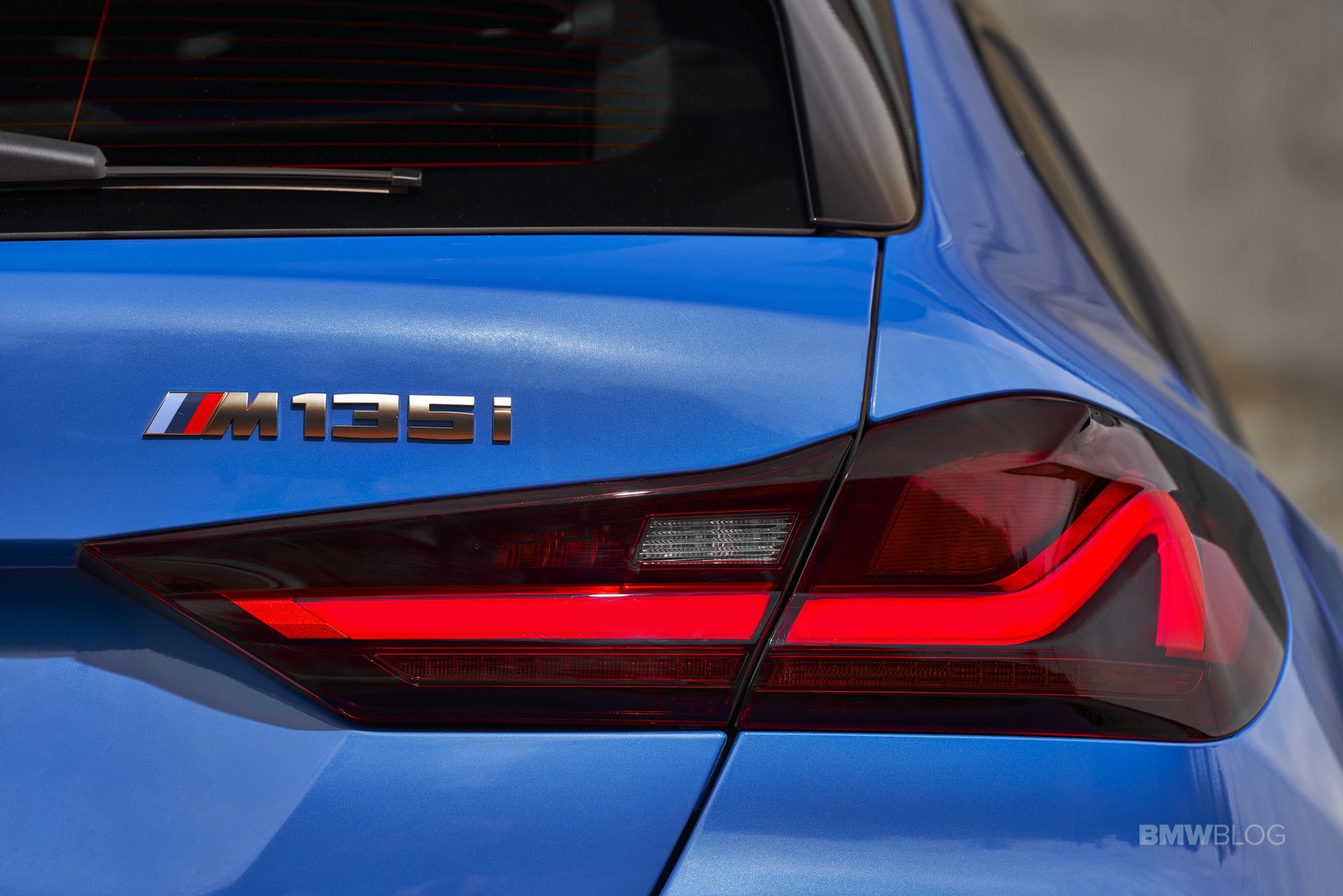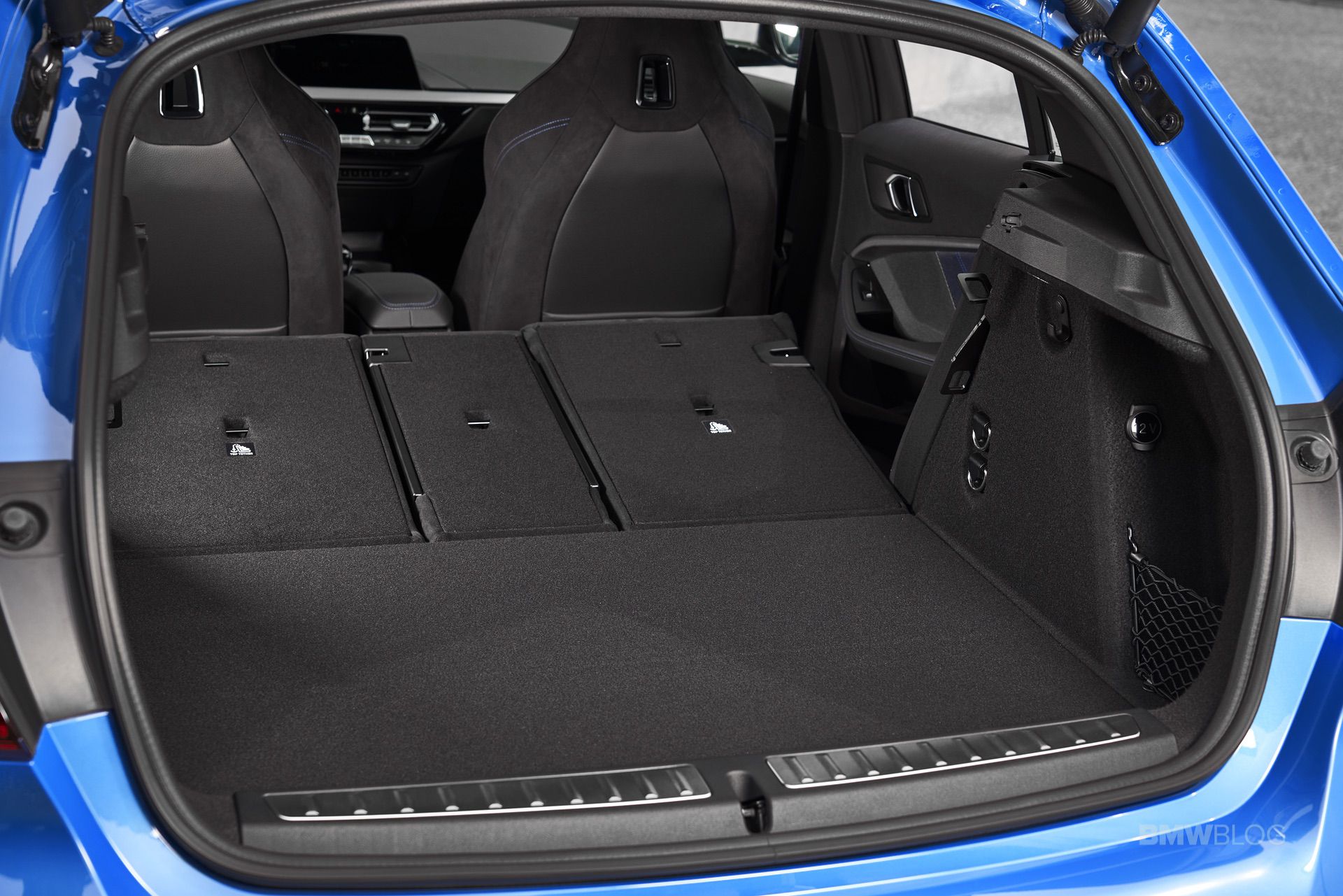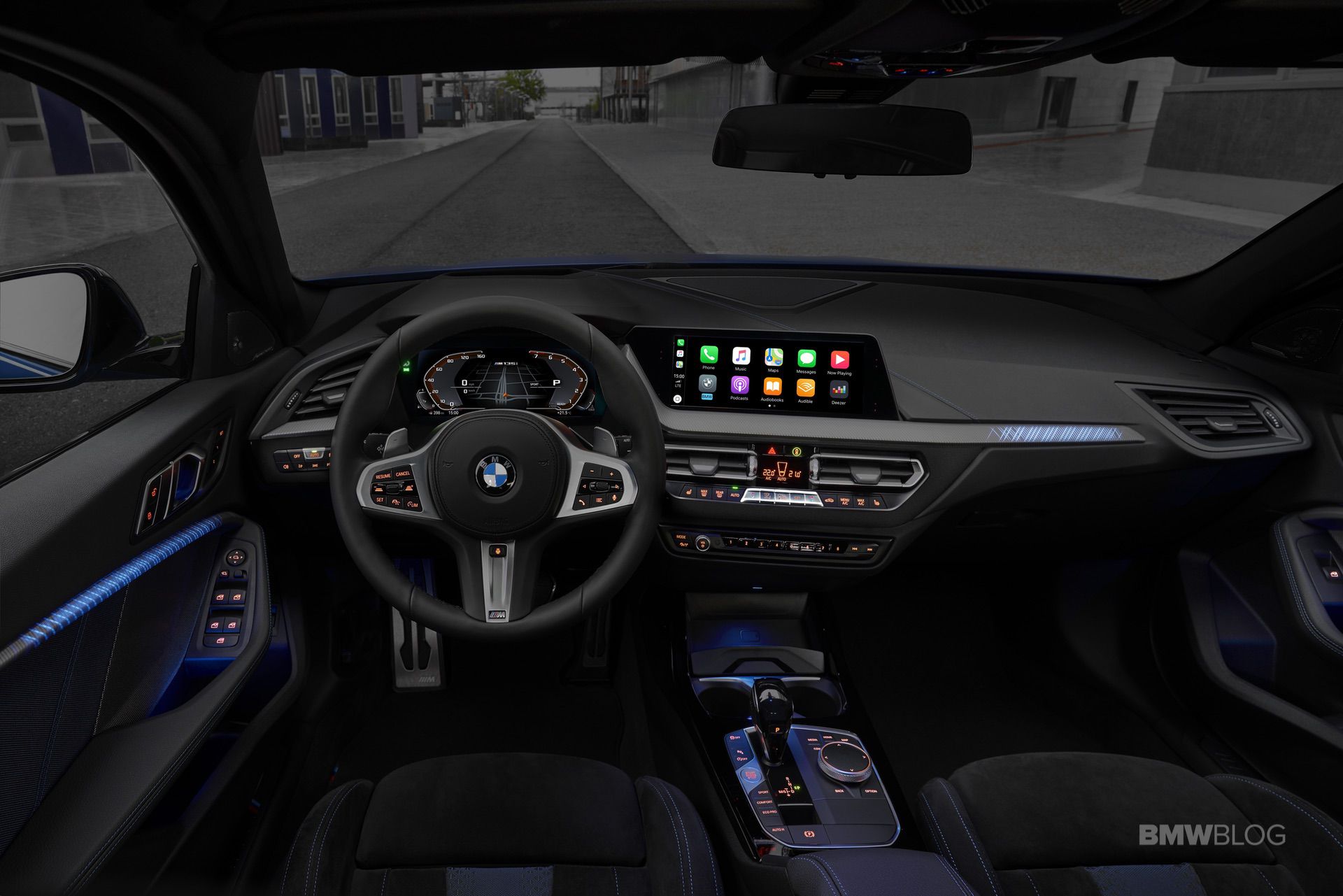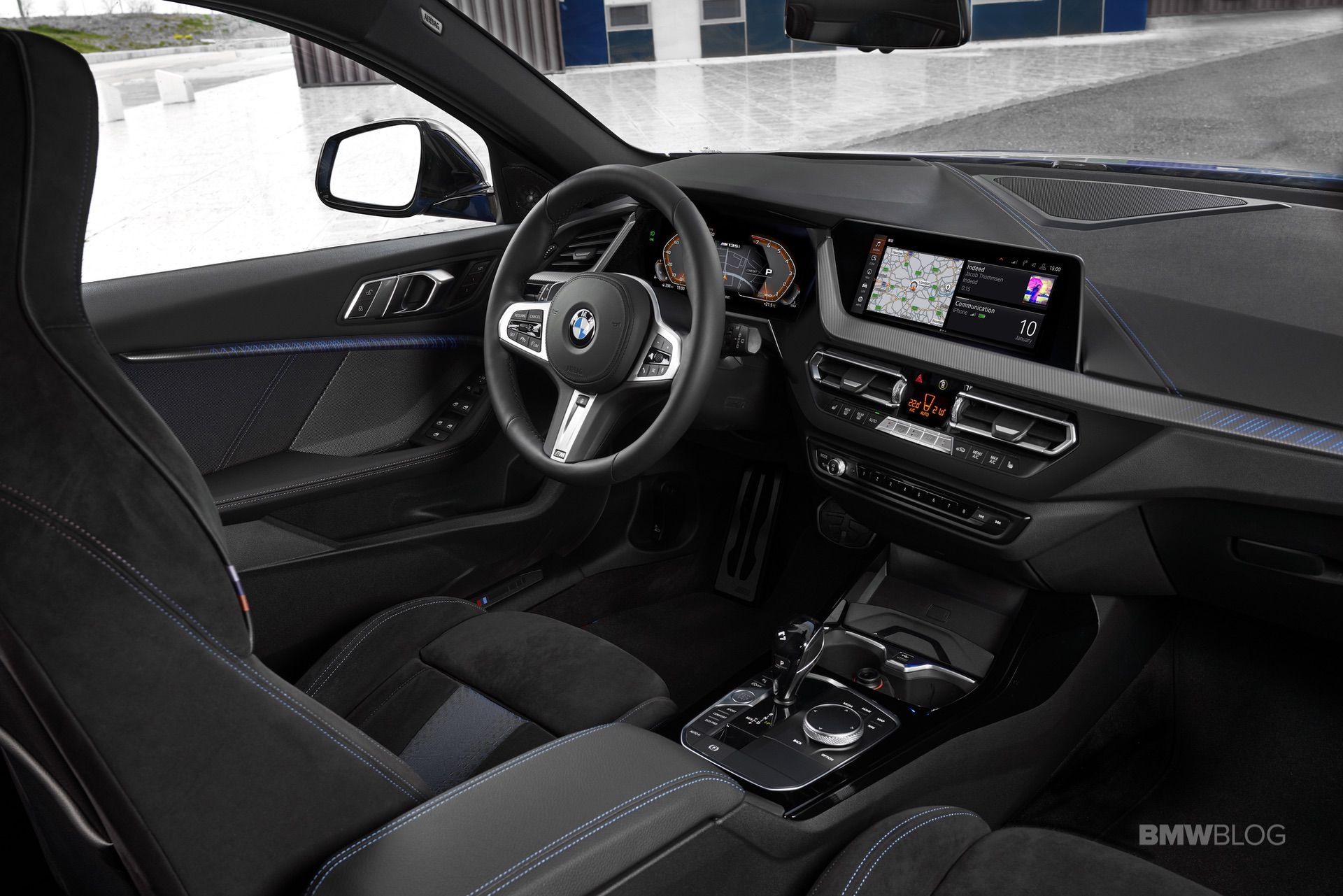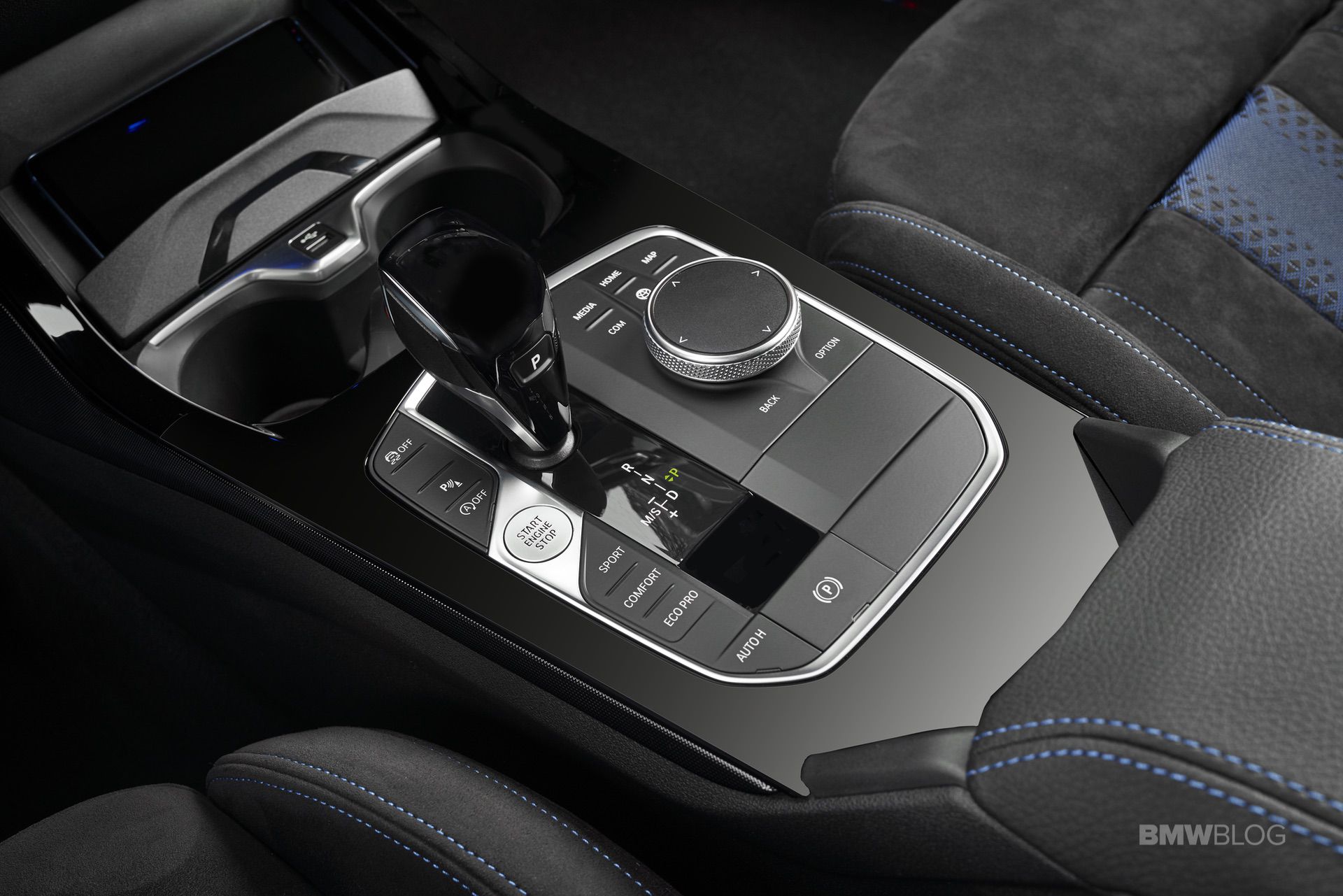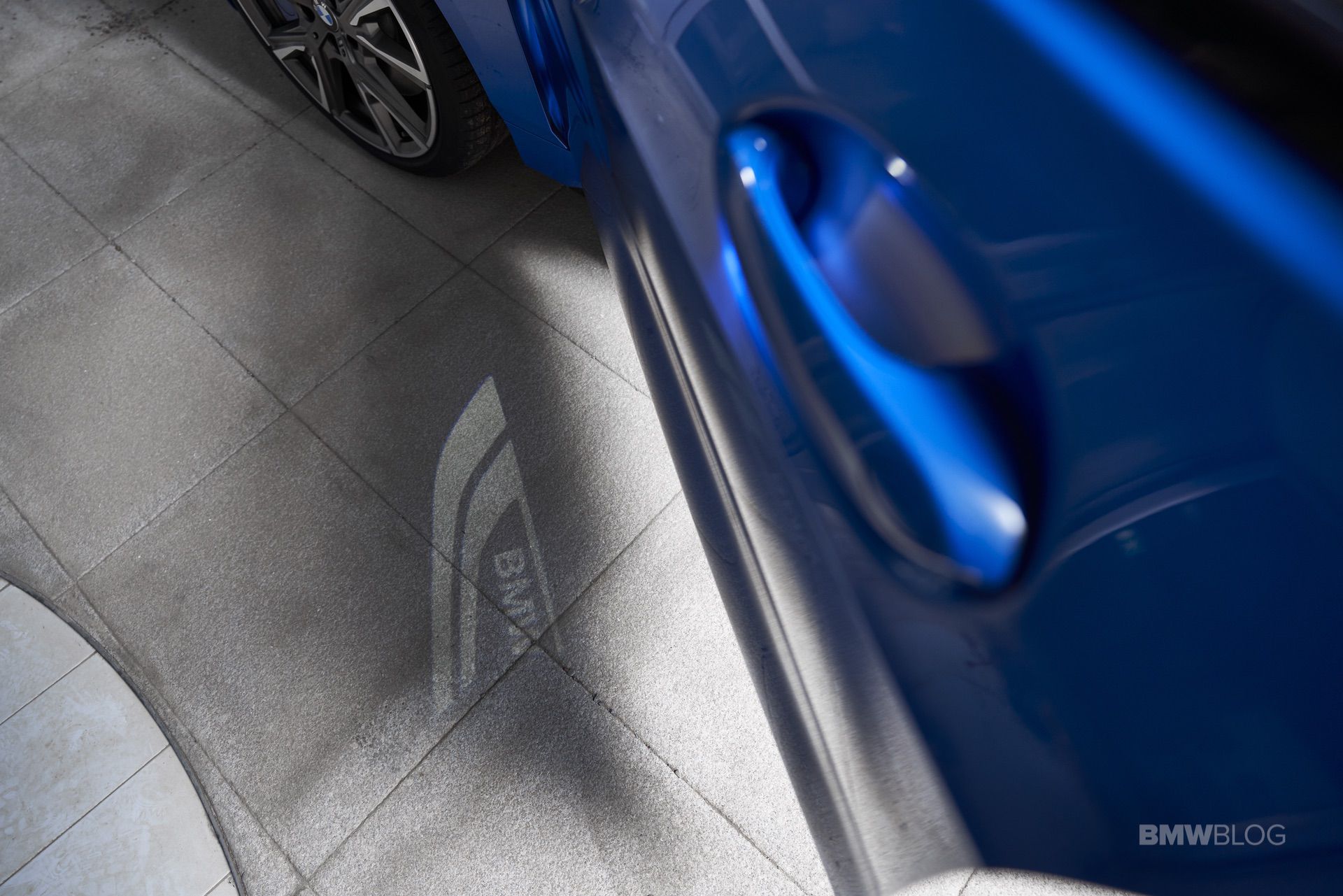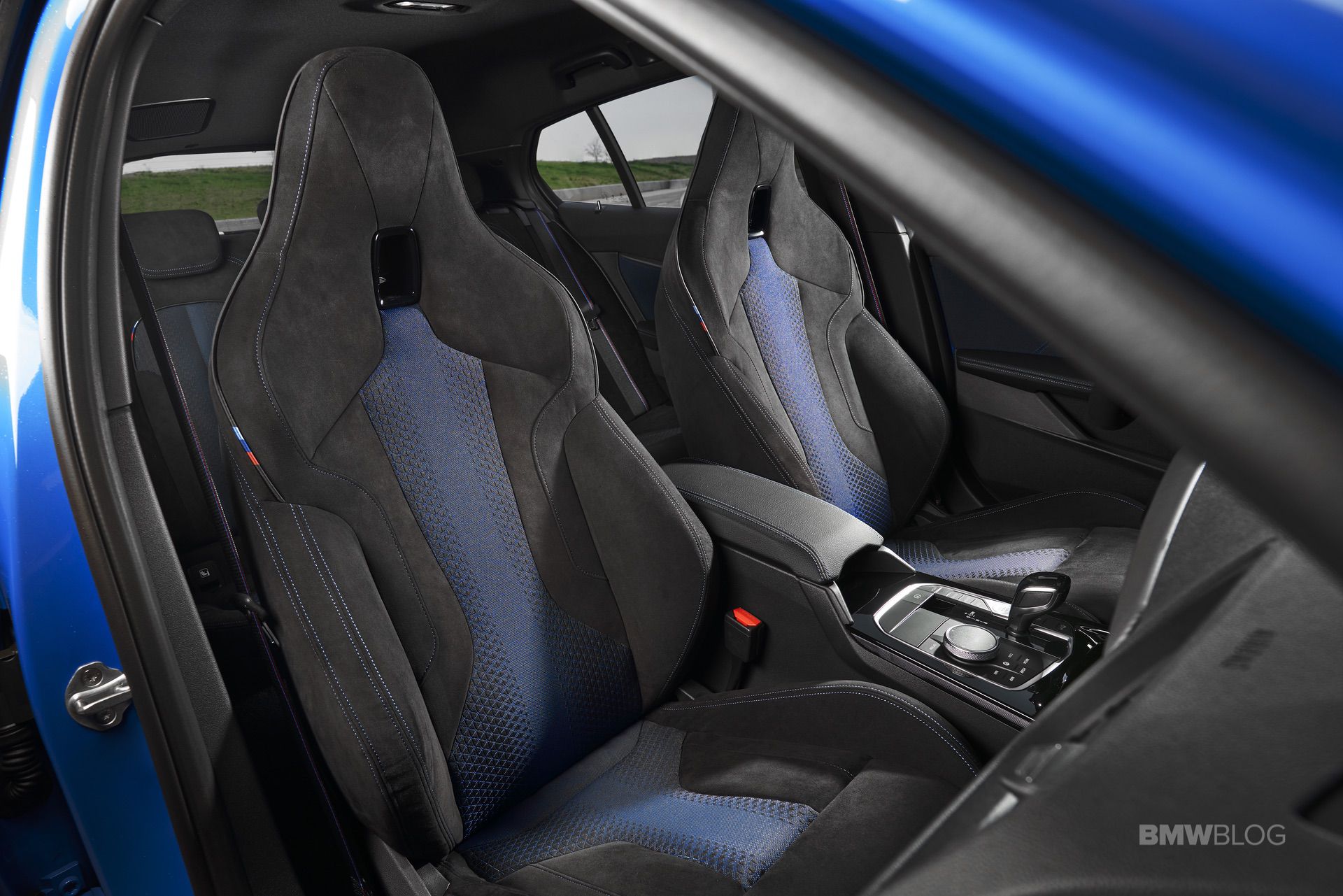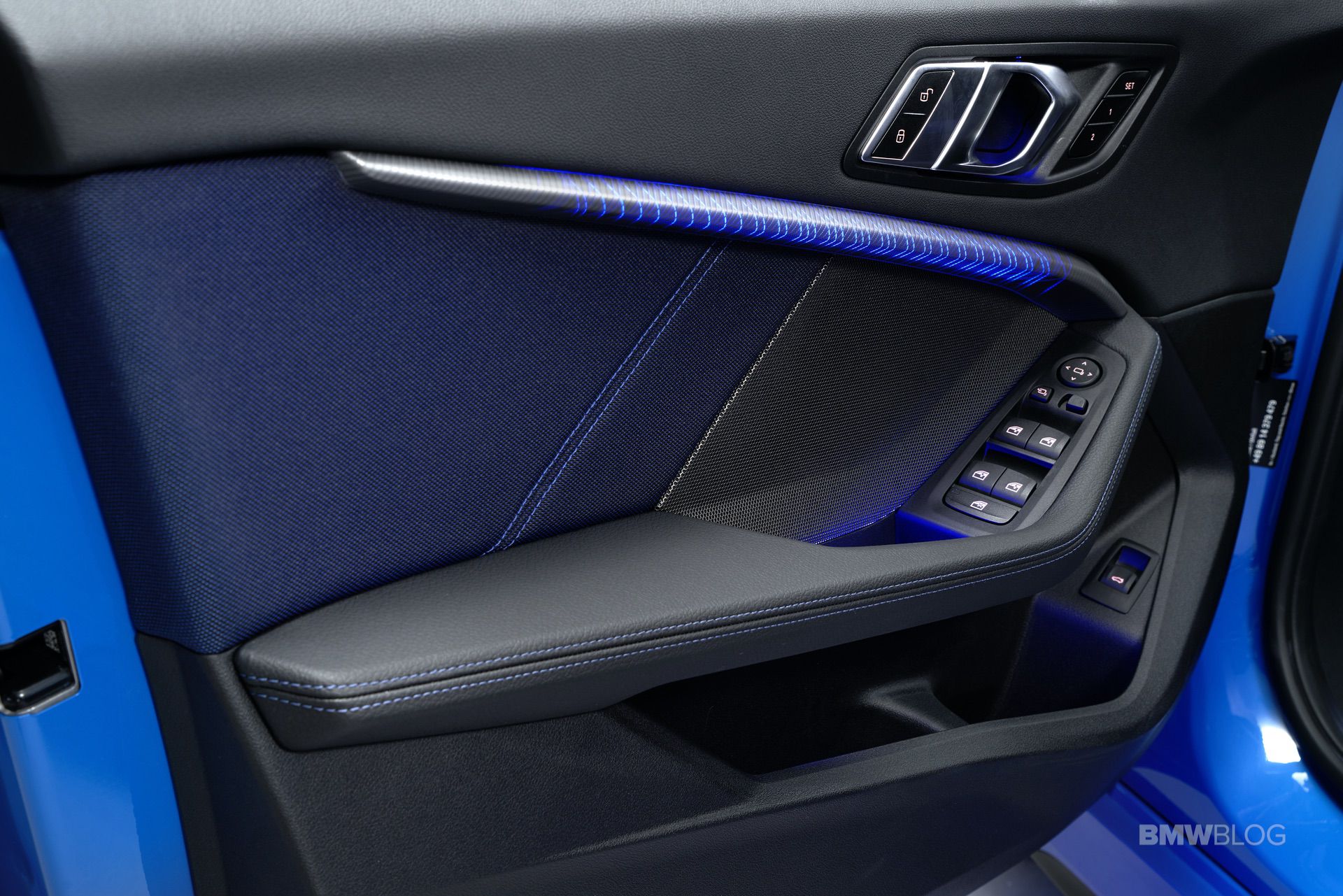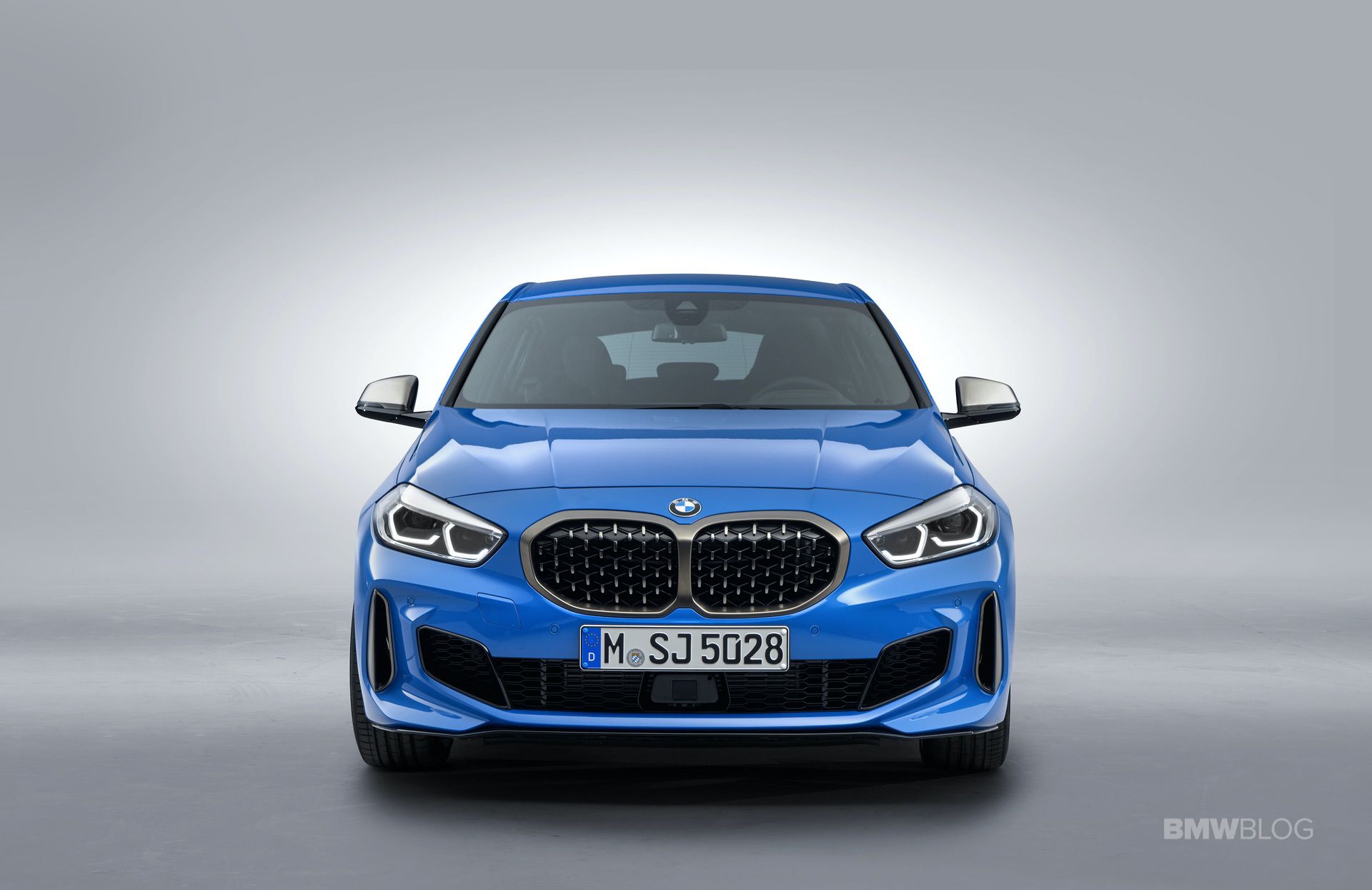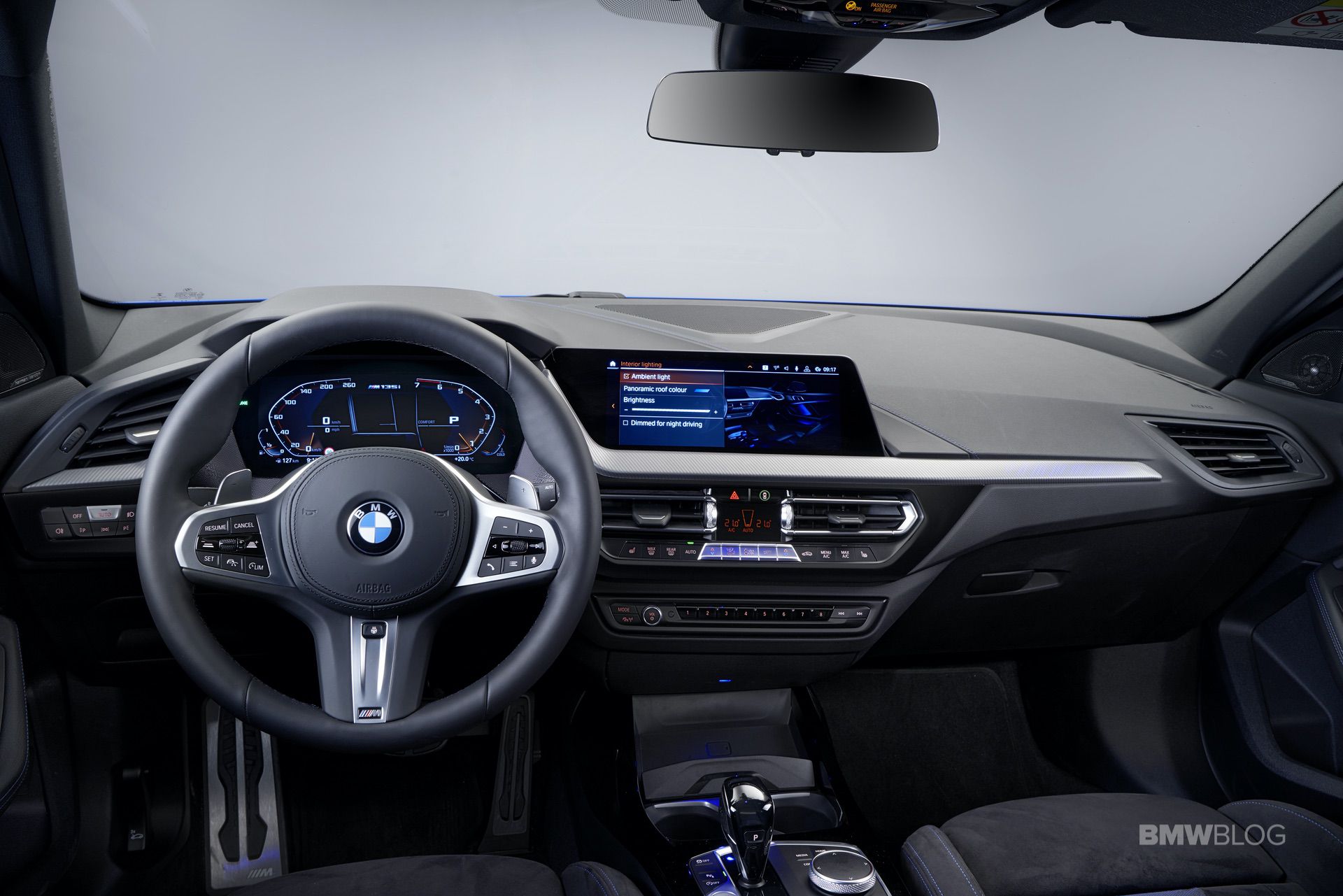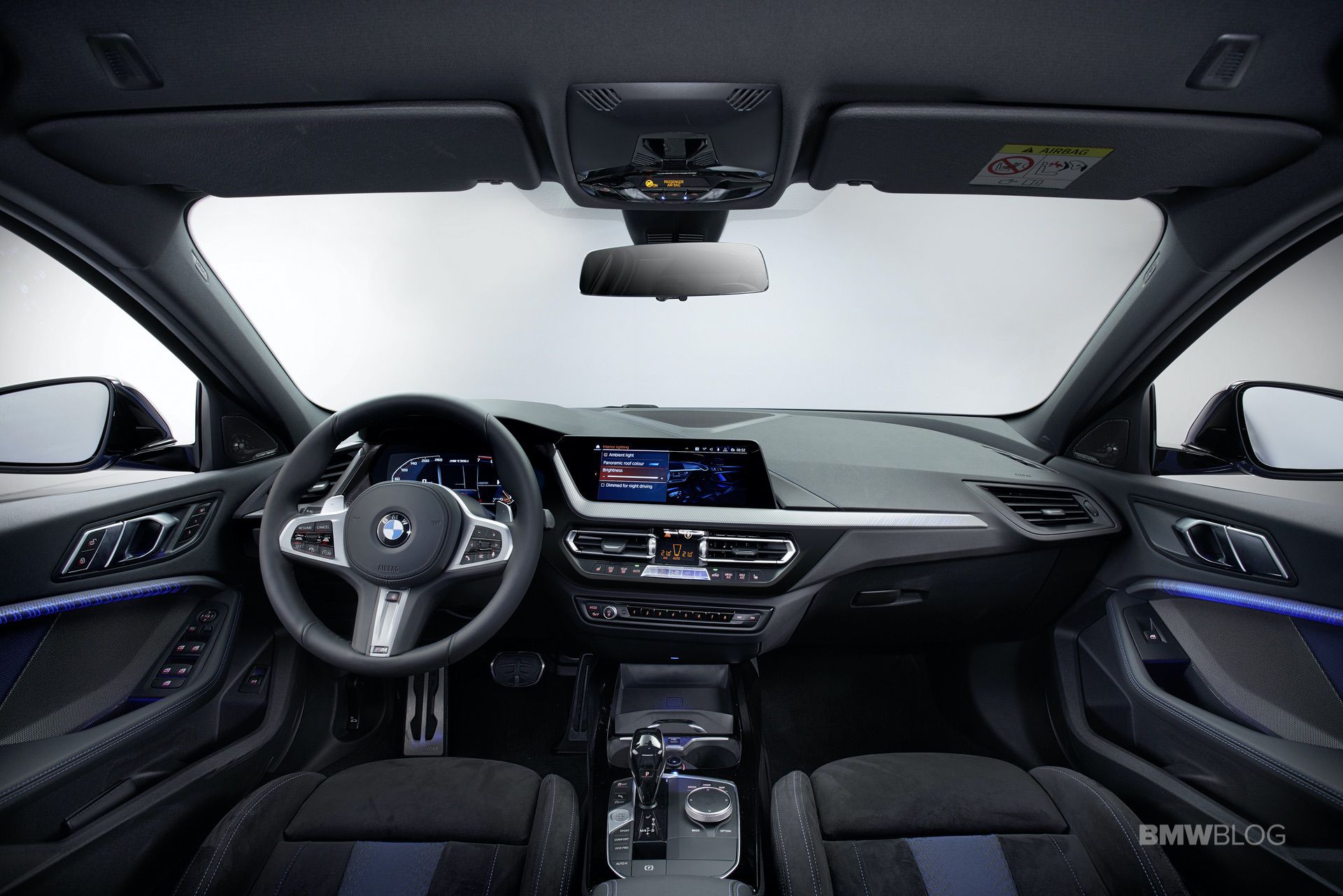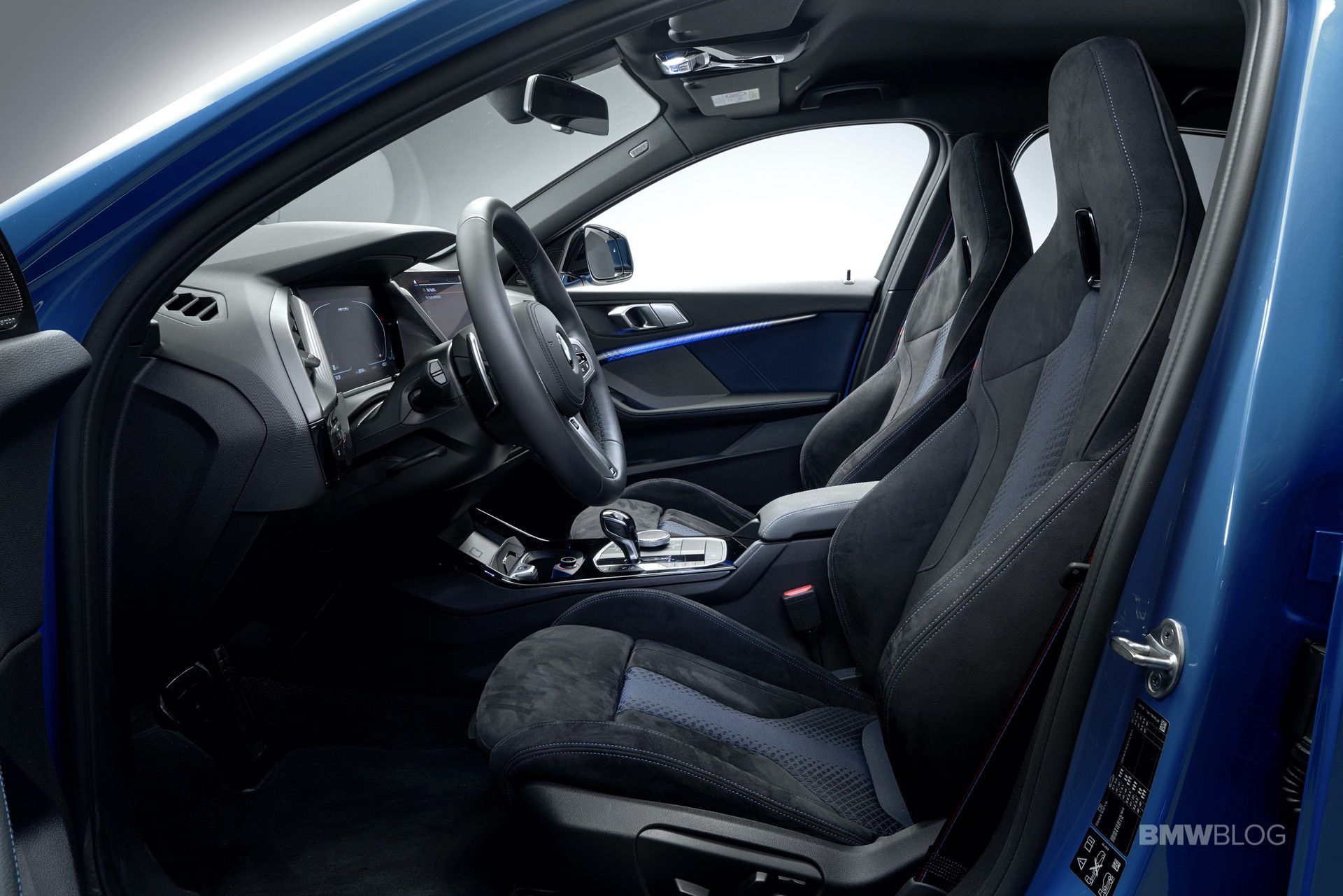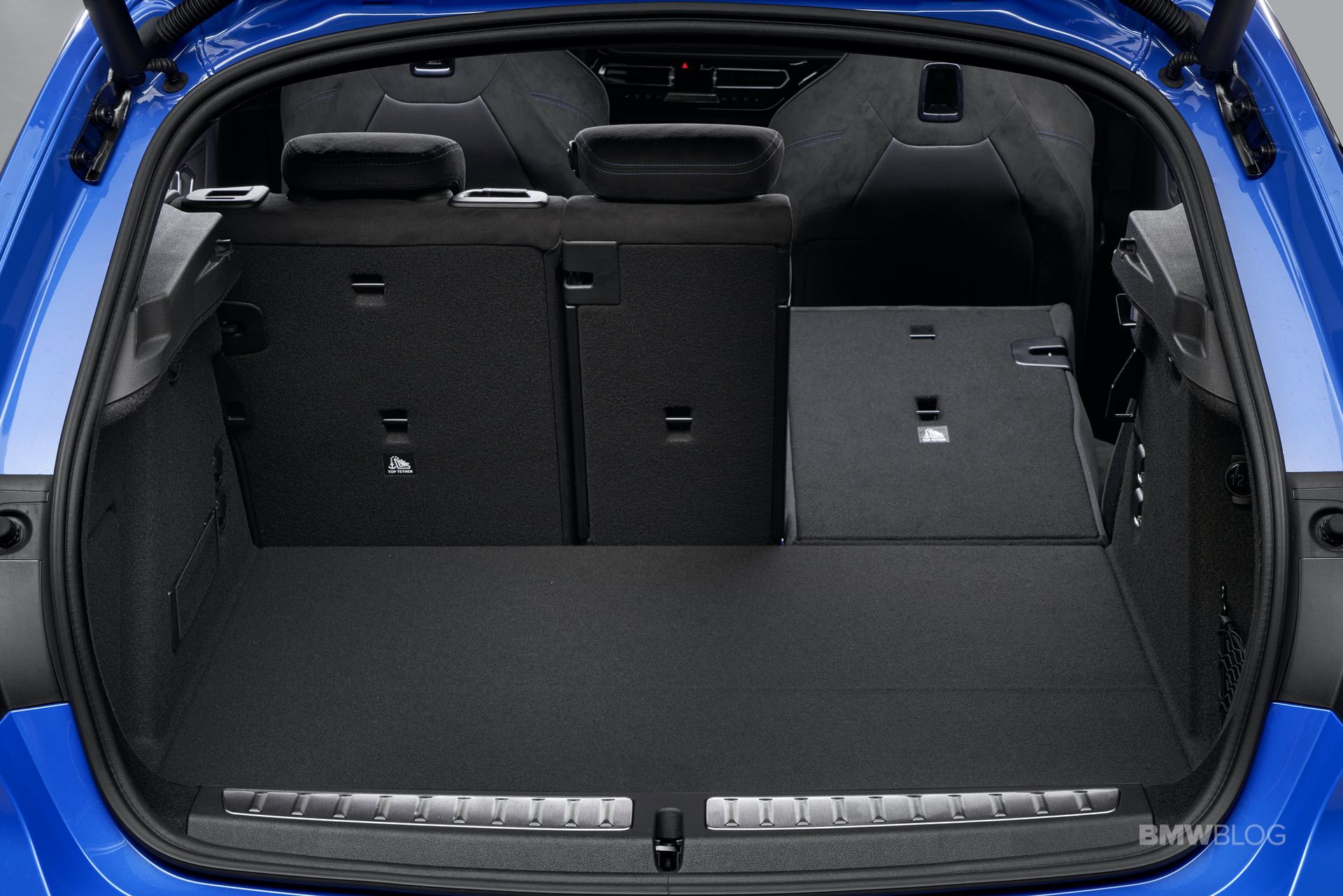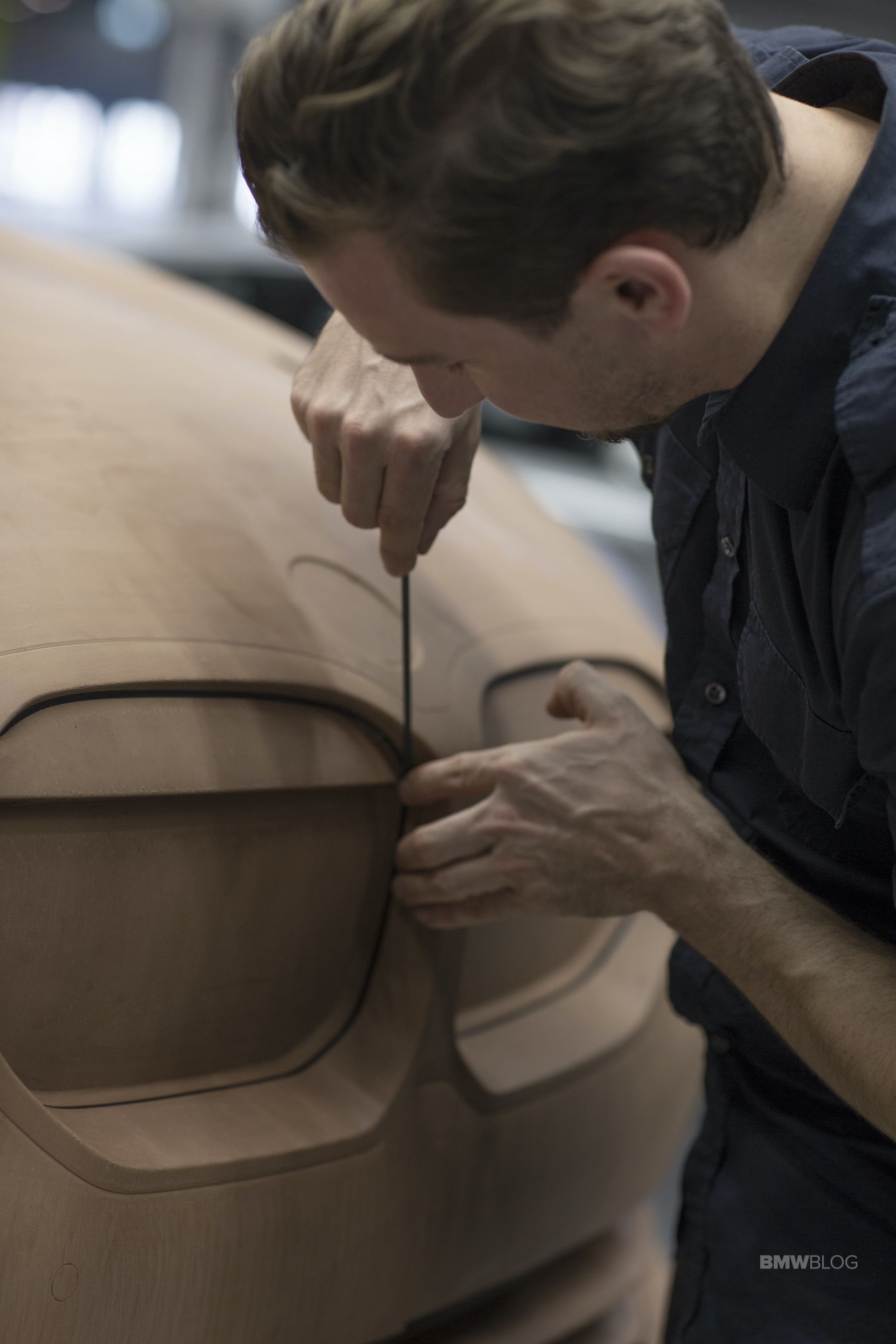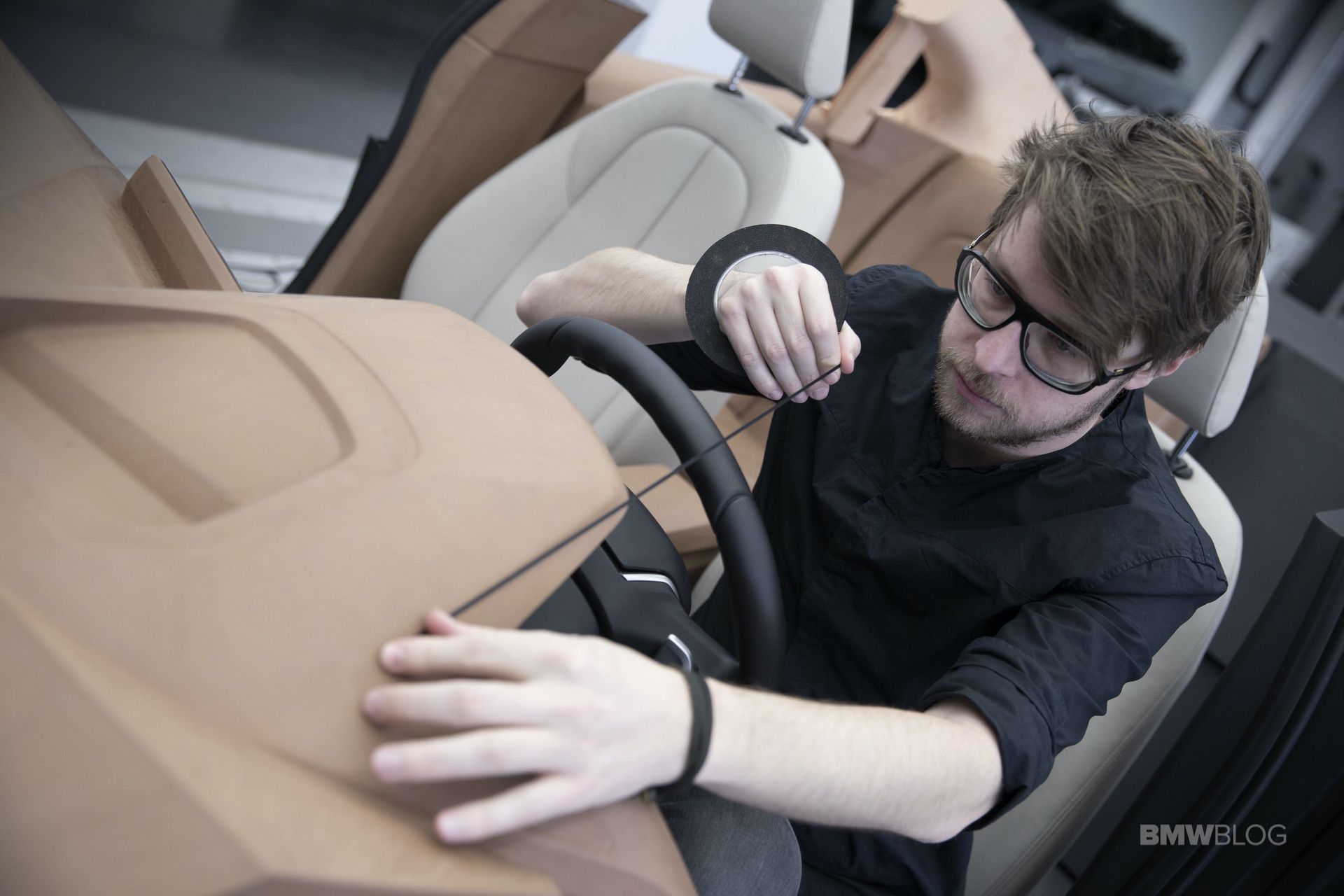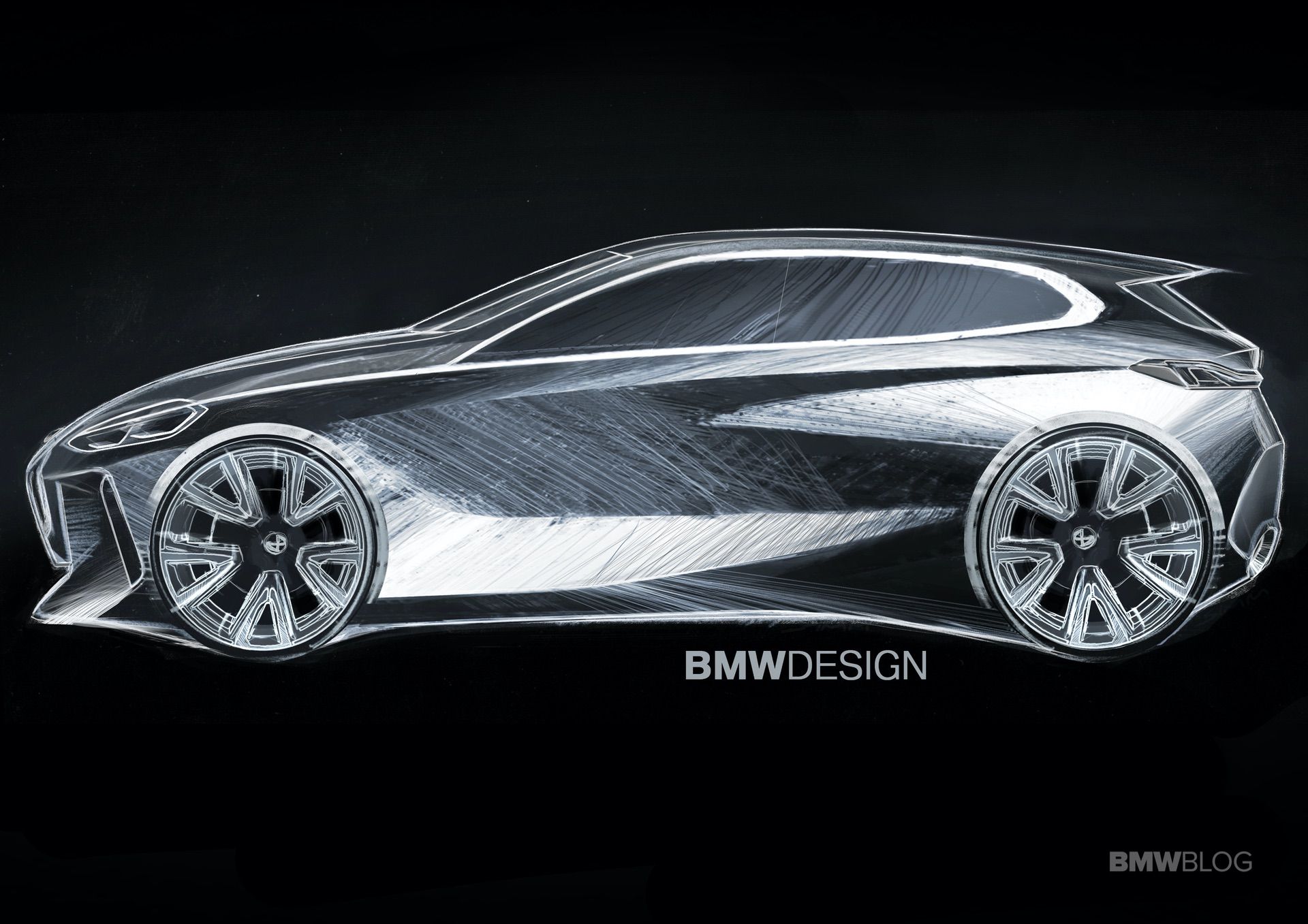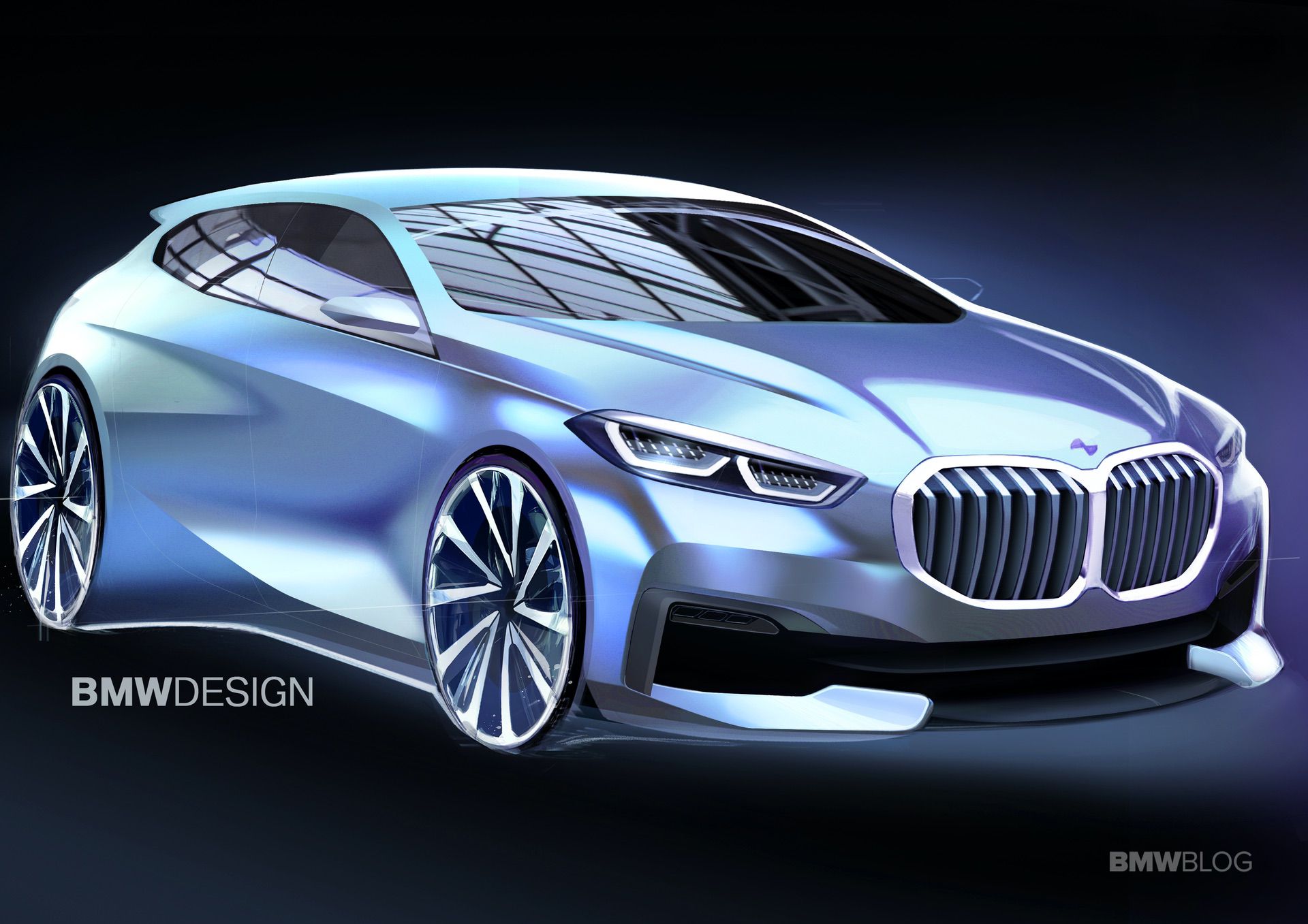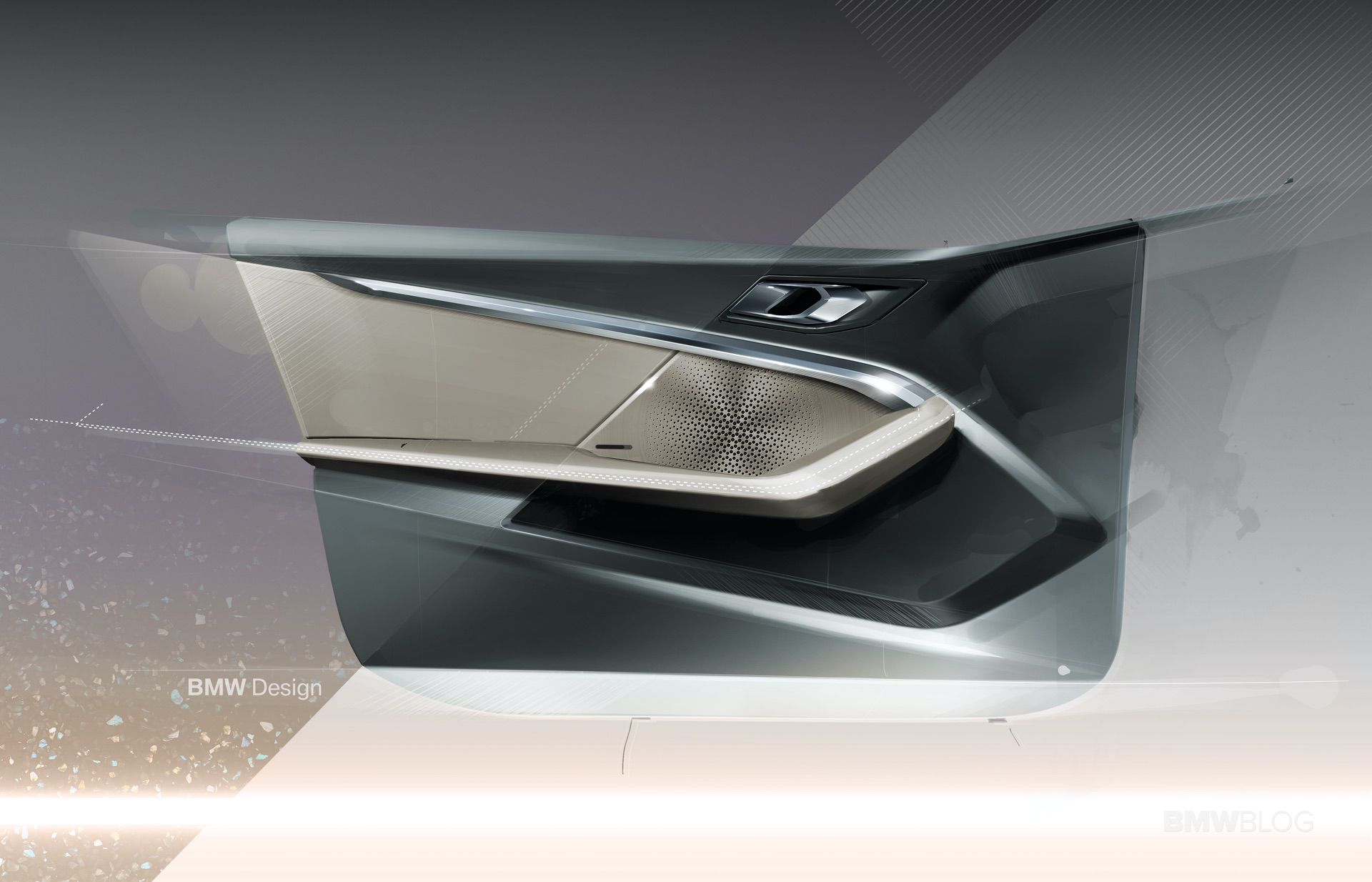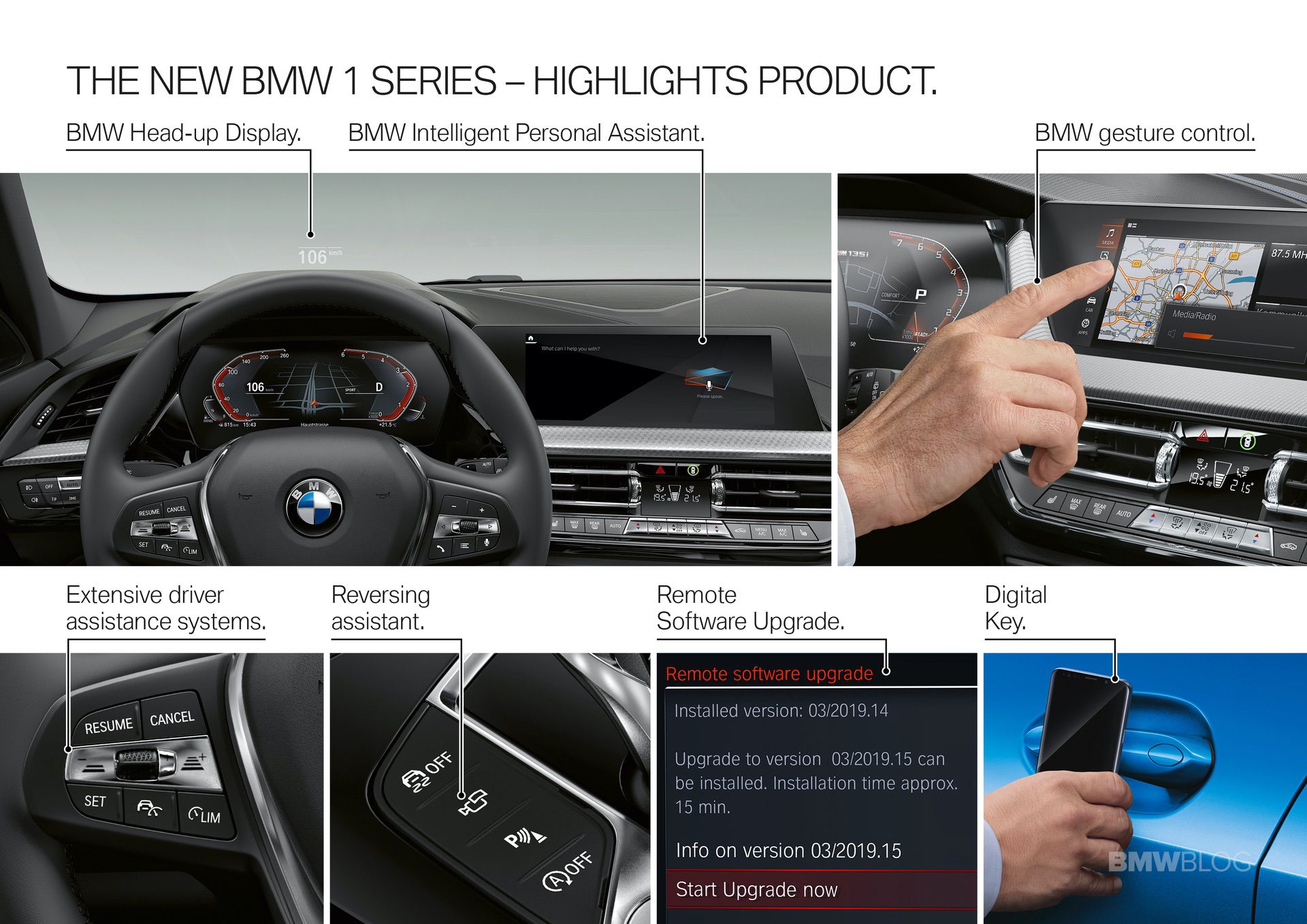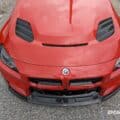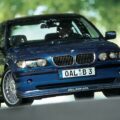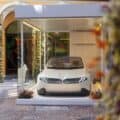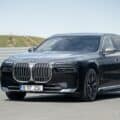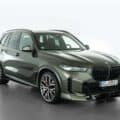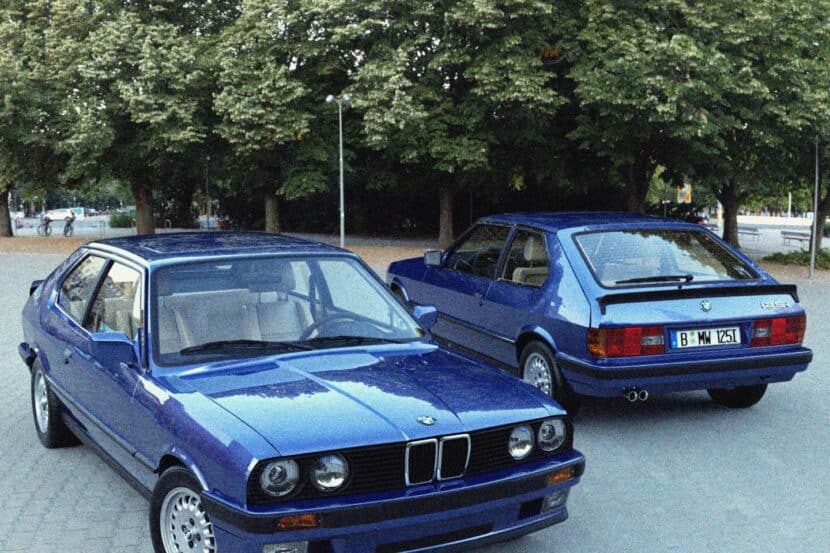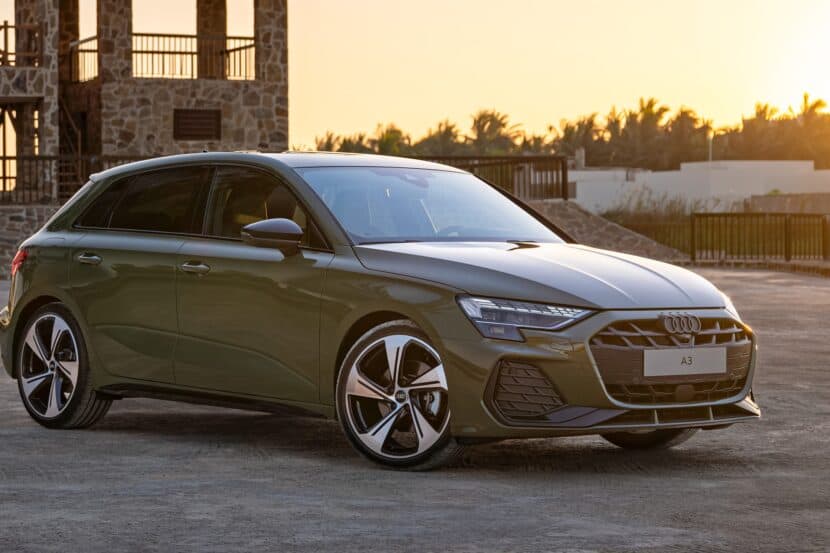With the introduction of the new 2019 BMW 1 Series Hatchback, the Bavarians from Munich enter a new phase in their history – the compact hot hatch is now their first generation with a front-wheel drive which puts it inline with similar offerings from Audi and Mercedes-Benz.
The changeover to the BMW front-wheel-drive architecture is reflected in the new proportions of the all-new BMW 1 Series. The bonnet is now shorter since the engine bay only needs to accommodate 3 and 4-cylinder engine, while the rear design gets a longer roofline. In the back, we’re also getting a wide tail with an athletic shoulder line above the rear wheel arches which BMW says that it emphasizes its, still, sporty character. Thanks to the traversal mounting of the engine, the new 1 Series offers significantly more space.
Making use of aluminium – for the bonnet and tailgate for instance – combined with high-strength steels has enabled BMW to shave as much as 30 kilograms off the weight of the new BMW 1 Series compared to its predecessor, at the same time as further increasing the bending and torsional stiffness of the body structure.
Design and Dimensions
At 4,319 millimeters, the new BMW 1 Series is five millimeters shorter than its predecessor. In terms of width (now 1,799 millimetres), this third-generation model has grown by 34 millimeters while its height (1,434 mm) has increased by 13 millimeters. At 2,670 millimeters, the wheelbase is 20 millimeters shorter than that of the predecessor model.
Design wise, the new 1 Series Hatchback comes with a new face. The characteristic BMW kidney grille is larger and merge in the middle, inline with the recent design language from BMW. The 1 Series M Performance Automobile – the BMW M135i xDrive – stands out with a distinctive kidney grille whose pronounced mesh design replaces the classical bars. Another distinguishing feature of the M135i xDrive is the additional insert fitted in each of the outer air intakes.
The headlights are also new, with a slimmer design. In the base version of the 1 Series, halogen headlights and the LED daytime driving lights fitted below them form the customary BMW “four-eyed” face. The optional full-LED lights – which can also be specified with adaptive functionality – are arguably better looking. A brushed aluminium element occupies the upper part of the headlight unit underneath the glass cover and along the side is “BMW LED” lettering.
BMW designers also worked hard to give the new 1 Series a shark-nose, a trait of past BMW models, as well as still offering the traditional Hofmeister Kink in the C-pillar. The typical BMW character lines also run across the 1 Series models, emphasizing its sporty allure.
L-shapped taillights can be found in the back with full-LED lights as an option. Concealed under the red glass cover are the turn-signal indicator, brake and tail lights, reversing lights and rear foglamp. The basic version of the rear lights adopts a similar look using incandescent bulbs. The tailpipes are finished in chrome with a diameter of 90 millimeters (100 mm and angle-cut on the BMW M135i xDrive).
The new BMW 1 Series is available with a wide range of new light-alloy wheels, including – for the first time – the option of wheels with a diameter of 19 inches. The base model has 16-inch steel or light-alloy wheels. The Luxury Line, Sport Line and M Sport models, meanwhile, are equipped as standard with 17-inch light-alloy wheels. And the BMW M135i xDrive is delivered from the factory with bespoke polished 18-inch light-alloy items. Newly designed 19-inch light-alloy wheels are optionally available for this and the M Sport model.
The panoramic roof is available as an option for the BMW 1 Series for the first time with a glass area of 0.7 square meters. The opening in the headliner measures 74 x 70 centimeters and has an electrically operated roller blind to provide shading. A favorable acoustic environment can be maintained with the roof open thanks to a net wind deflector and a comfort position for the glass roof panel which keeps wind noise to a minimum.
The front-wheel-drive architecture with transverse engines and a lower center tunnel offers the occupants noticeably more space than in the predecessor model. This applies especially to those in the rear seats. Access is easier and there is an extra 33 millimetres of kneeroom available. Rear headroom is up by no less than 19 millimetres when the outward opening panoramic sunroof – a new option for the BMW 1 Series – is fitted. Rear passengers also enjoy 13 millimeters more elbowroom, while the driver and front passenger can look forward to an extra 42 millimeters in this respect. Luggage compartment capacity rises by 20 litres to 380 litres (1,200 liters with the rear seat bench folded down). The minimum width of the luggage compartment has also increased by 67 millimeters. An electrically operated tailgate is now available for the BMW 1 Series for the first time.
The design of the 1 Series cabin is also new. The overall look and feel mimics the one in the new G20 3 Series, with a driver-oriented layout and new buttons. Access to the optional infotainment offering provided by the new BMW Operating System 7.0 – with optional gesture control – is via a large display grouping whose two large screens are available with a diagonal of up to 10.25 inches (with the BMW Live Cockpit Professional). The optional full-color 9.2-inch BMW Head-Up Display allows the driver to receive information without taking their eyes off the road.
The base BMW Live Cockpit and BMW Live Cockpit Plus including navigation system and Apple CarPlay preparation both have two classic analogue dials and a 5.1-inch, 4:3 portrait-format screen which displays information such as the car’s speed, the status of the driver assistance systems and navigation instructions.
The controls for the heating, air conditioning and new hexagonal air vents are grouped together in the centre console below the Control Display. With the Start/Stop button and gear selector lever now also located in the control panel in the lower section of the center console, all the controls relating to driving functions are clustered together in one area. Situated to the right is the iDrive Controller – or the iDrive Touch Controller if the BMW Live Cockpit Plus or higher is specified – used to control the infotainment system. In front of the selector lever is a practical stowage area which can be specified with the Wireless Charging option for smartphones.
The BMW 1 Series casts a new light on the trim strips for the instrument panel and door linings, which are finished as standard in matt Quartz Silver and Pearl-effect Chrome. As an option, customers can choose from another three high-quality trim surface designs – one of which is exclusive to the M Sport model and the BMW M135i xDrive.
Three different front seat variants and a wide choice of upholstery – from cloth to leather – are available for the BMW 1 Series. In base specification, the seats are upholstered in Anthracite-coloured Grid cloth. Cloth/Sensatec upholstery in Anthracite with grey highlights is available as an option, as is perforated Dakota leather in Black or Magma Red. All these variants are also available for the optional sports seats.
The Sport Line model includes sports seats with cloth/Sensatec upholstery and grey highlights while orange highlights are available as an option. The sports steering wheel in Sport Line cars (also included in the Luxury Line model) has a decorative aluminum-look insert. The standard seats or optional sports seats in this mode variant are upholstered in Dakota leather. The M Sport model and standard specification for the BMW M135i xDrive include the M Sport steering wheel and the Trigon/Sensatec sports seats in Black. This upholstery variant is enhanced with special BMW M piping and contrast blue stitching. For the sports seats, the Dakota leather is available in Black, Black with blue highlights and Magma Red with grey highlights. And BMW 1 Series customers can now order the M Sport model and BMW M135i xDrive with M Sport seats featuring an integral head restraint and extendable seat cushion. These are also available with upholstery in Trigon cloth and Alcantara, as well as Dakota leather in Black and Magma Red.
A choice of three suspension options.
Besides the standard suspension – which already has a dynamically inclined set- up and is specially tuned to the different engine variants – and the M Sport suspension with 10 mm reduction in ride height, the new BMW 1 Series can also be specified with the Adaptive suspension including VDC (Variable Damper Control) as an option. This particular variant lets the driver choose from two different damping response settings. The Driving Experience Control switch can be used to select either Comfort – for better ride comfort in poor road conditions, for instance – or Sport for a very sporty drive. The anti-roll bar mounting with high preload is included with both the Adaptive suspension and M Sport suspension. All new BMW 1 Series models from entry-level upwards have a multi-link rear axle.
Distinctive Packages
BMW also offers the new 1 Series with four equipment lines.
Advantage model.
The base version of the BMW 1 Series already represents a compelling proposition with its powerfully athletic form. The BMW kidney grille surround comes in High-gloss Chrome, while the grille bars have a High-gloss Black painted finish. The front air intakes and window graphic surrounds in matt Black create a sporty contrast. The exterior mirror caps and rear apron are both painted in body colour.
Sport Line model.
Black trim elements in the front apron of the Sport Line model have a visually enlarging effect on the air intakes, which – like the BMW kidney grille bars and exterior mirror caps – are finished in High-gloss Black. This accentuates the width of the car. The BMW kidney grille surround is in gleaming chrome, while the window graphic surrounds feature BMW Individual high-gloss Shadow Line trim. The rear apron has a black finish.
Luxury Line model.
The Luxury Line model uses additional design elements in Aluminium satinated to bring out the car’s exclusive character. These include the bars in the BMW kidney grille, special trim elements for the air intakes and an accent strip on the rear apron. The window graphic in Aluminium satinated makes a suitably classy impression, and the central front air intake and mirror caps are both painted in body colour.
M Sport model.
The M Sport model takes the BMW 1 Series another stylistic step closer to the range-topping BMW M135i xDrive. Particularly eye-catching features include the front apron with specially sculpted air intakes and High-gloss Black trim, plus the BMW M rear apron likewise in High-gloss Black. The rear bumper also incorporates the apertures through which air is channelled out of the rear wheel arches. As on the Luxury Line model, the BMW kidney grille bars have an Aluminium satinated finish and the mirror caps are painted in body colour. The window graphic surrounds have BMW Individual high-gloss Shadow Line trim.
Engines and Transmissions
The top model is the M135i xDrive which uses the most powerful four-cylinder engine, extracting 225 kW (306 hp) from its 2.0-liter displacement between 5,000 and 6,250 rpm with the help of BMW TwinPower Turbo technology. Its peak torque of 450 Nm (332 lb-ft) comes on stream at 1,750 rpm and stays there up to 4,500 rpm. The flagship model races to 100 km/h (62 mph) from rest in just 4.8 seconds (4.7 seconds with M Performance package, available from 11/2019), while top speed is limited to 250 km/h (155 mph). Despite such breathtaking performance figures, the BMW M135i xDrive makes do with 7.1 – 6.8 liters of fuel per 100 kilometers (39.8 – 41.5 mpg imp) on the combined cycle and emits just 162 – 155 grams of CO2 per kilometer.
Three diesel units will be available for the new BMW 1 Series from launch, all of which come with a diesel particulate filter, NOx adsorption catalyst and SCR (Selective Catalytic Reduction) technology. Major upgrades to the turbocharger and common-rail direct injection system have brought about a reduction in fuel consumption – and therefore CO2 emissions – of around five per cent, at the same time as lowering other pollutant emissions.
The BMW 116d (fuel consumption combined: 4.2 – 3.8 l/100 km [67.3 – 74.3 mpg imp]; CO2 emissions combined: 110 – 100 g/km*) is powered by a 1.5-liter three-cylinder engine that already complies with the stringent Euro 6d emissions standard. The BMW 118d (fuel consumption combined: 4.4 – 4.1 l/100 km [64.2 – 68.9 mpg imp]; CO2 emissions combined: 116 – 108 g/km*) and BMW 120d xDrive divide their two-litre displacement between a quartet of cylinders and meet the Euro 6d-TEMP emissions standard.
The BMW 116d produces 85 kW (116 hp) at 4,000 rpm and makes its maximum torque of 270 Nm (199 lb-ft) available between 1,750 and 2,250 rpm. This is sufficient for a top speed of 200 km/h (124 mph) and a 0 to 100 km/h (62 mph) time of 10.3 seconds (10.1 seconds with the seven-speed Steptronic dual-clutch transmission). Combined fuel consumption stands at 4.2 – 3.8 liters per 100 kilometers (67.3 – 74.3 mpg imp) equating to CO2 emissions of 110 – 100 grams per kilometer.
The output of the BMW 118d peaks at 110 kW (150 hp), also at 4,000 rpm, while the maximum torque of 350 Nm (258 lb-ft) is on tap from 1,750 to 2,500 rpm. It burns 4.4 – 4.1 litres of diesel for every 100 kilometres (64.2 – 68.9 mpg imp) on the combined cycle and emits 116 – 108 grams of CO2 per kilometre. The BMW 118d completes the 0 to 100 km/h (62 mph) sprint in 8.5 seconds (8.4 seconds with eight-speed Steptronic transmission) and reaches a top speed of 218 km/h / 135 mph (216 km/h / 134 mph).
The BMW 120d xDrive boasts BMW xDrive intelligent all-wheel drive and the eight-speed Steptronic automatic transmission as standard. Its four-cylinder power unit produces 140 kW (190 hp) at 4,000 rpm and places its peak torque of 400 Nm (295 lb-ft) at the driver’s disposal between 1,750 and 2,500 rpm. The car can therefore sprint to 100 km/h (62 mph) from rest in 7.0 seconds, on its way to a top speed of 230 km/h (143 mph). At the same time, it returns combined fuel consumption of 4.7 – 4.5 litres per 100 kilometres (60.1 – 62.8 mpg imp) while emitting 124 – 117 grams of CO2 per kilometer.
Three and four-cylinder gasoline engines are also available. The BMW 118i (fuel consumption combined: 5.7 – 5.0 l/100 km [49.6 – 56.5 mpg imp]; CO2 emissions combined: 129 – 114 g/km) is the entry- level model in the updated range of petrol engines.
In the 1.5-liter three-cylinder engine powering the BMW 118i, these measures combine to cut CO2 emissions by 29 g/km at the same time as boosting maximum power output by 3 kW (4 hp) to 103 kW (140 hp) between 4,600 and 6,500 rpm. The power unit – which is five kilograms lighter than the one it replaces – generates peak torque of 220 Nm (162 lb-ft) from 1,480 rpm all the way up to 4,200 rpm. An overboost function briefly puts an extra 10 Nm (7 lb-ft) on tap in fourth gear or higher. The BMW 118i accelerates from 0 to 100 km/h (62 mph) in 8.5 seconds and goes on to reach a top speed of 213 km/h (132 mph). It posts combined fuel consumption of 5.7 – 5.0 liters per 100 kilometers (49.6 – 56.5 mpg imp) with CO2 emissions of 129 – 114 grams per kilometer.
In the BMW 116d, BMW 118d and BMW 118i, the engine’s power is relayed as standard via an upgraded six-speed manual gearbox. New to the BMW 1 Series line-up is the highly sophisticated seven-speed Steptronic dual-clutch transmission, which can be specified as an option for the BMW 116d and the BMW 118i. The eight-speed Steptronic transmission is fitted as an option in the BMW 118d (and as standard in the BMW 120d xDrive) and the eight- speed Steptronic Sport transmission in the BMW M135i xDrive.
Driver Assistance Systems
The new, third-generation BMW 1 Series benefits from an array of new, innovative driver assistance systems filtering down to the premium compact BMW from higher model classes for the first time. The optional Cruise Control with braking function makes life easier on long- distance journeys by automatically accelerating or slowing the car to maintain the desired speed set by the driver. The Active Cruise Control system with Stop & Go function goes one step further by not just maintaining the chosen cruising speed, but also automatically keeping a safe distance from vehicles travelling ahead. The cruising speed can be set manually or imported from the traffic sign recognition system. The system is operational at speeds of up to 160 km/h (99 mph) and is able to brake models with an automatic transmission to a stop if necessary – and also pull away again, either by itself or at the driver’s request, depending on how long the car is stationary for. On models with a manual gearbox, the system works at speeds between 30 and 160 km/h (19 – 99 mph).
Standard equipment in Europe includes collision and pedestrian warning with city braking function, which also alerts the driver to the presence of cyclists. Depending on the situation, the system can bring the BMW 1 Series to a halt, thereby avoiding a collision or minimising its consequences. Also fitted as standard is the Lane Departure Warning system with active lane return, which is operational from 70 to 210 km/h (44 – 130 mph). The optional Driving Assistant additionally comprises the Lane Change Warning system, which prompts the driver to guide the car back onto the correct path at speeds from 20 to 250 km/h (12 – 155 mph) by means of a visual warning and, if necessary, a steering input. The Driving Assistant’s remaining functions include the Proactive Driving Assistant, rear collision warning and crossing traffic warning, which reduces the risk of a collision when reversing into roads obstructed from the driver’s view.
BMW Head-Up Display and Parking Assistant make their BMW 1 Series debut
The BMW 1 Series is now offered with the option of the BMW Head-Up Display. This system projects driving-related information onto an area of the windscreen measuring 9.2 inches in size. Also new is the reversing assistant which offers the highly convenient option of automated reversing in confined spaces or situations where the driver does not have a clear view, such as multi-story car parks or entrances to courtyards. To do this, it stores the steering movements for any section the car has just driven forward along at no more than 36 km/h (22 mph). The system is then able to reverse the vehicle for distances of up to 50 metres by steering it along exactly the same line it took when moving forward. All the driver has to do is operate the accelerator and brake pedals and monitor the vehicle’s surroundings. The reversing assistant can back the car up at a maximum 9 km/h (5.5 mph).
Connectivity
For the first time, the BMW 1 Series family will include the the BMW Digital Key and BMW Intelligent Personal Assistant. Now, the smartphone is also able to replace a conventional car key for BMW 1 Series drivers. If the Comfort Access option is specified, the BMW Digital Key allows the car to be locked and unlocked from a smartphone using Near Field Communication (NFC) technology. Holding the smartphone up to the door handle opens the car – even if the phone battery is dead. The engine can be started as soon as the phone has been placed in the smartphone tray or wireless charging tray.
The BMW Digital Key is available for top-of-the-range NFC-capable Samsung Galaxy smartphones running Android 8.0 and above. Alternatively, the BMW Key Card can be used.
The BMW Intelligent Personal Assistant first seen in the BMW 3 Series Sedan also forms part of the control concept for the new BMW 1 Series. Uttering the short prompt “Hey BMW” allows drivers to operate their car, access its functions and obtain information simply by speaking.
The third generation of the BMW 1 Series will be unveiled to the public for the first time on 25 – 27 June 2019 on the new BMW Group #NEXTGen presentation platform at BMW Welt in Munich. Hosting the show premiere of the new BMW 1 Series, meanwhile, will be the IAA event in Frankfurt am Main in September 2019. The worldwide launch will get underway on September 28th, 2019.
BMW 118i and M135i xDrive
2020 BMW 118i in Mineral White
2020 BMW 118i Studio Shots
2020 BMW M135i xDrive in Misano Blue
2020 BMW M135i xDrive Studio Shots
2020 BMW 1 Series Design Sketches
2020 BMW 1 Series Product Highlights


